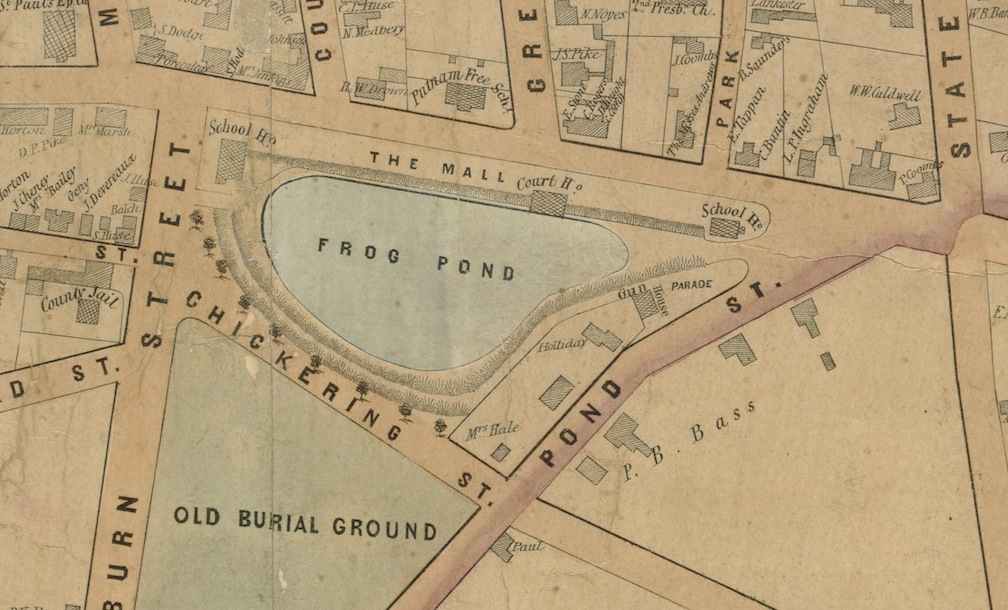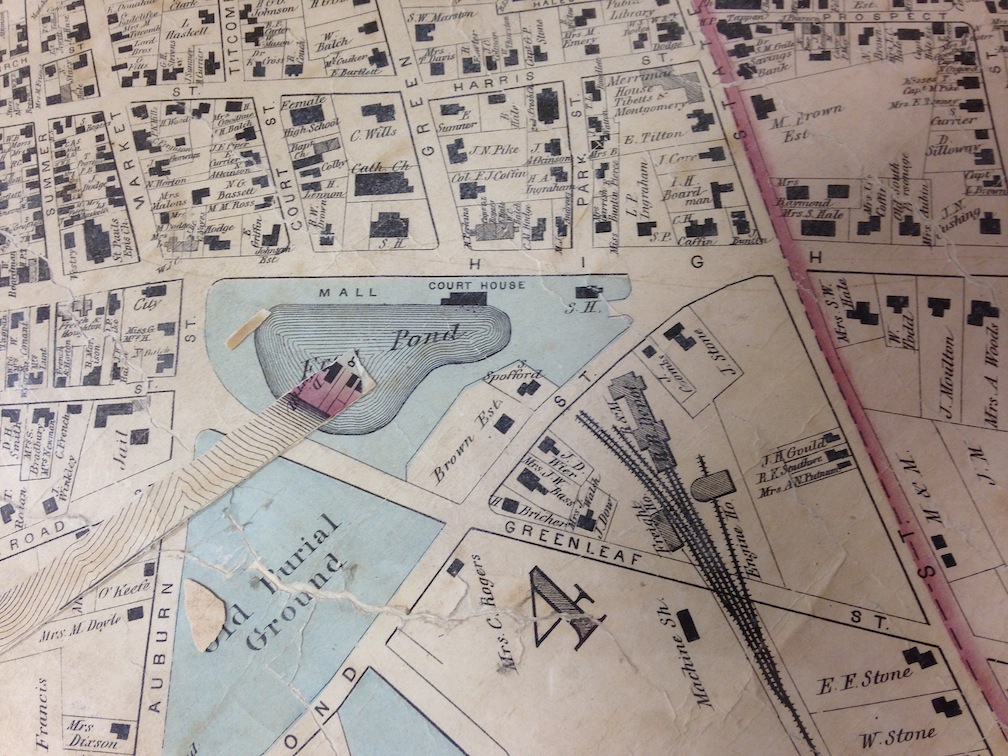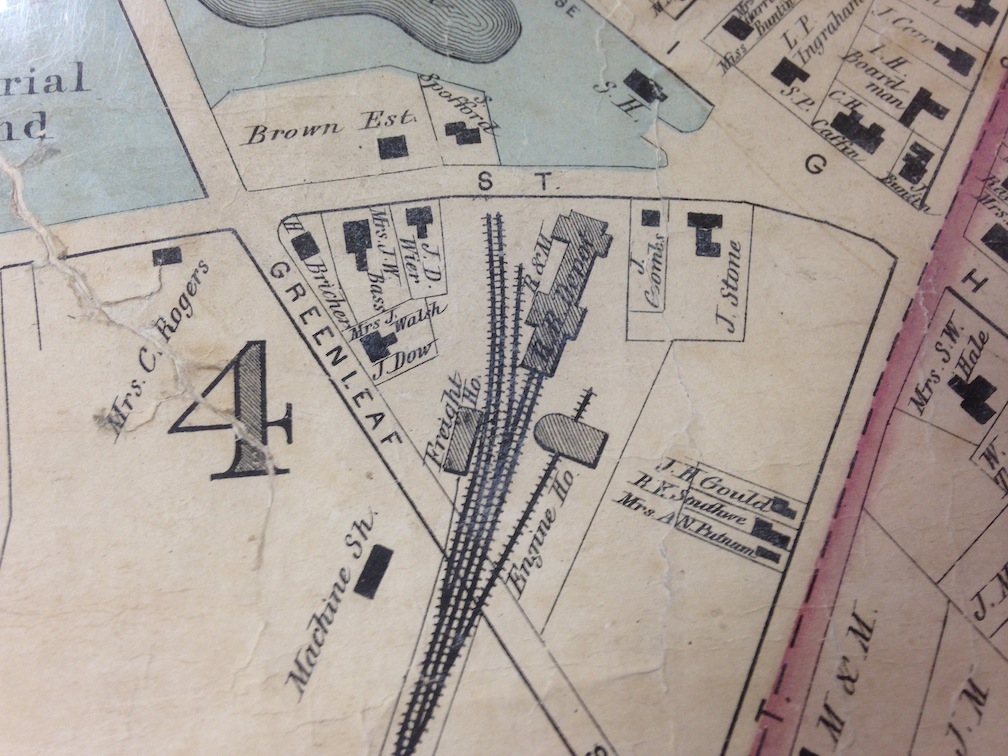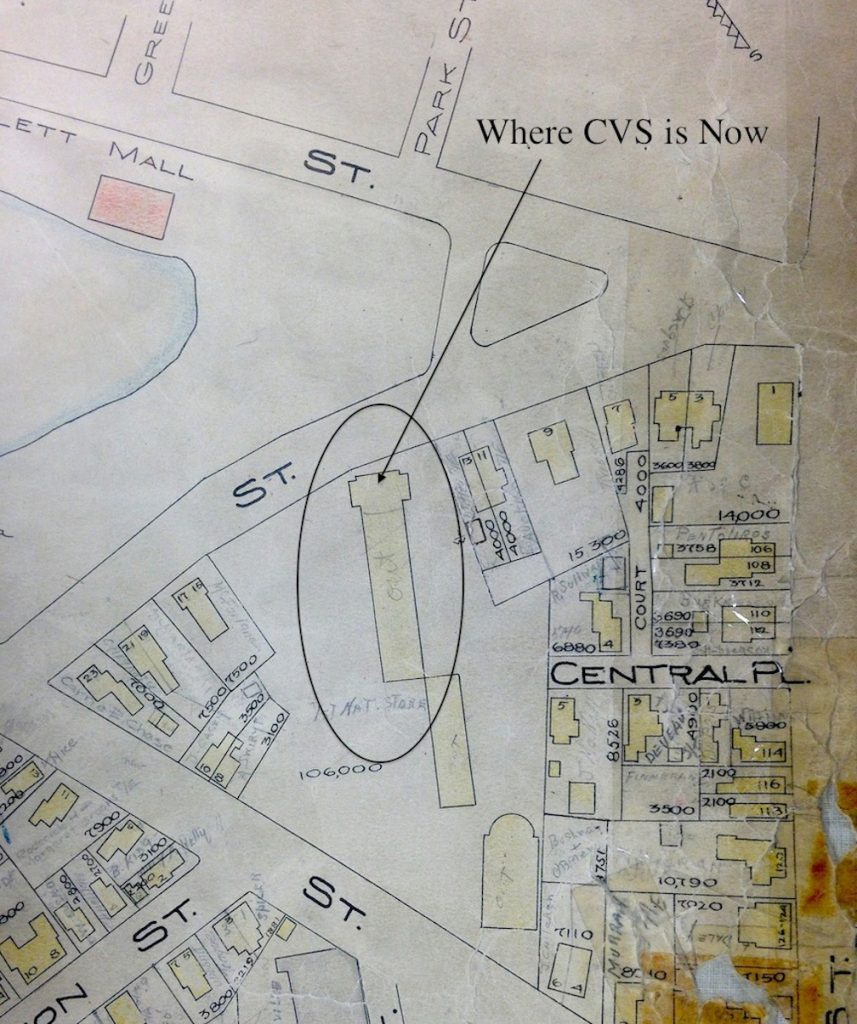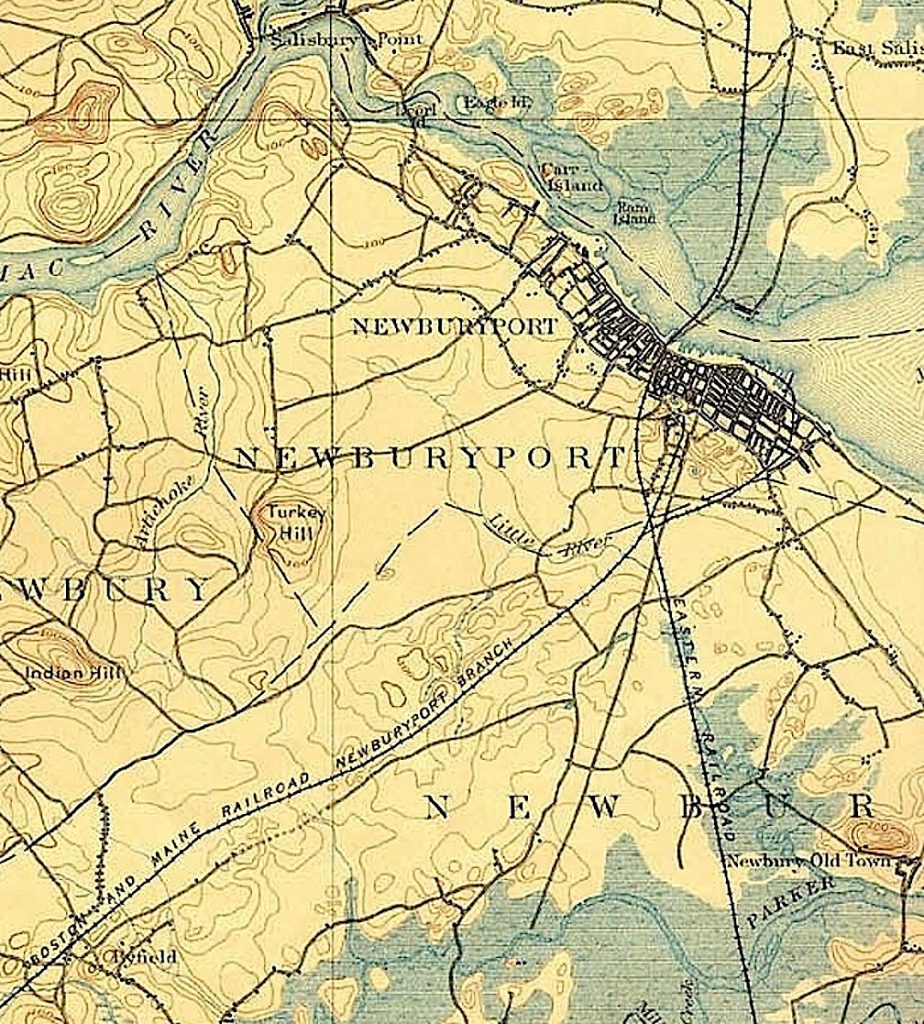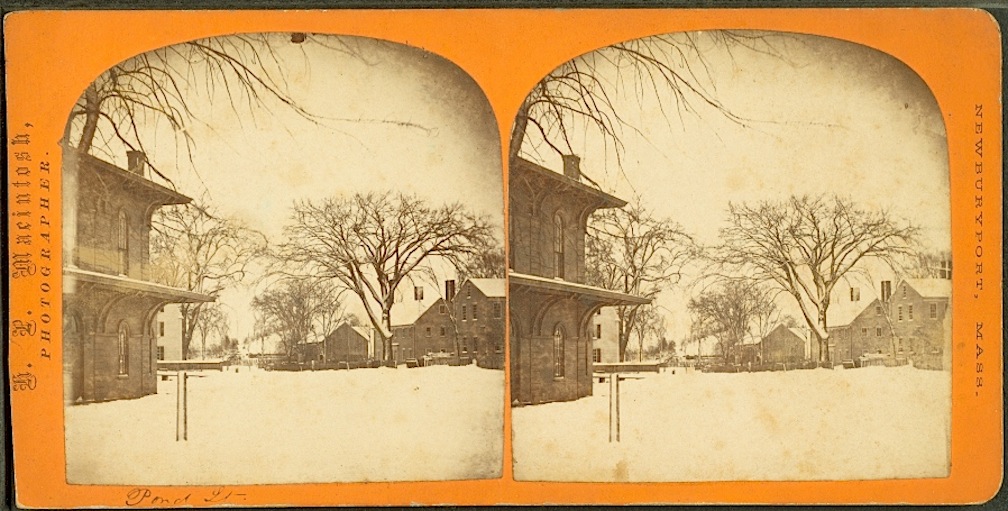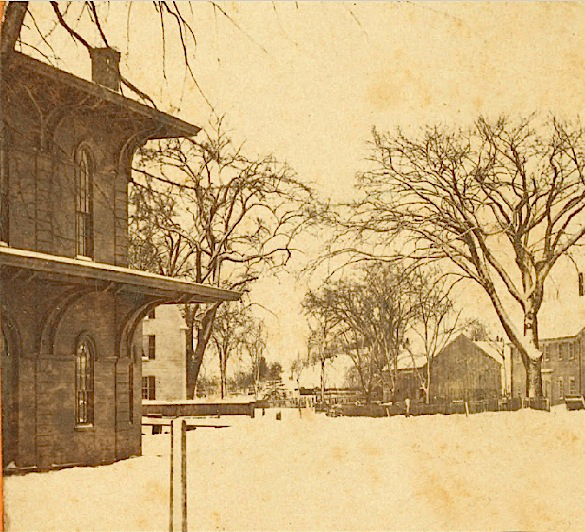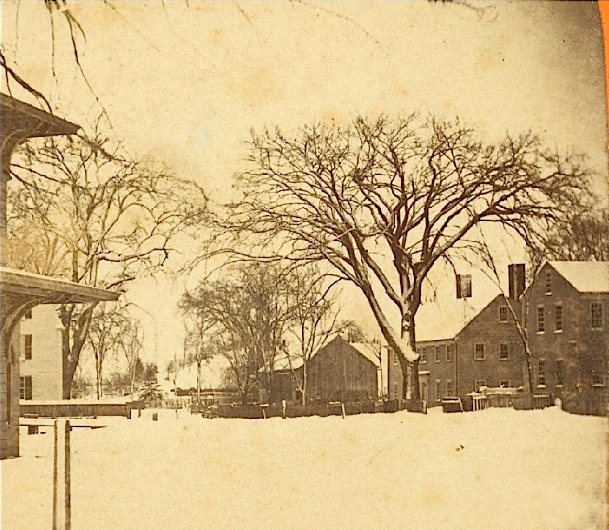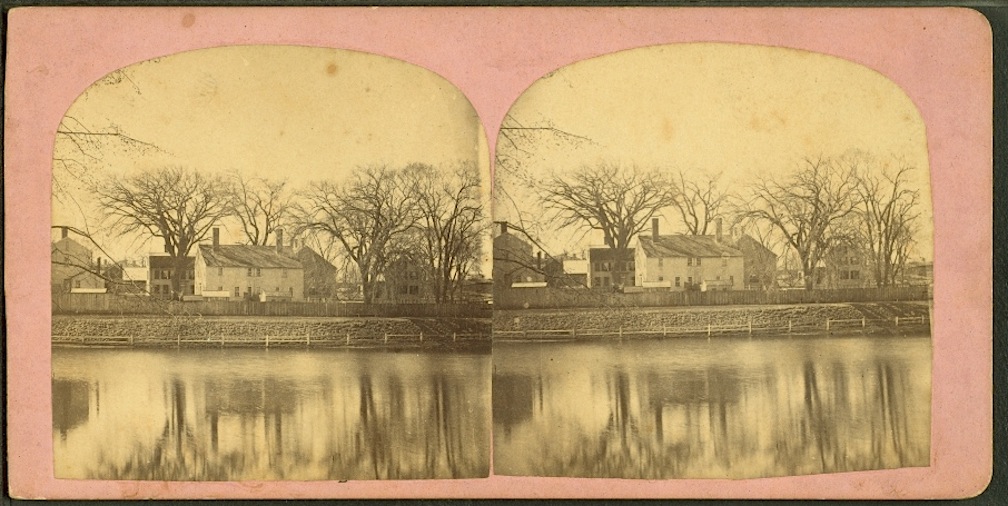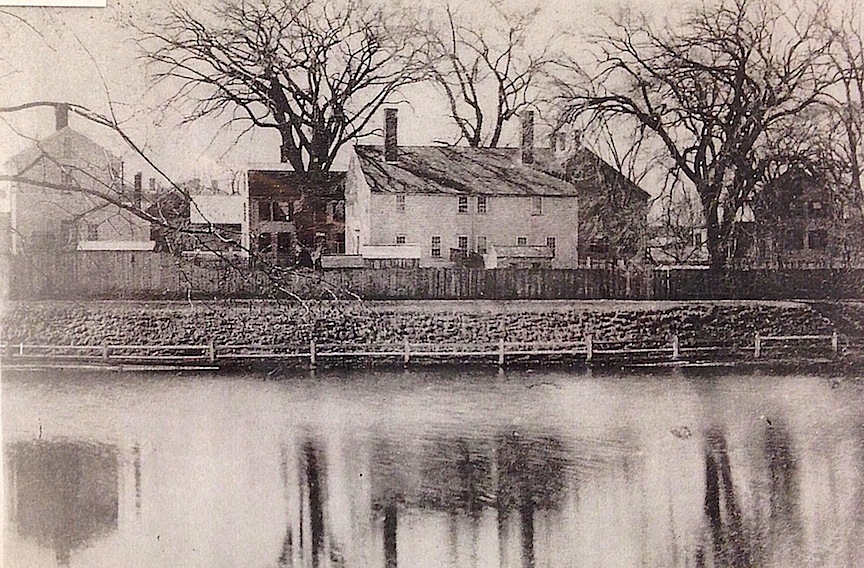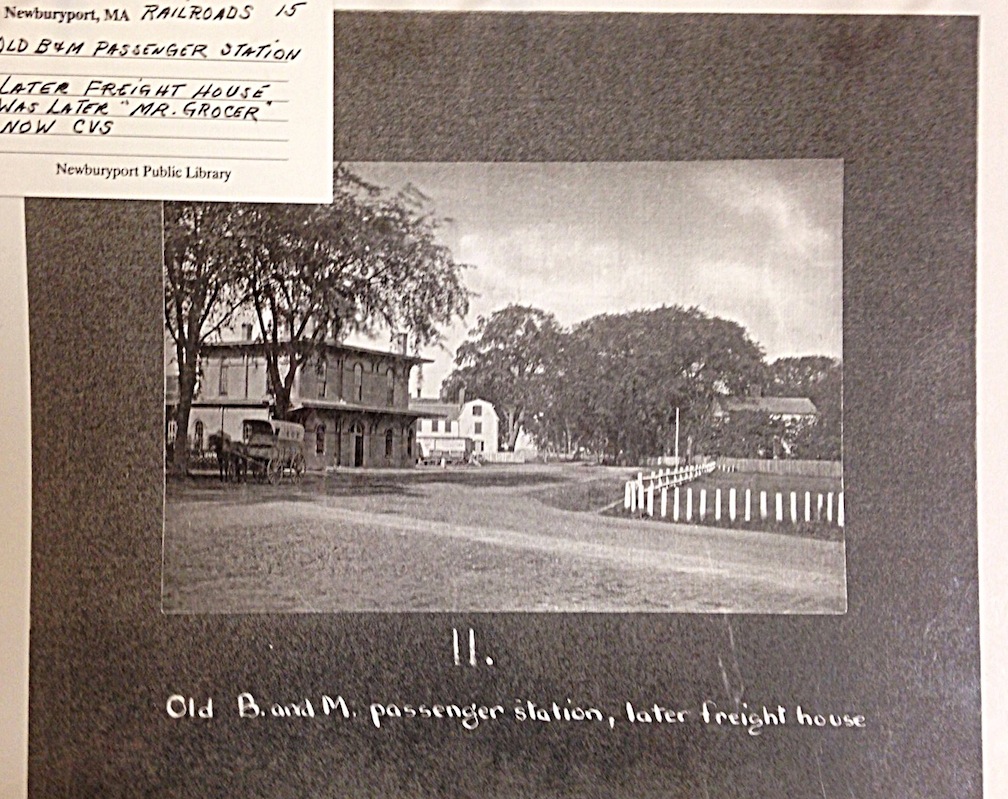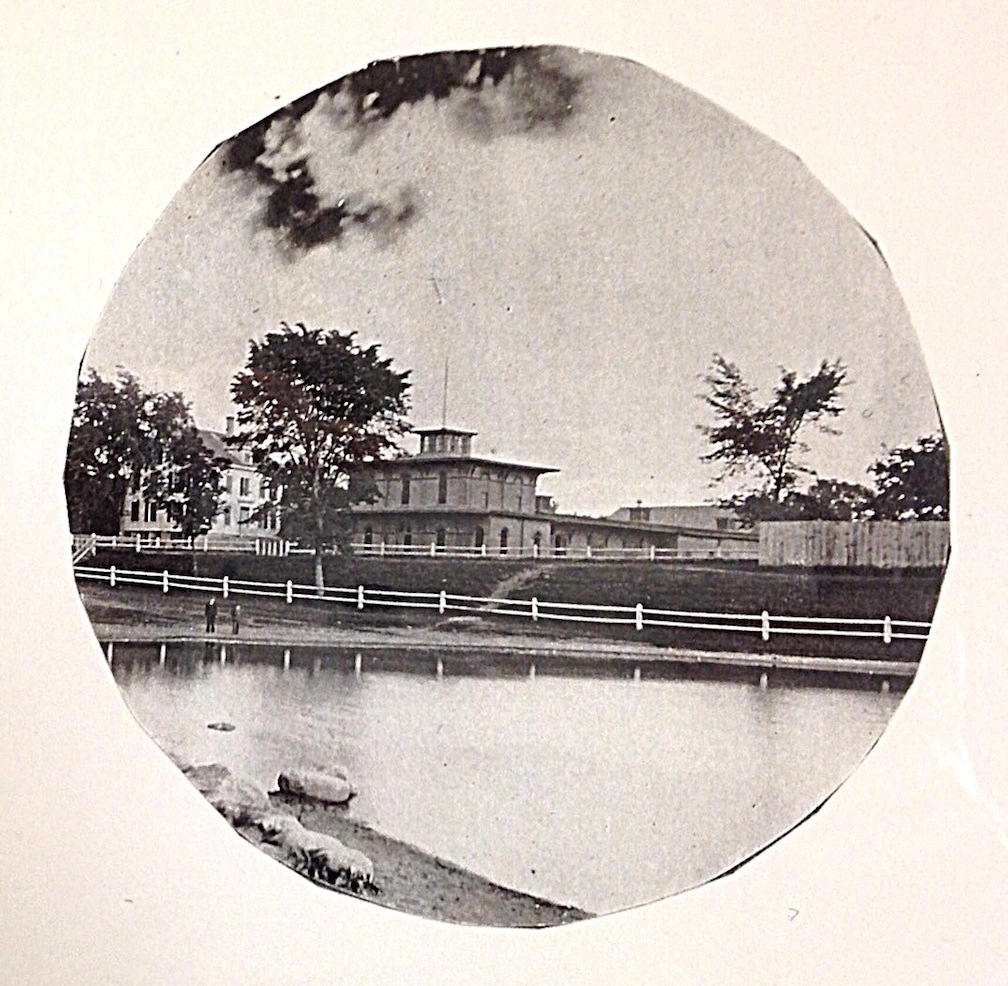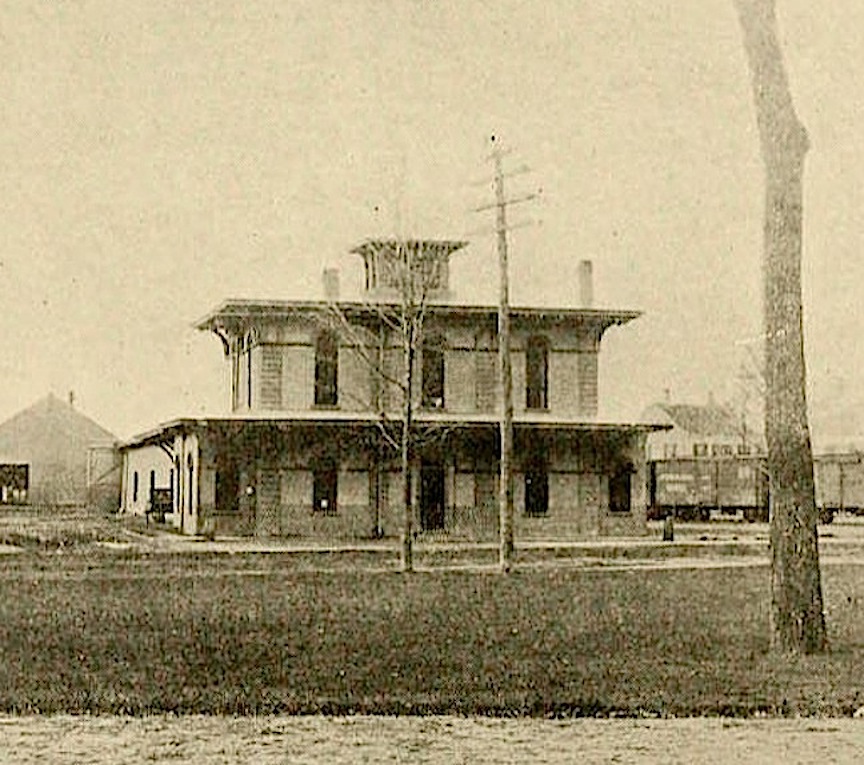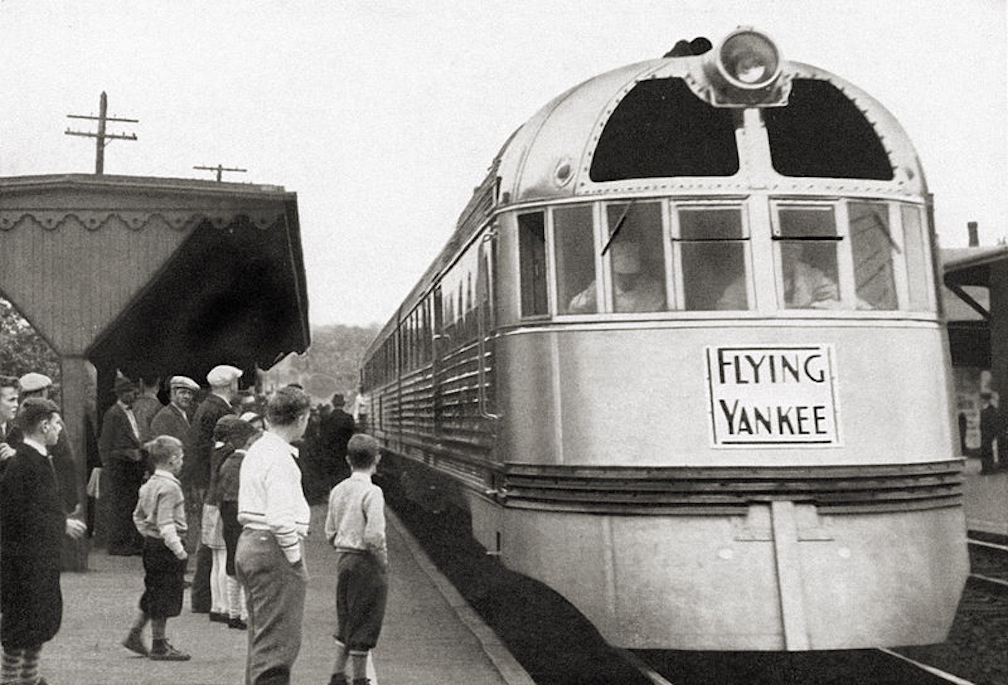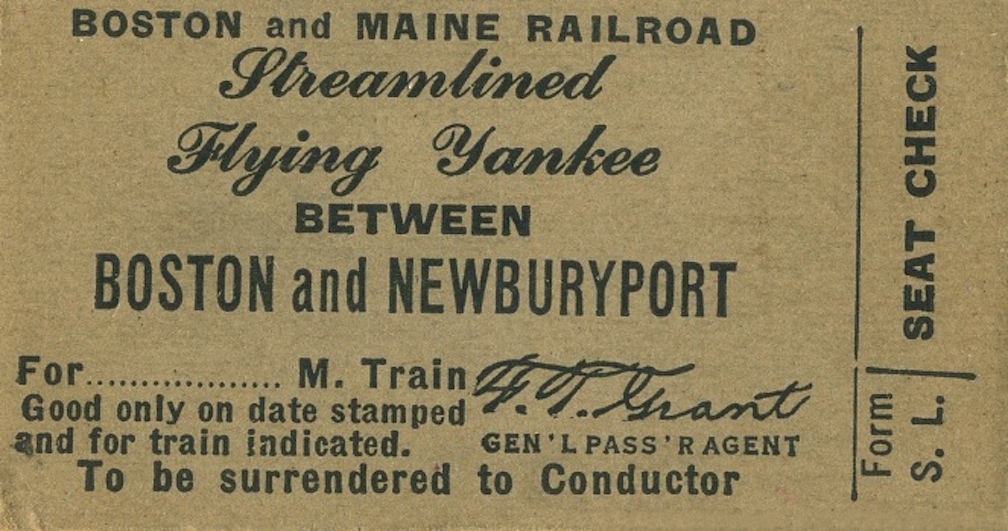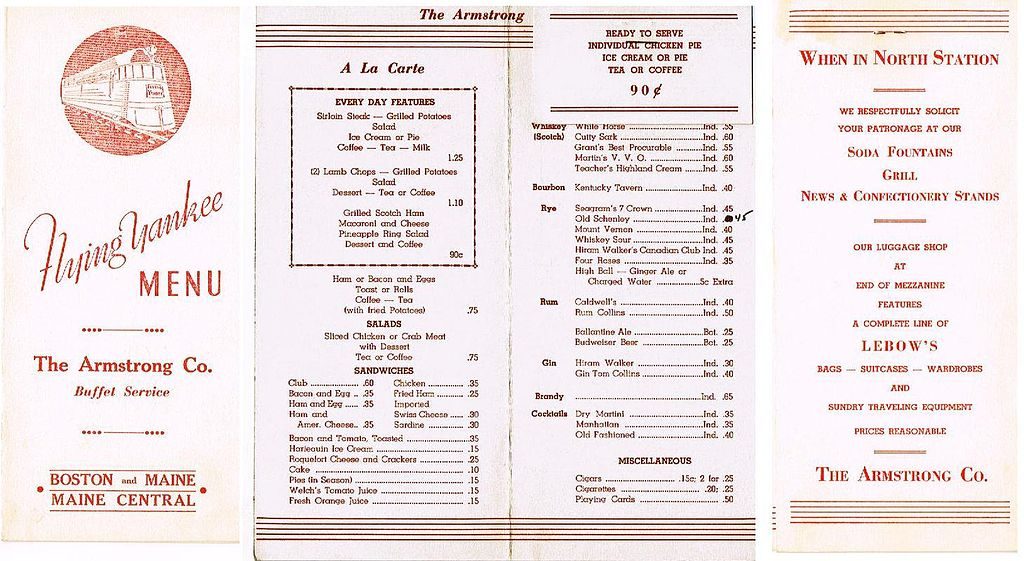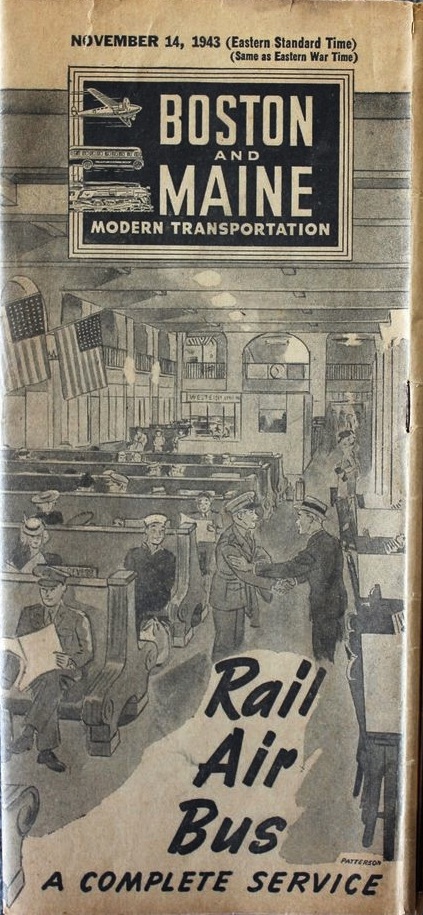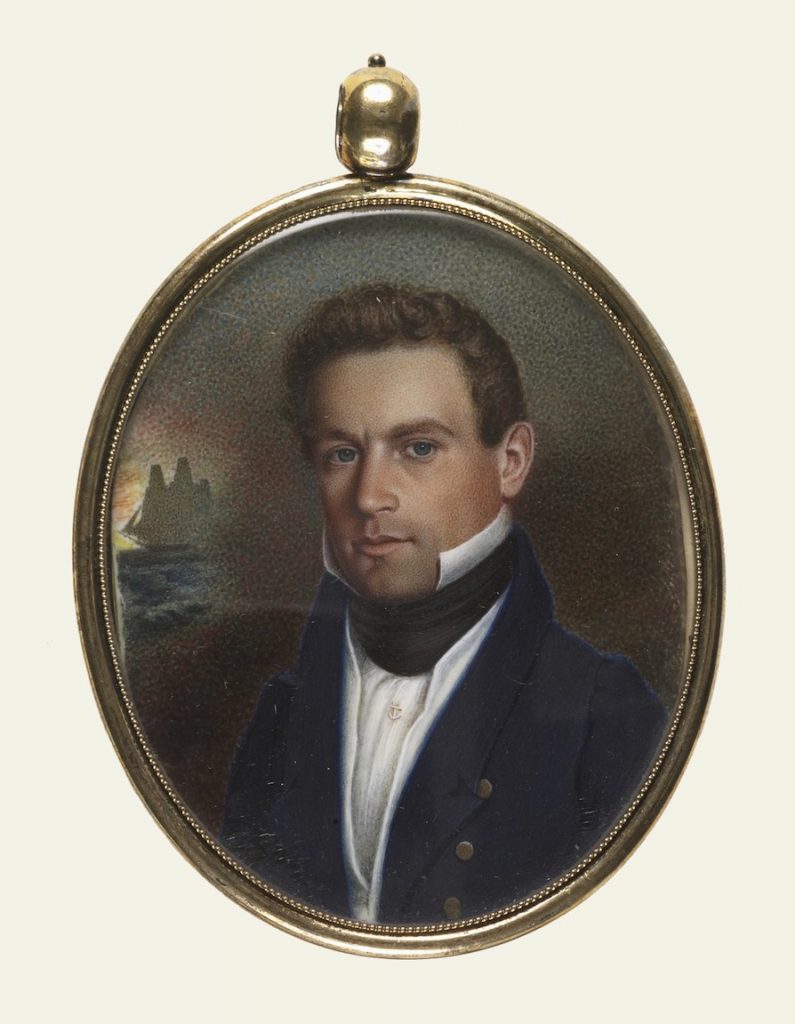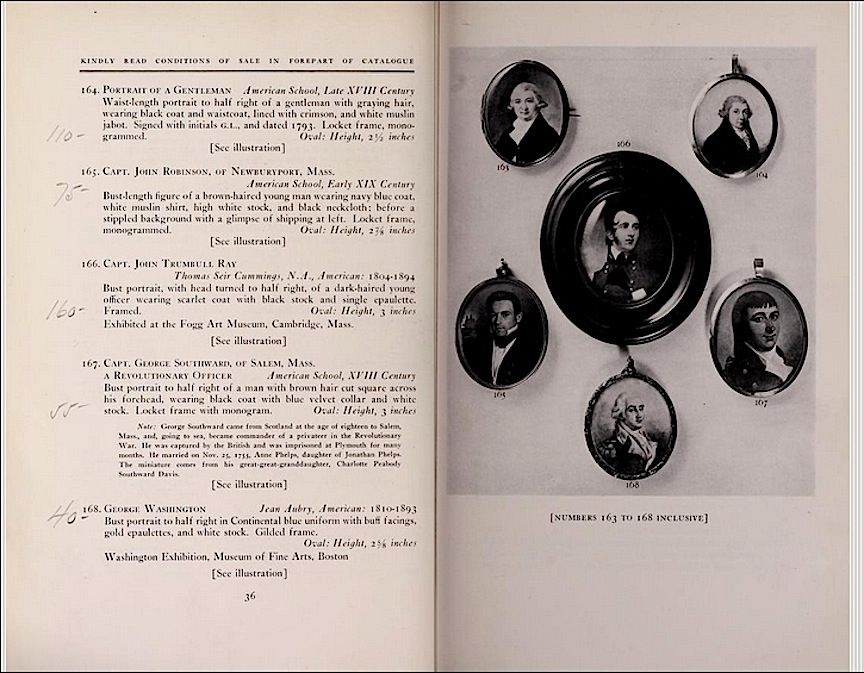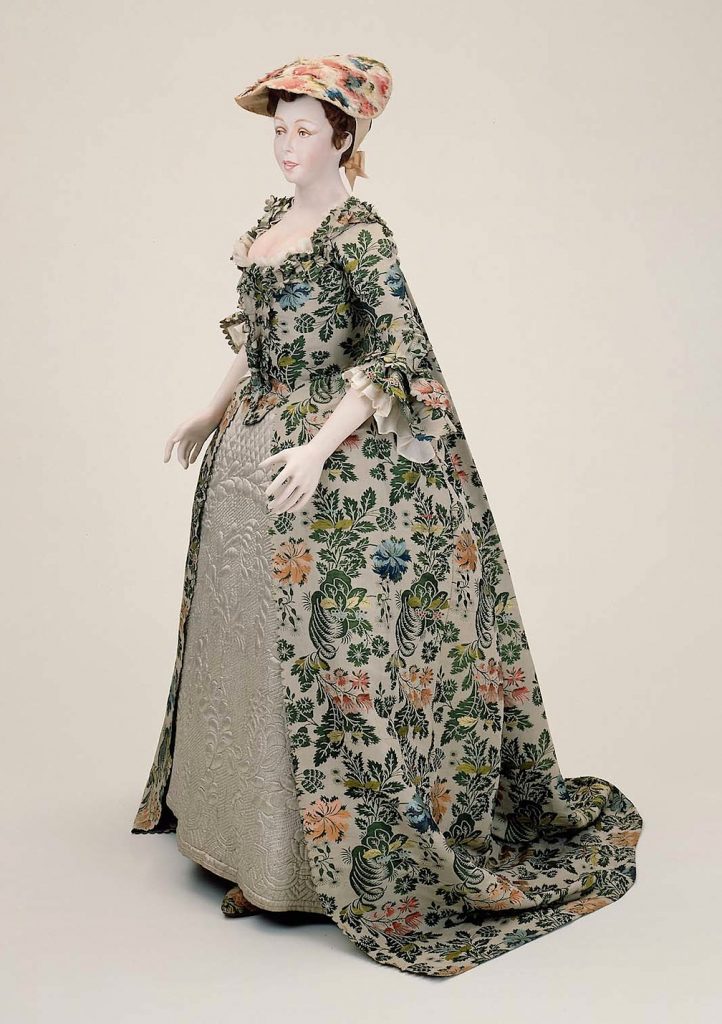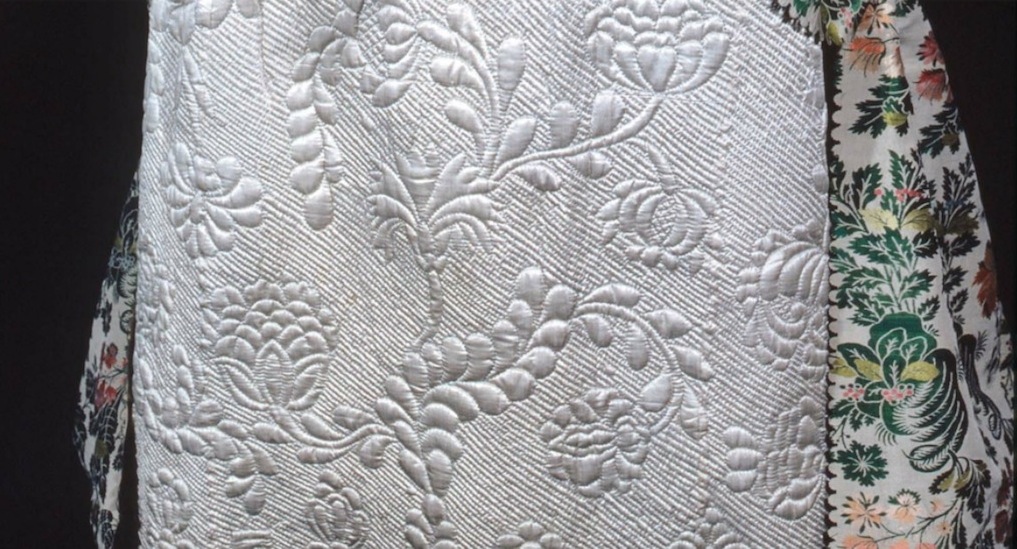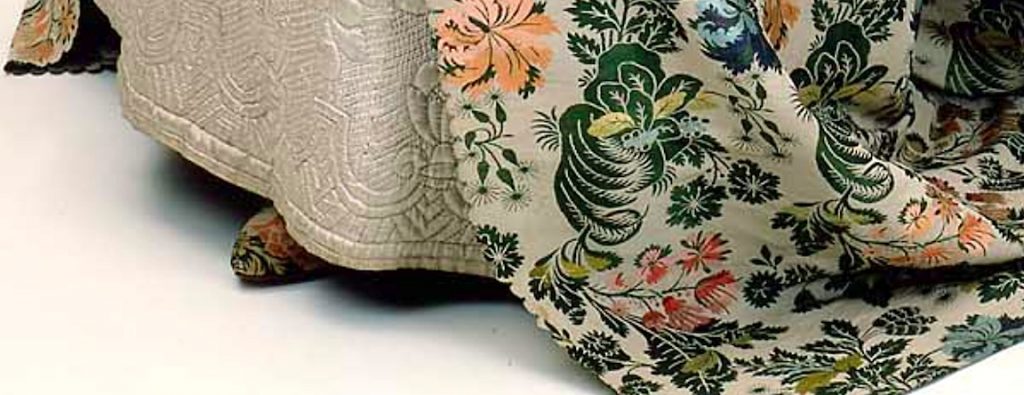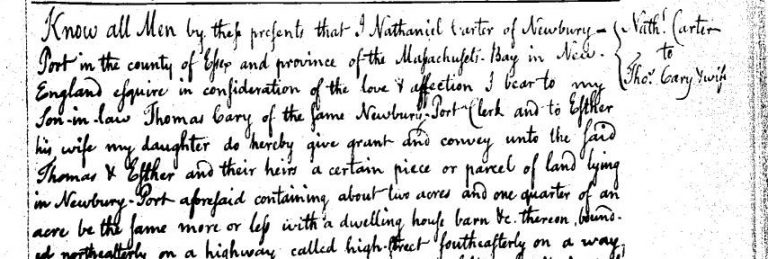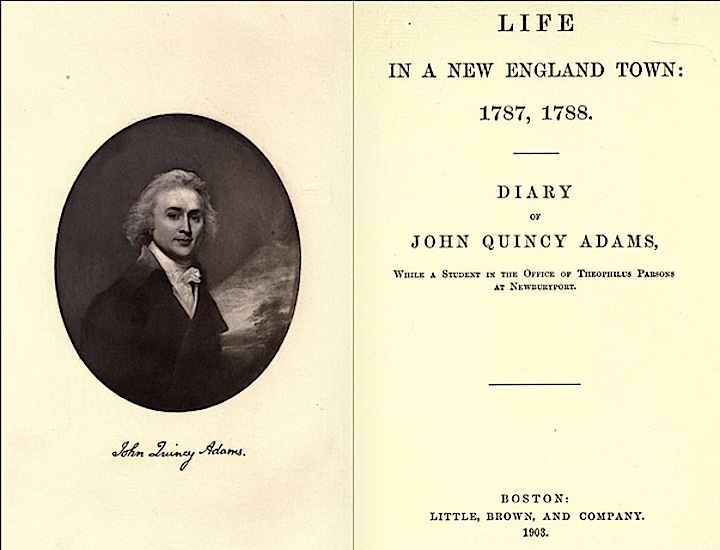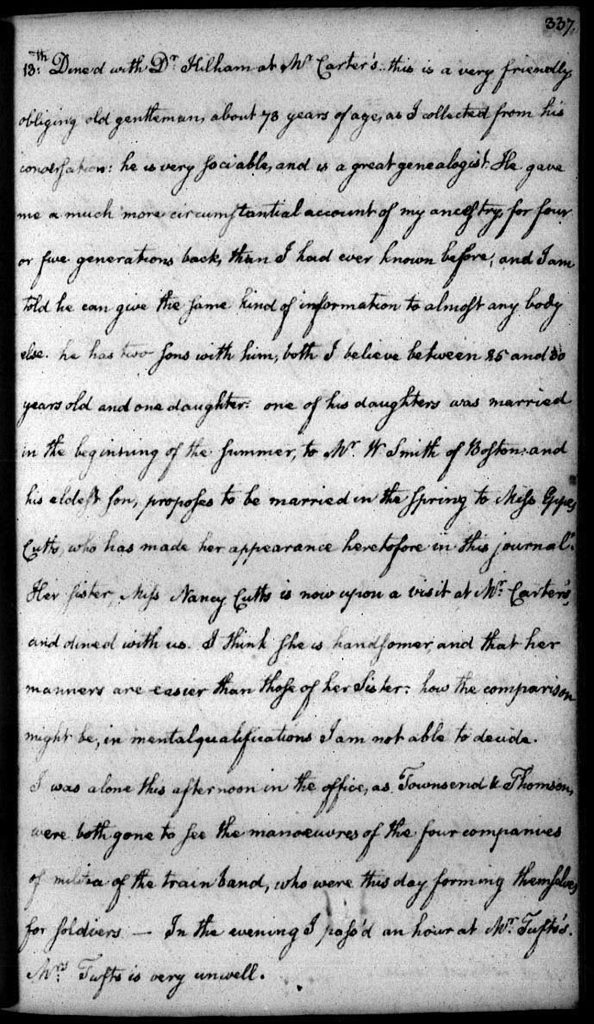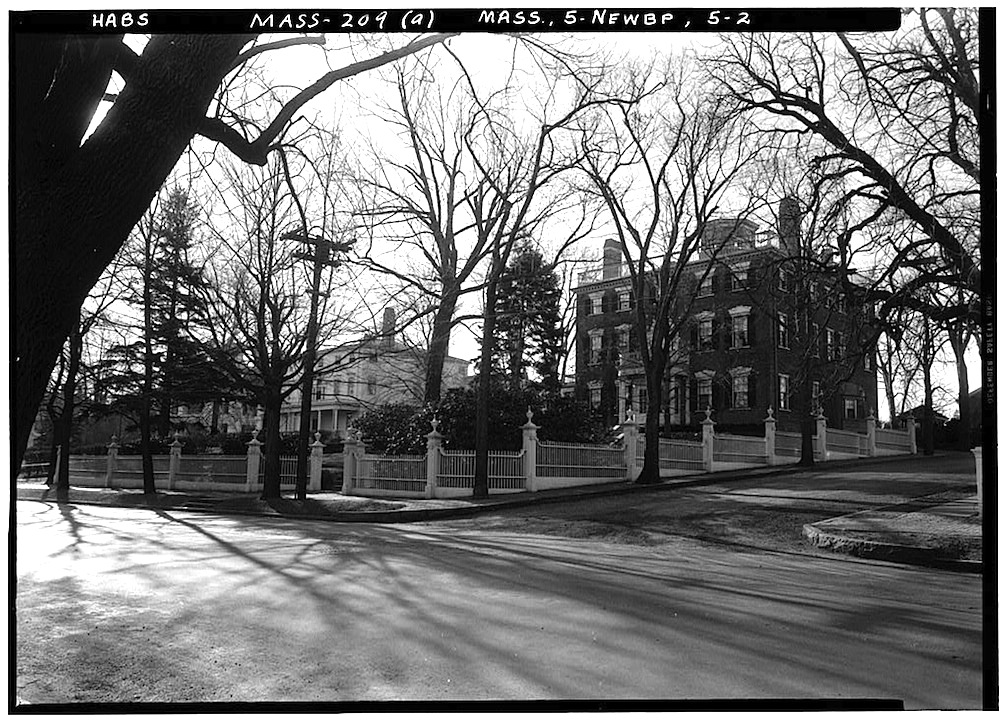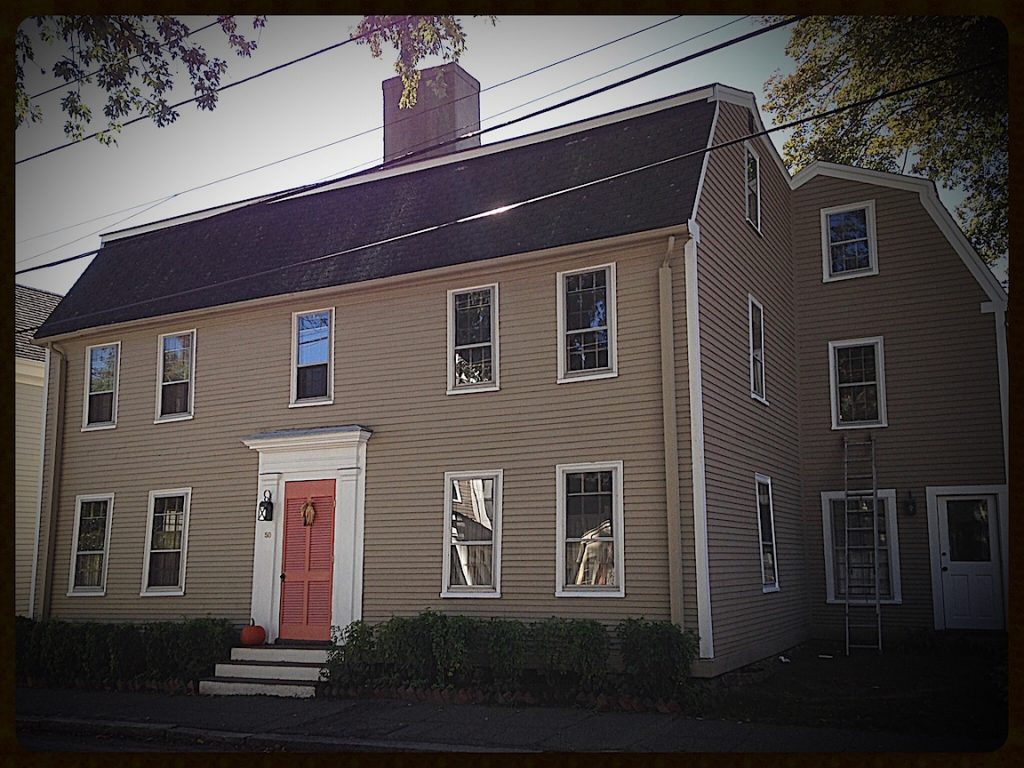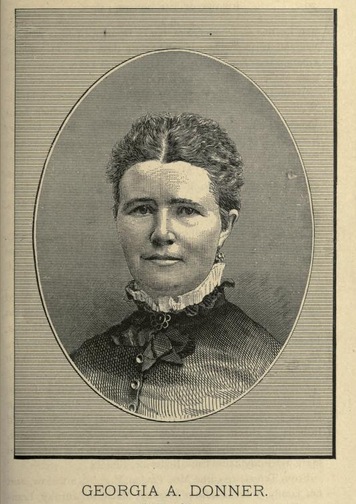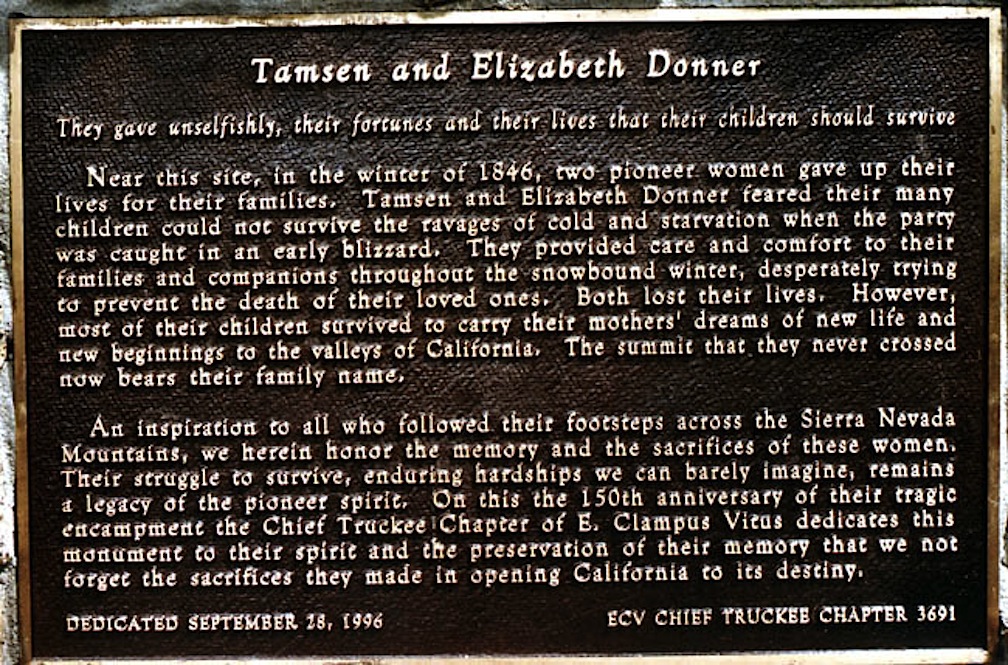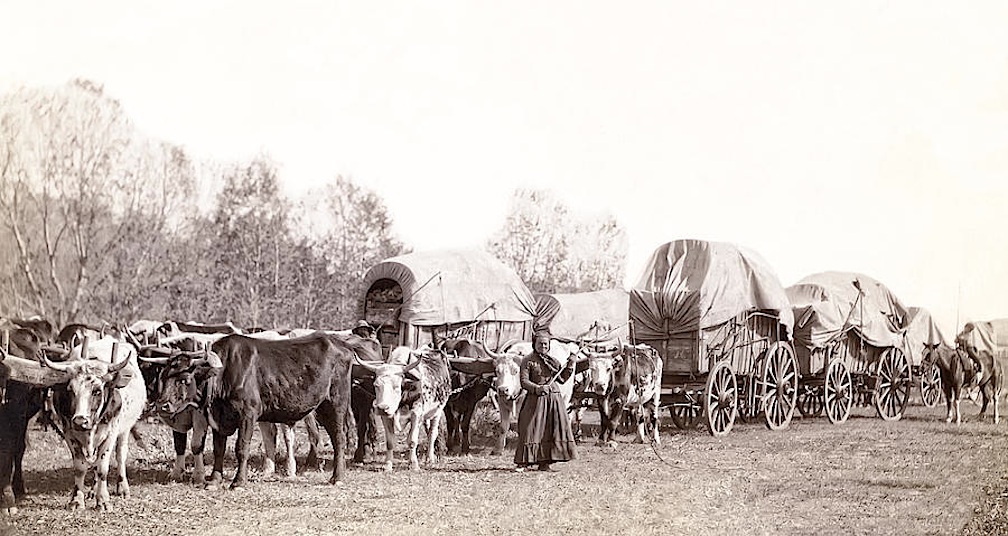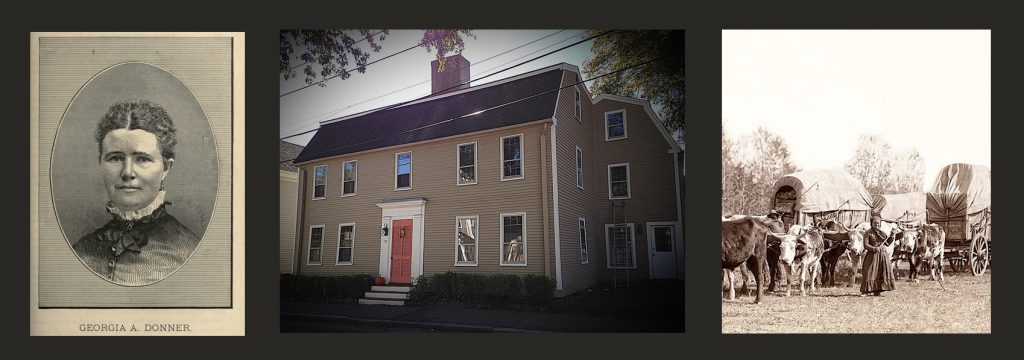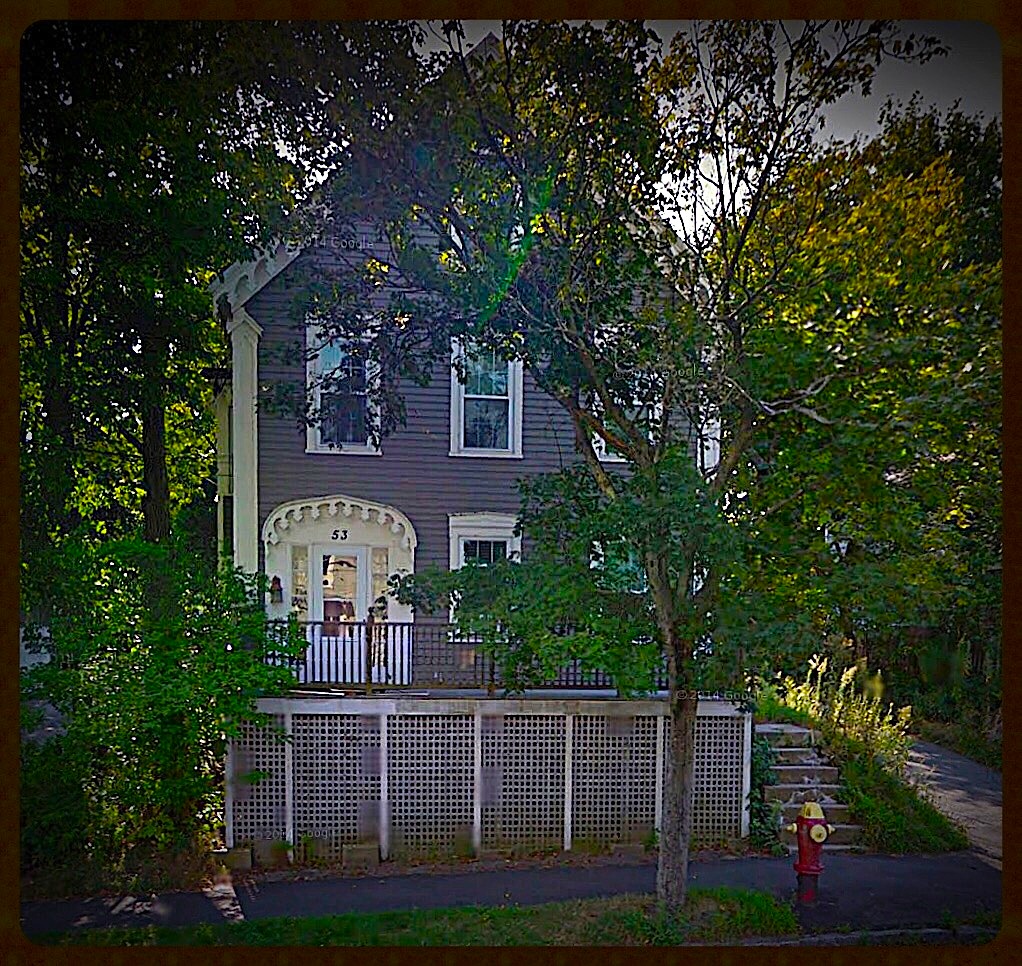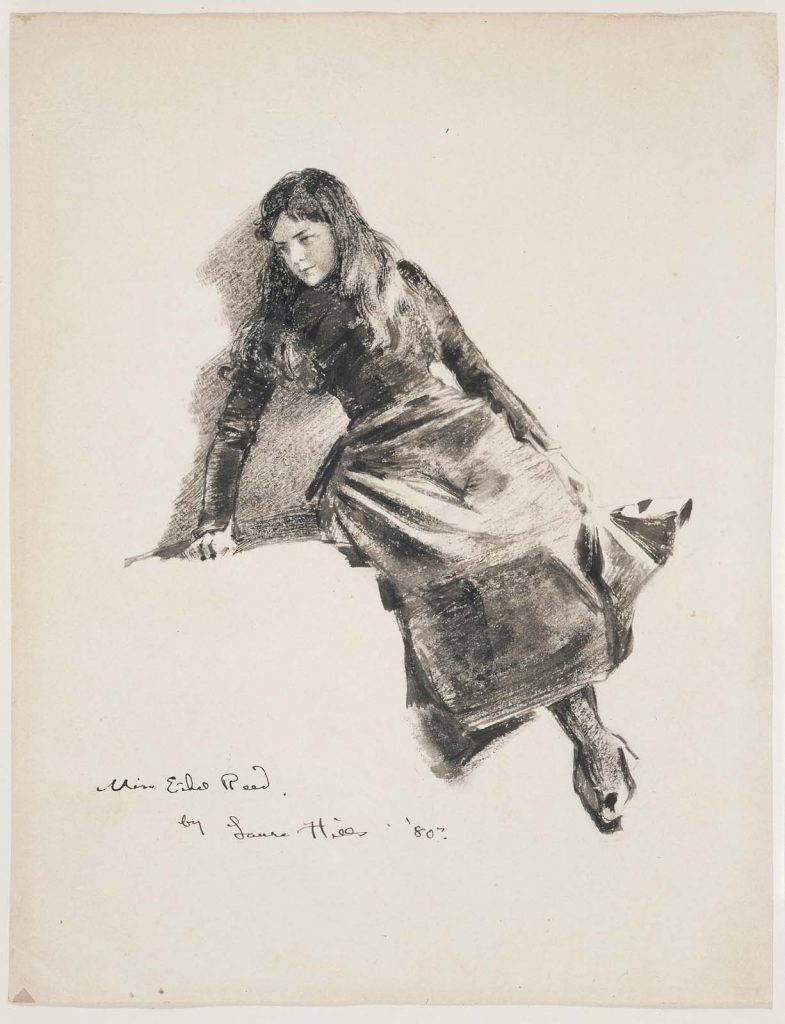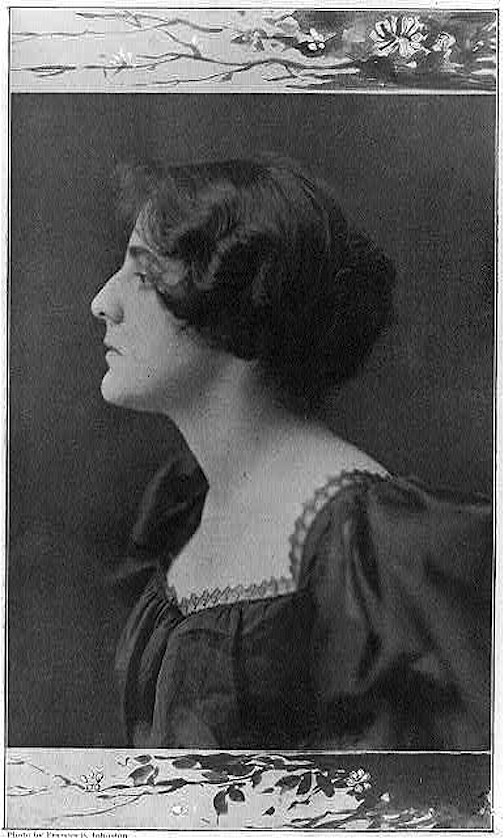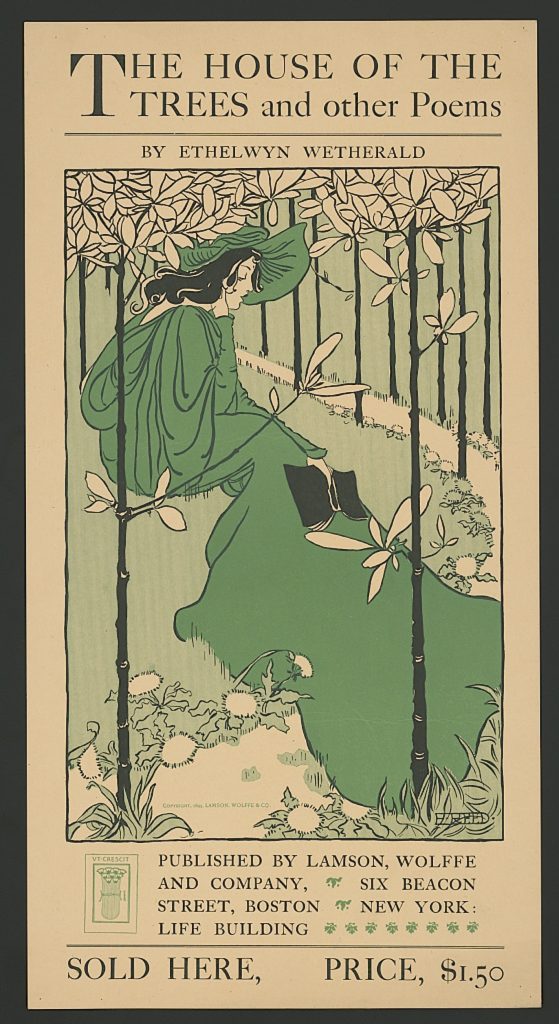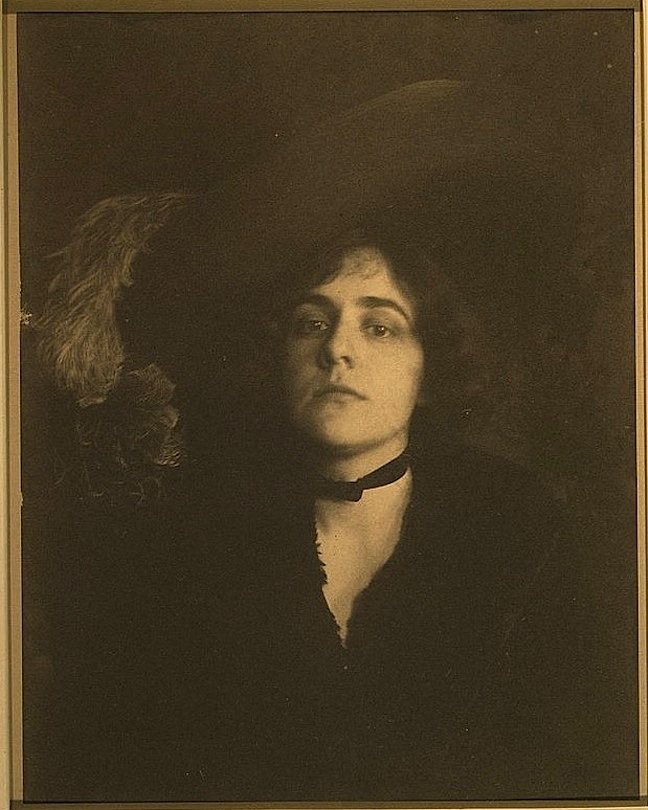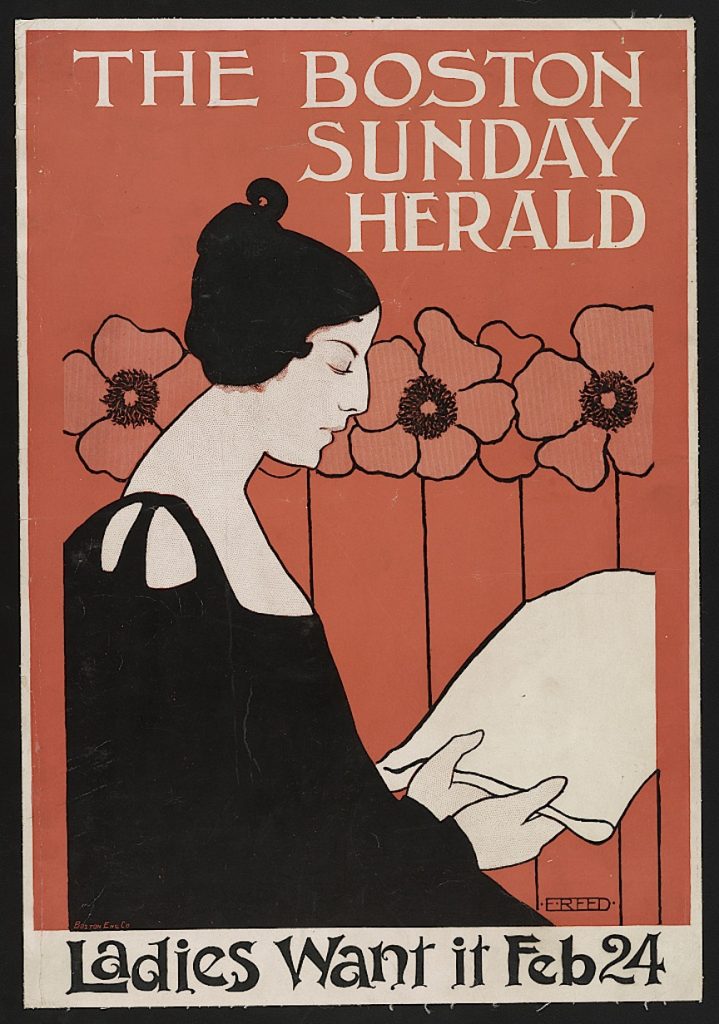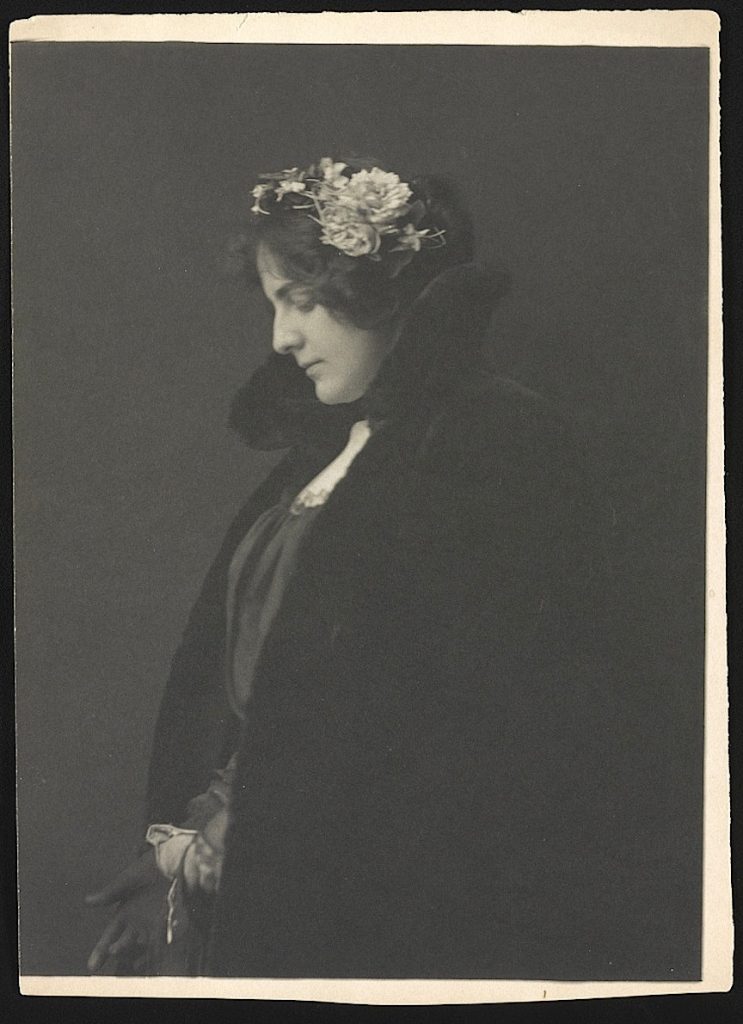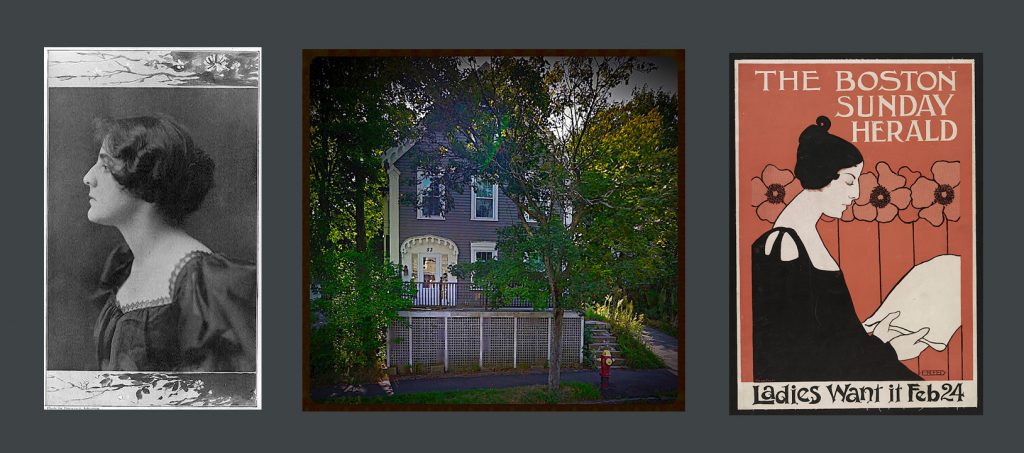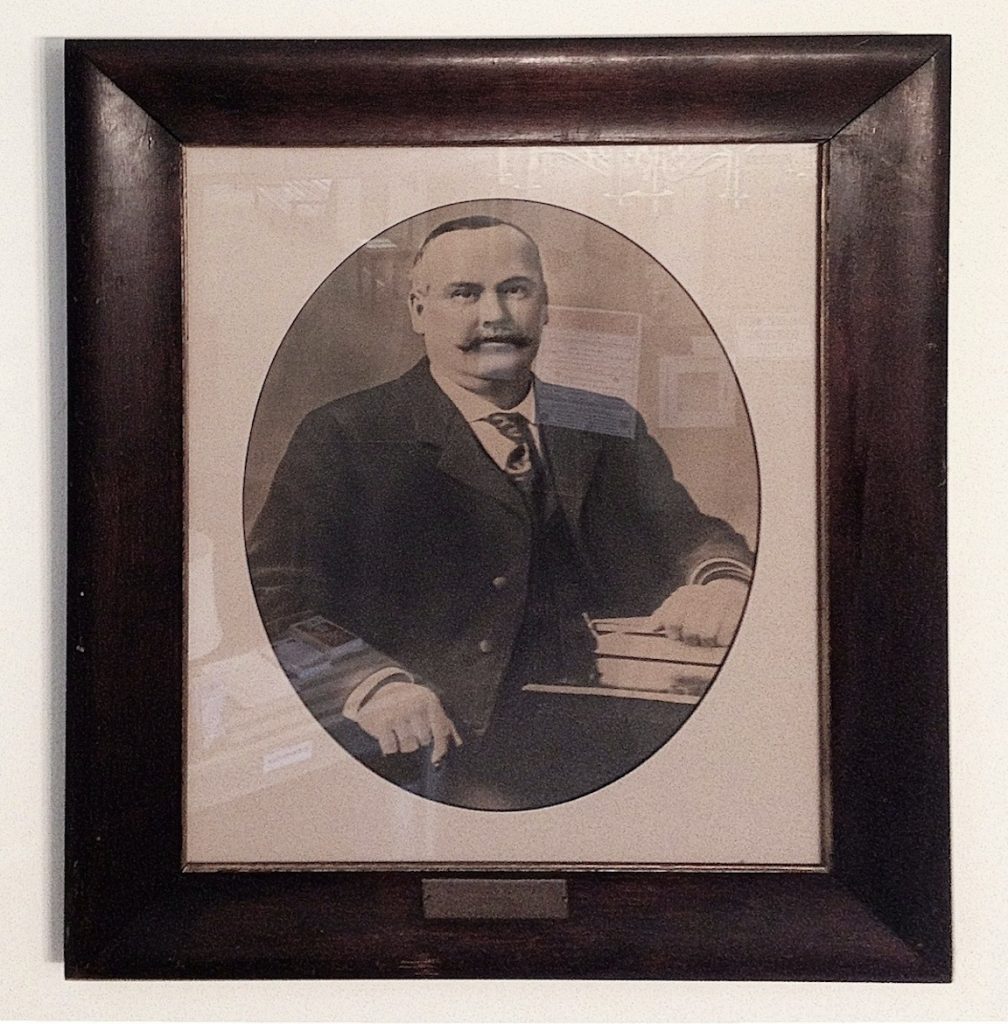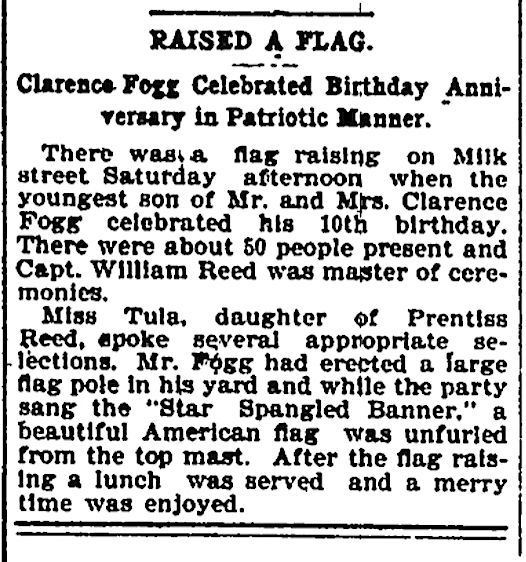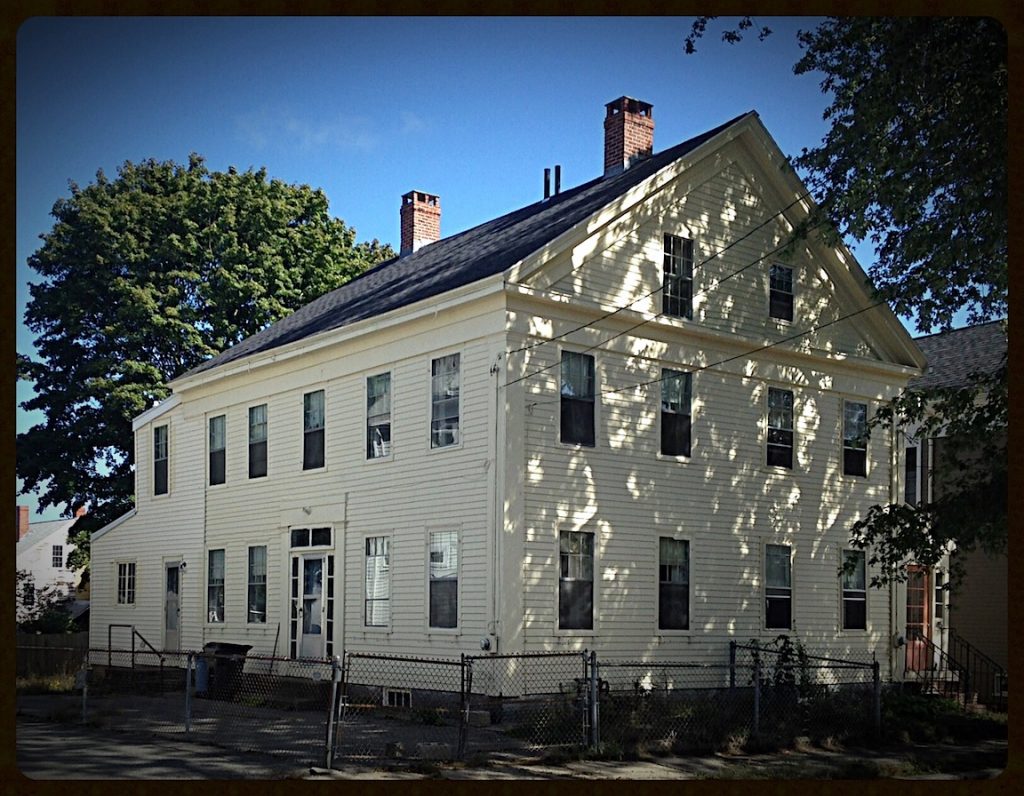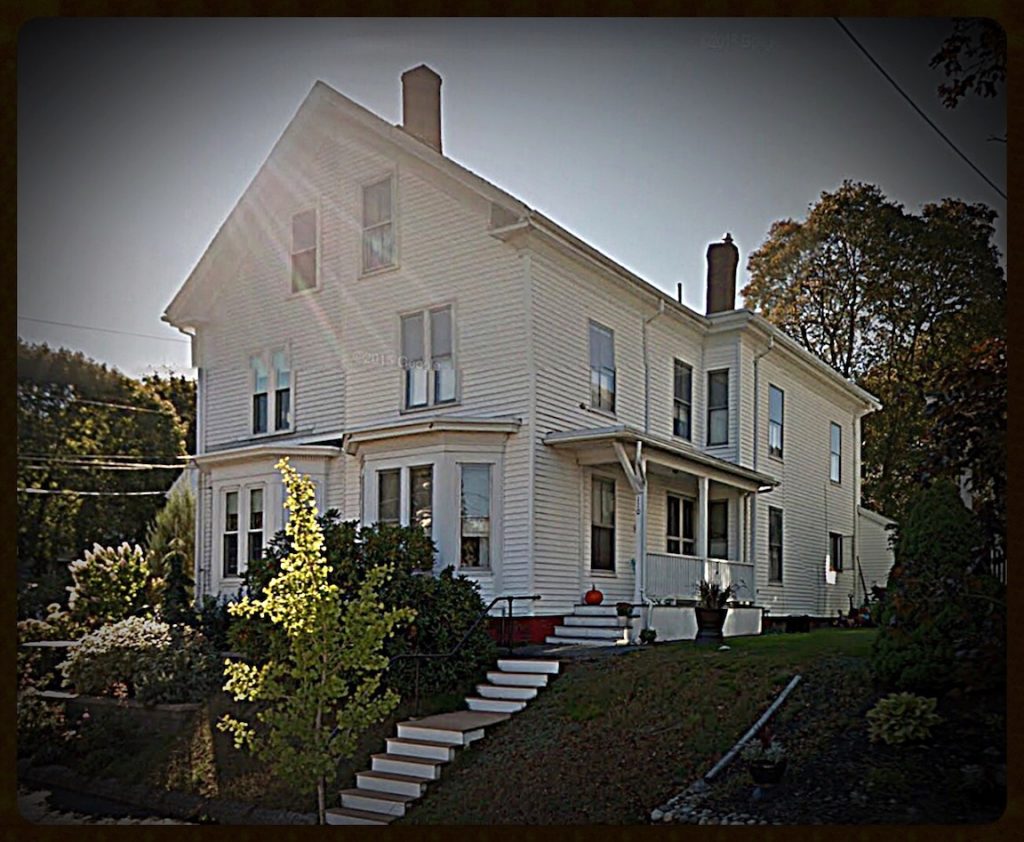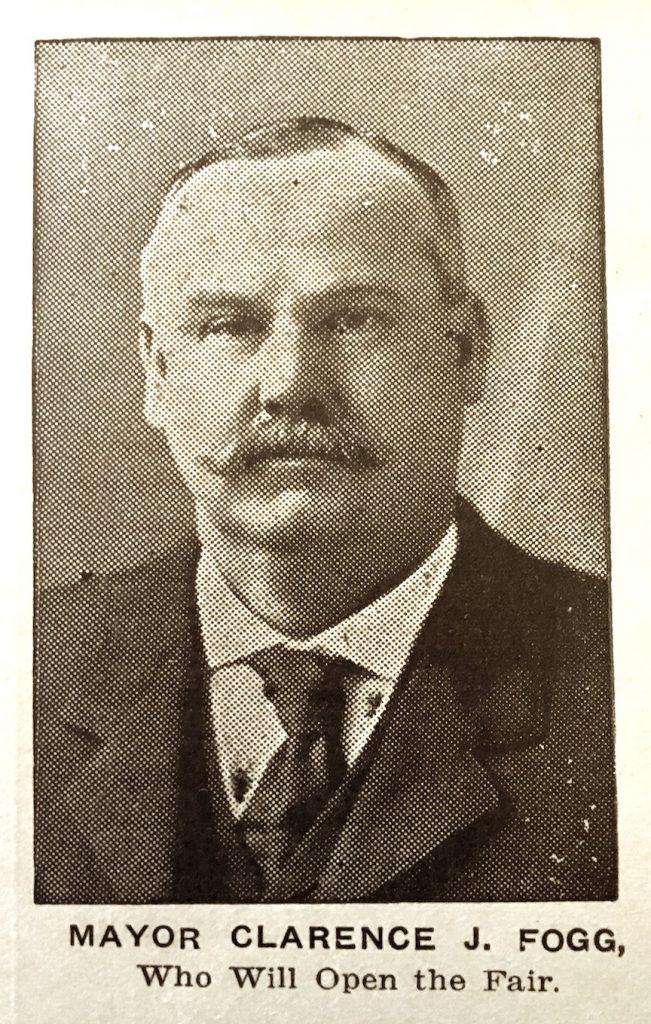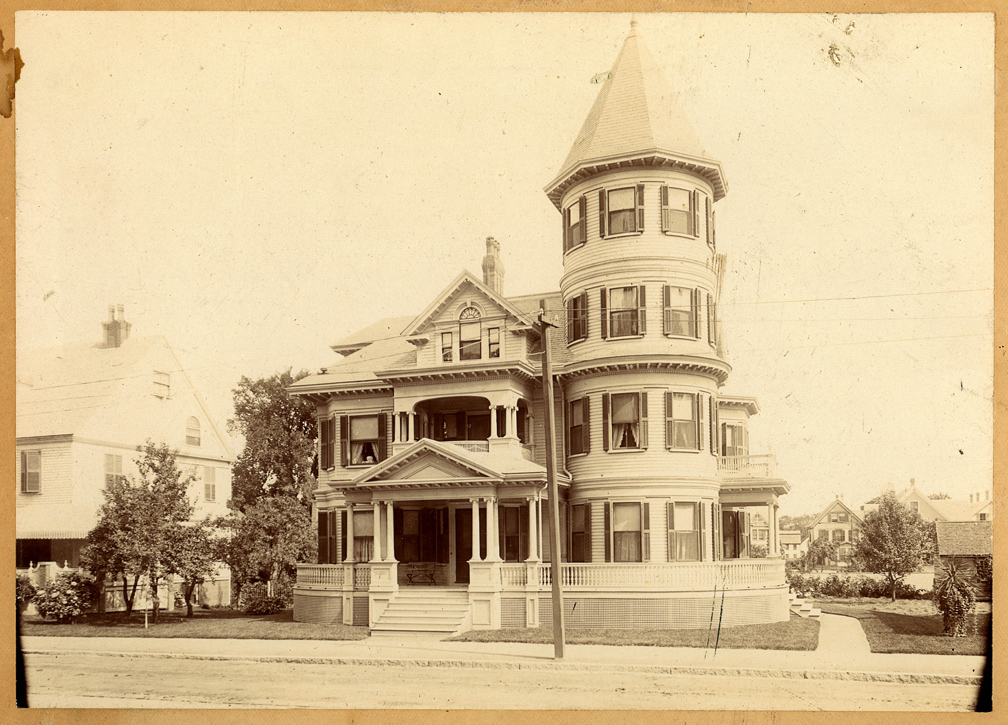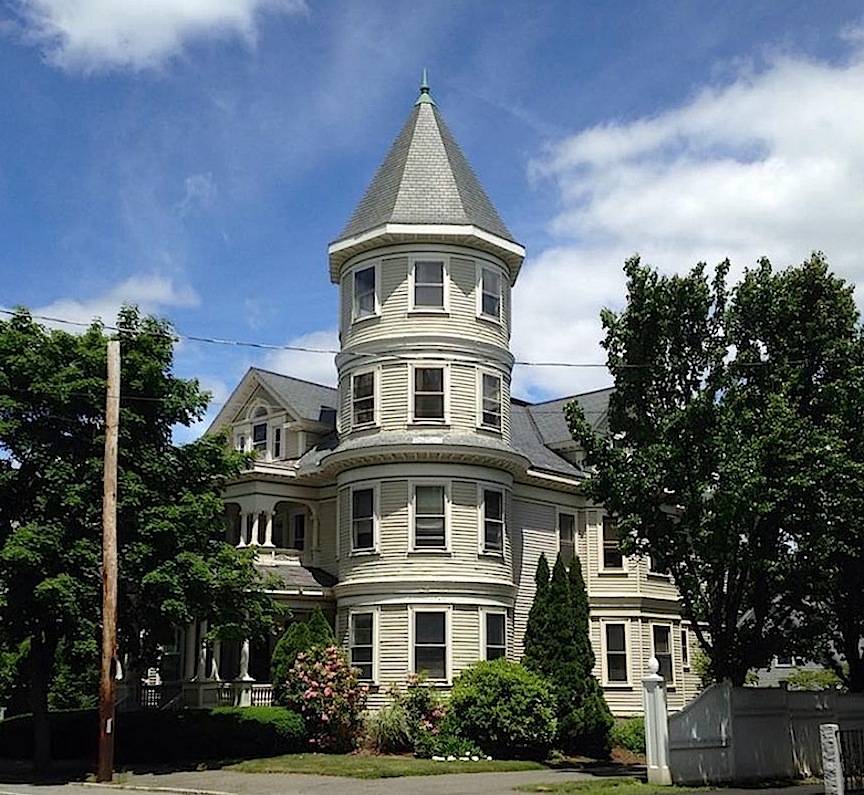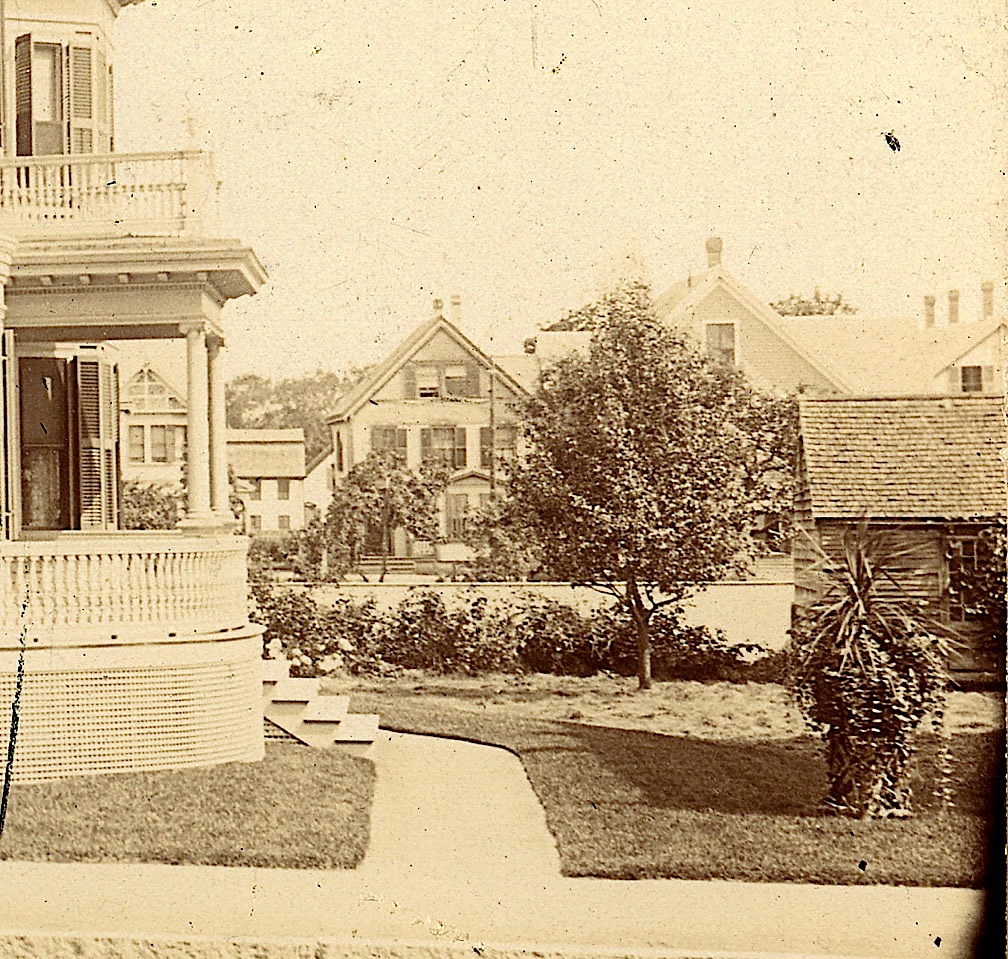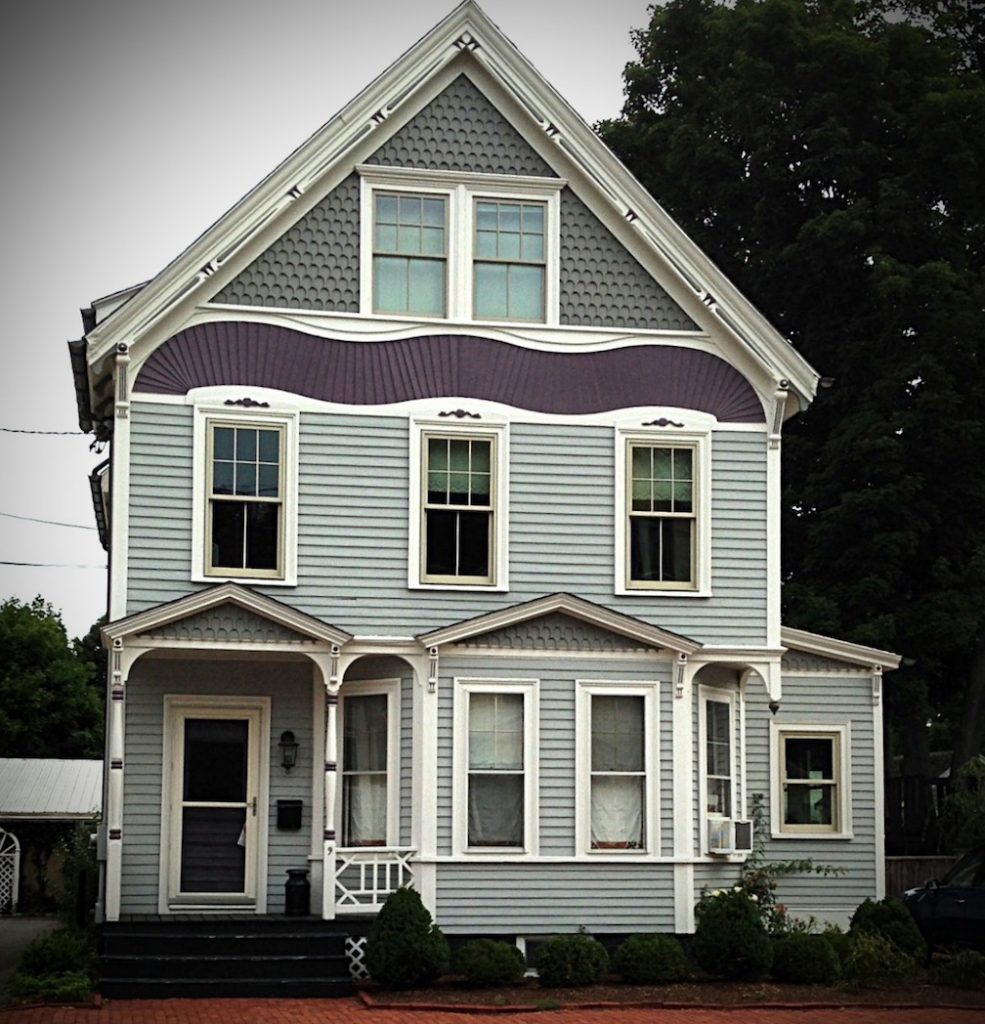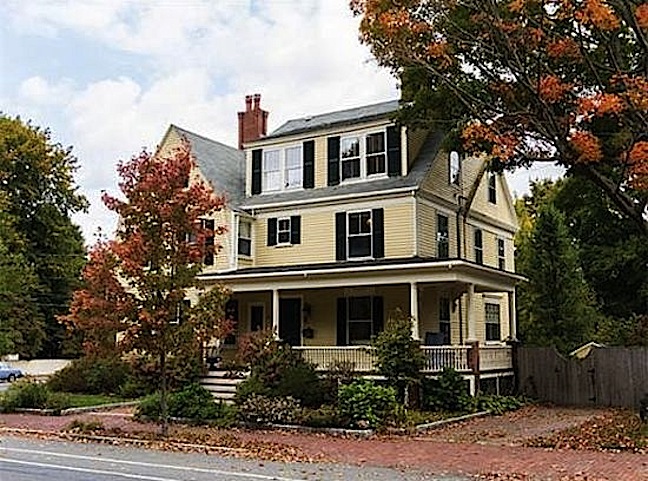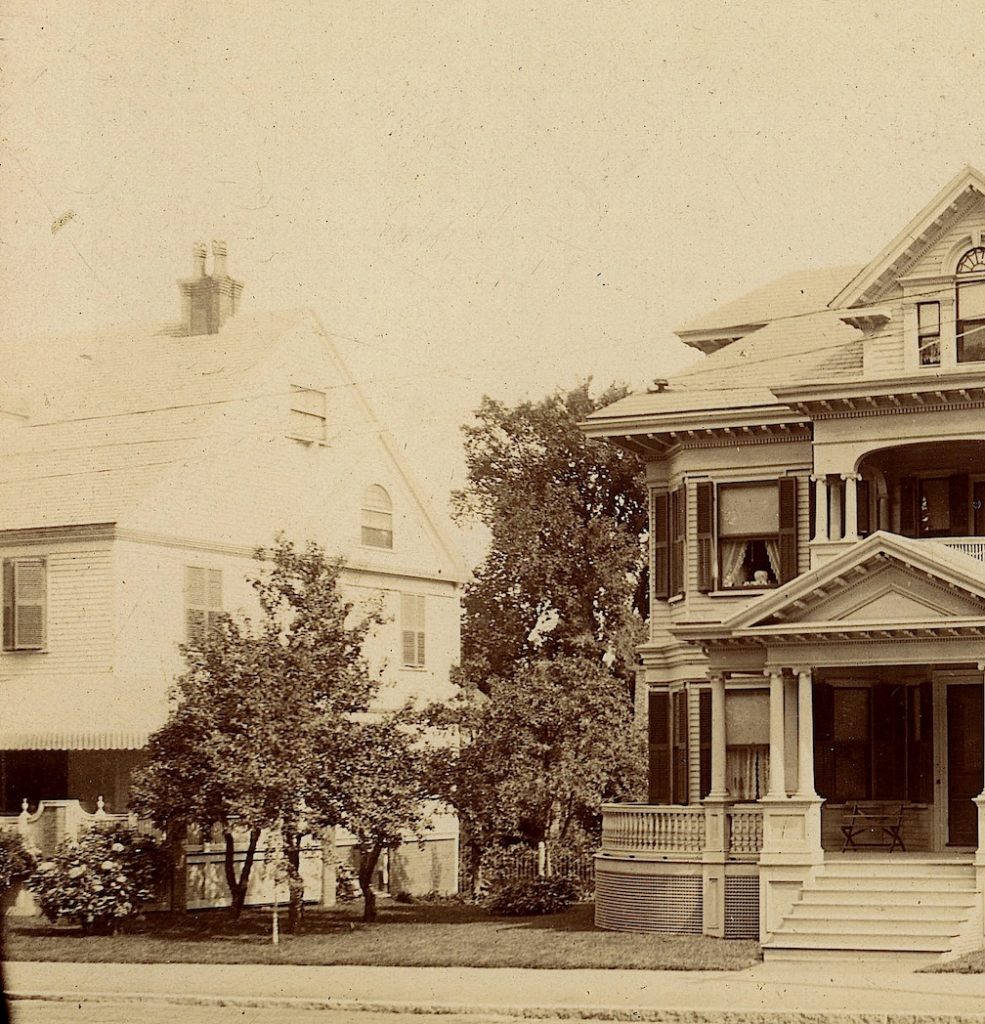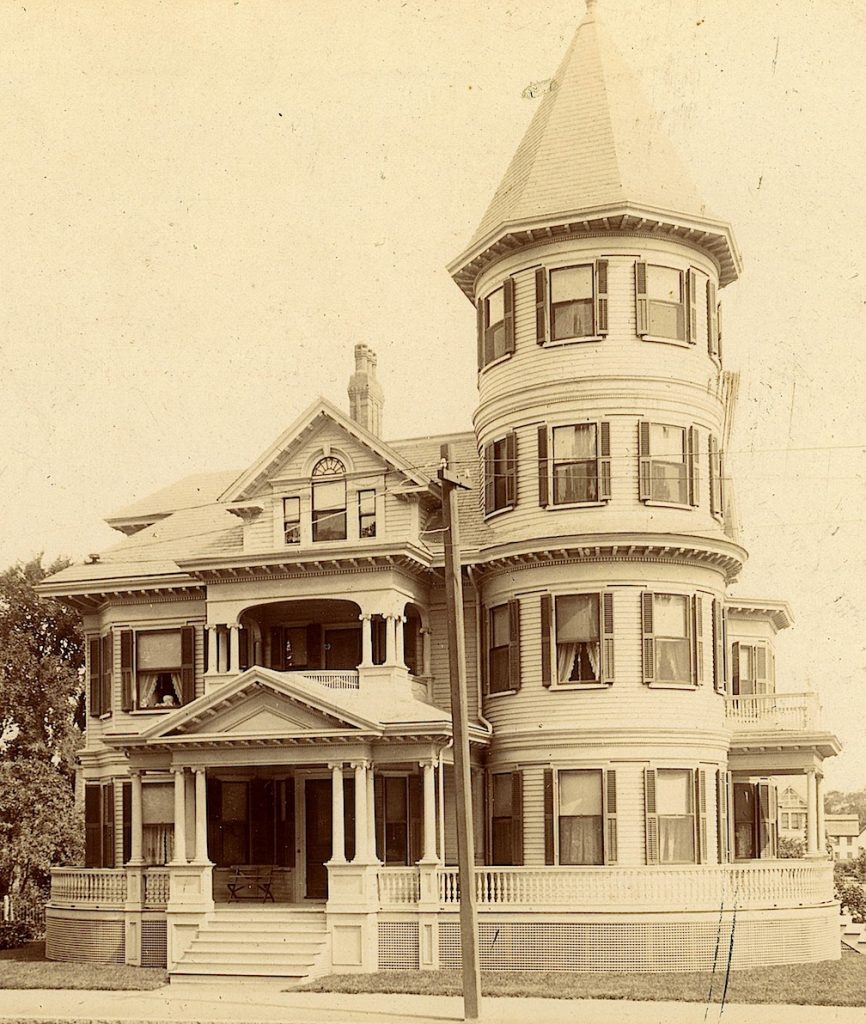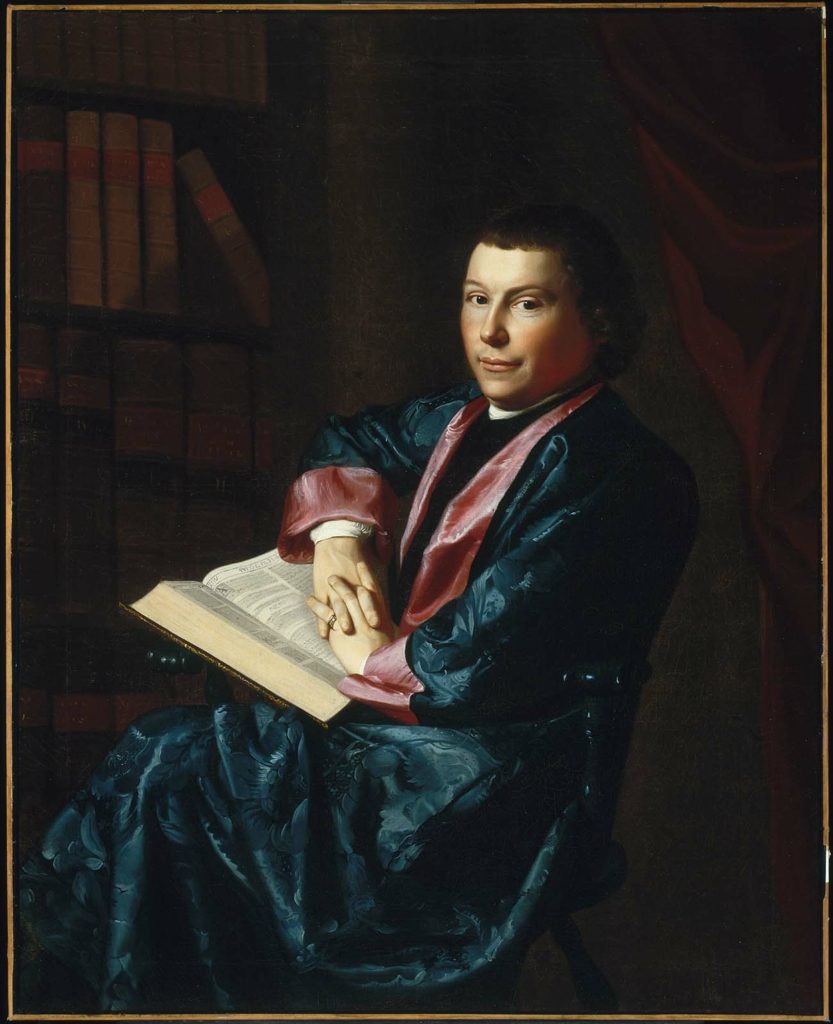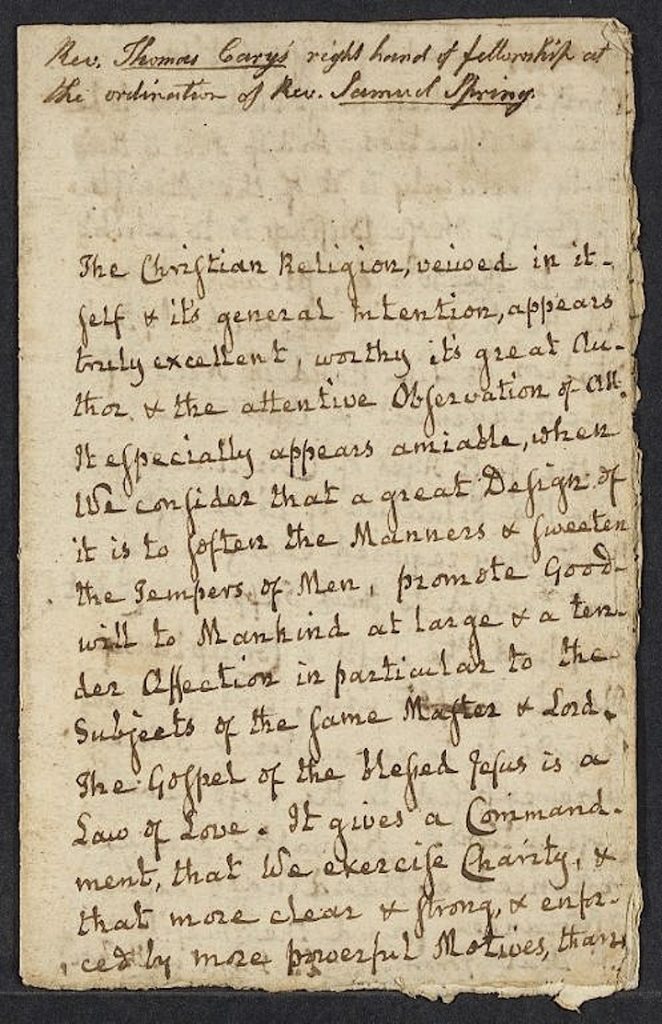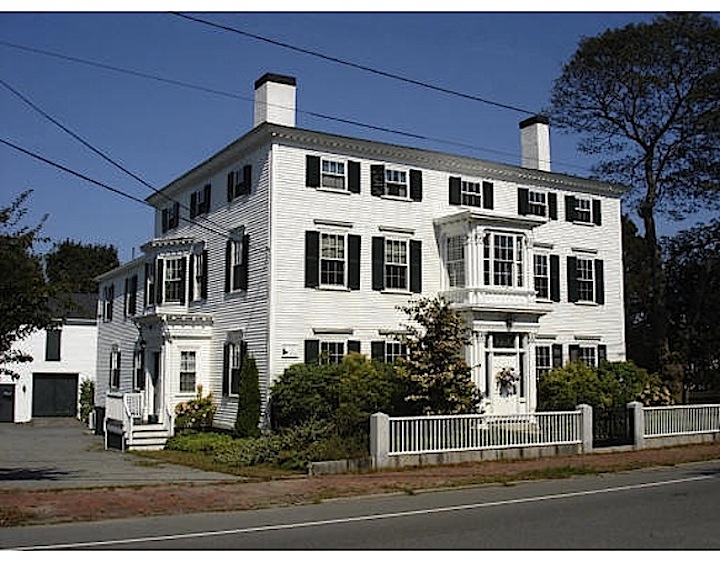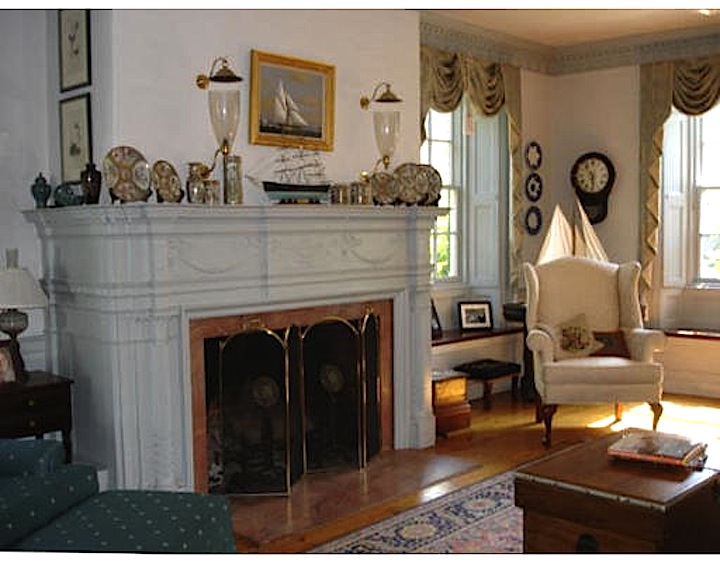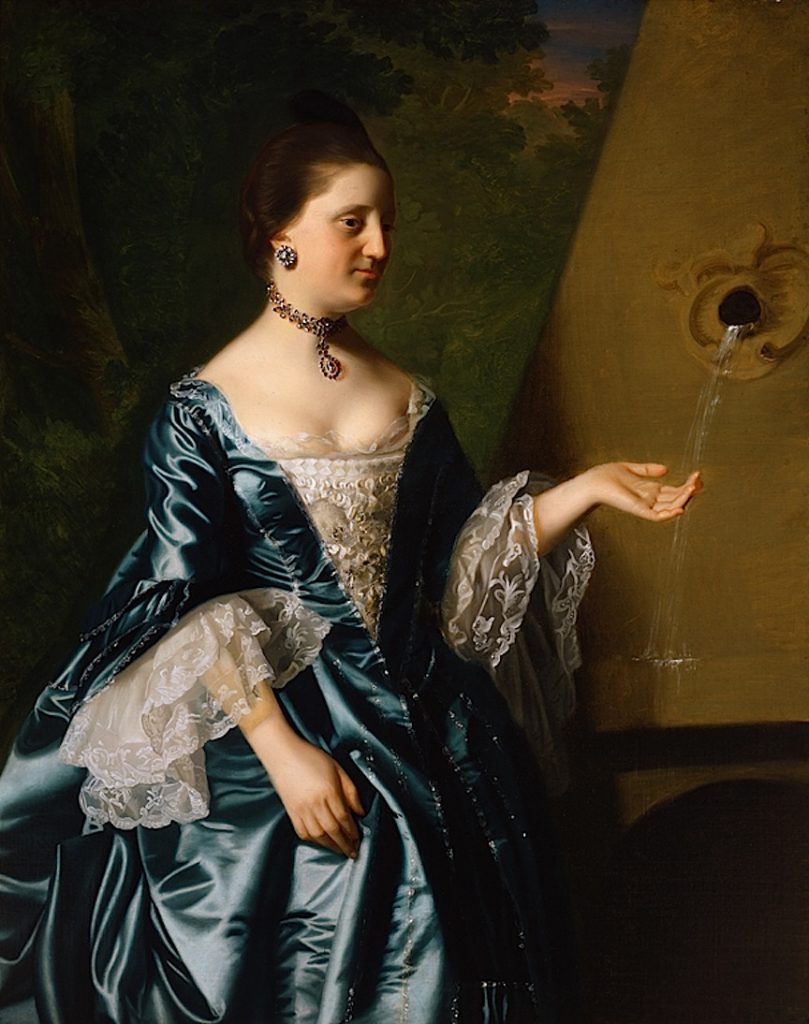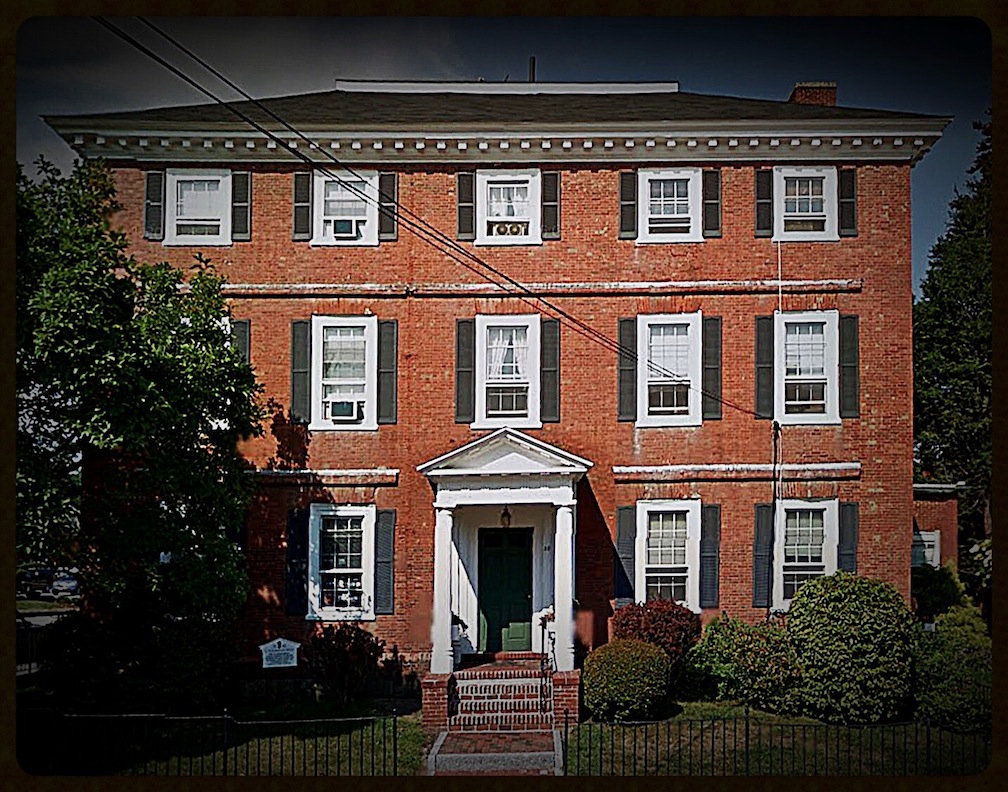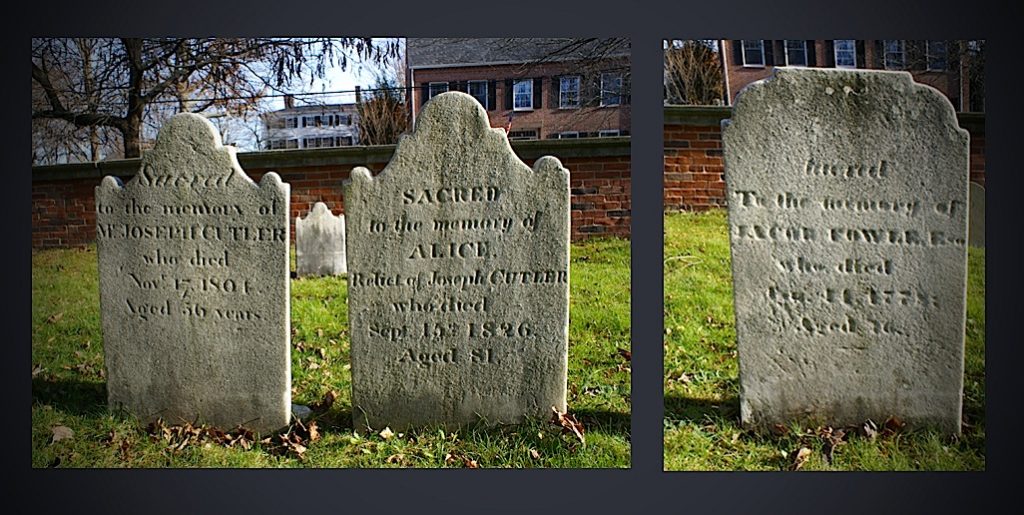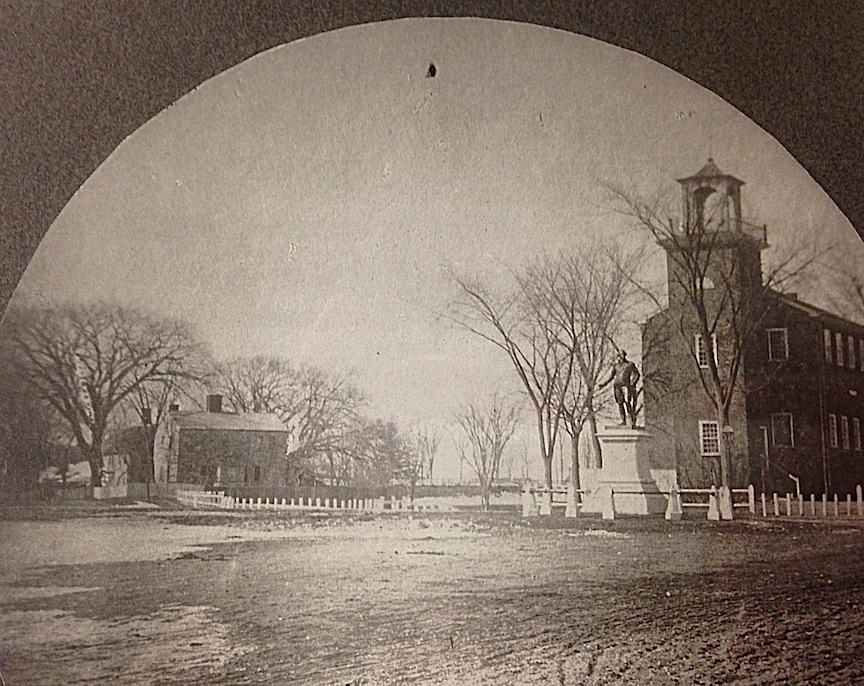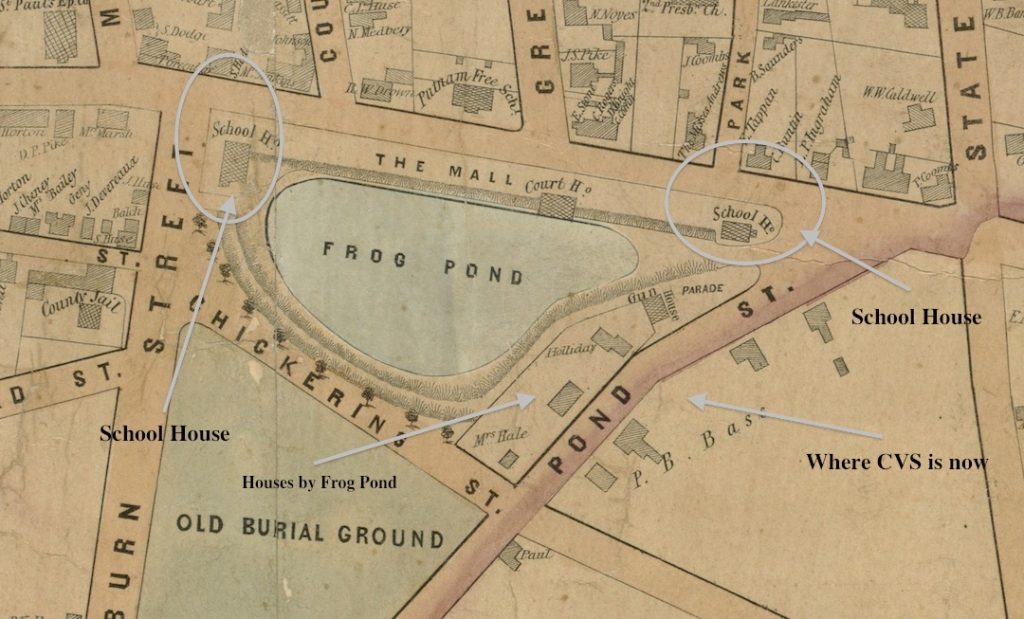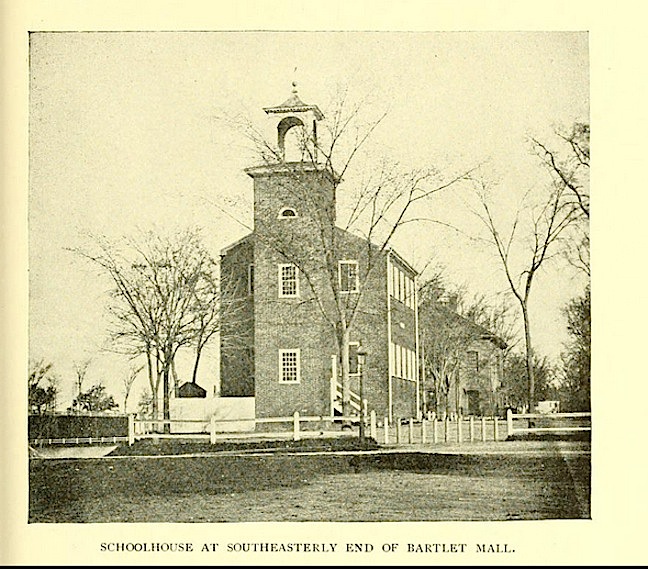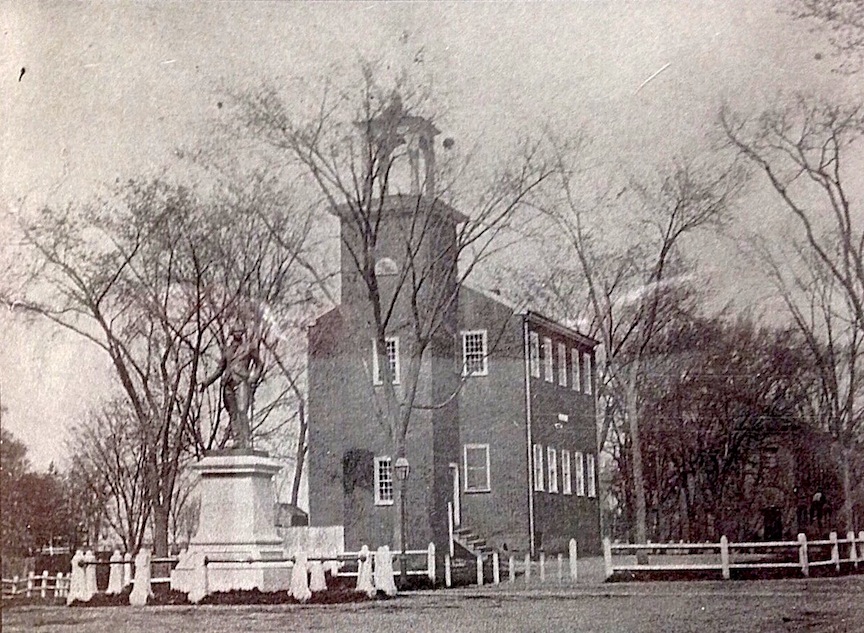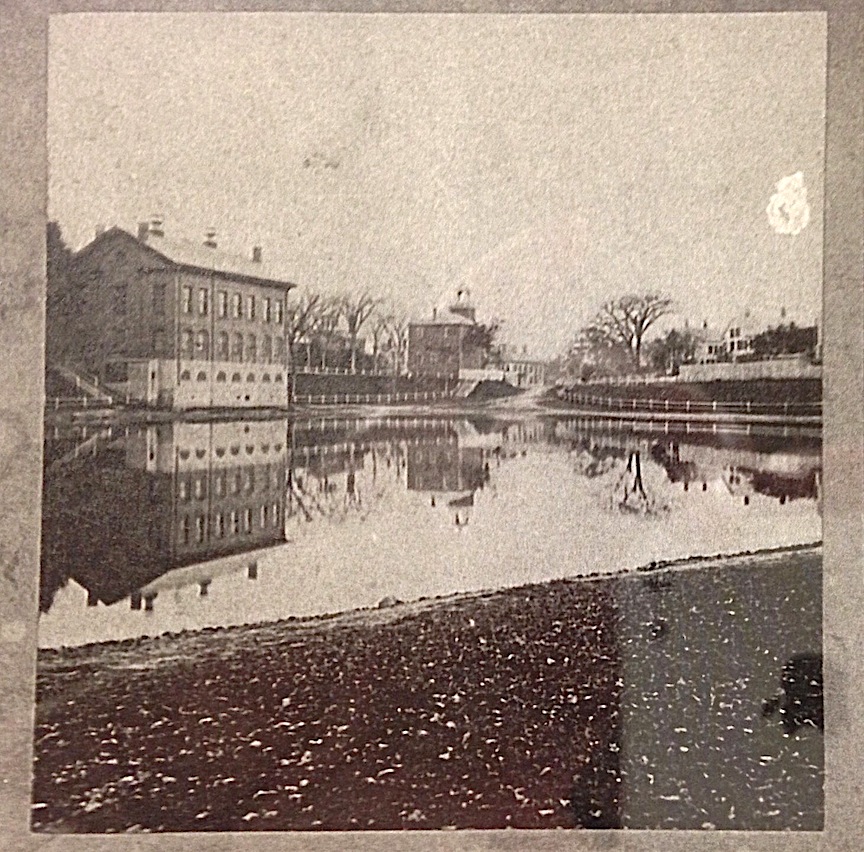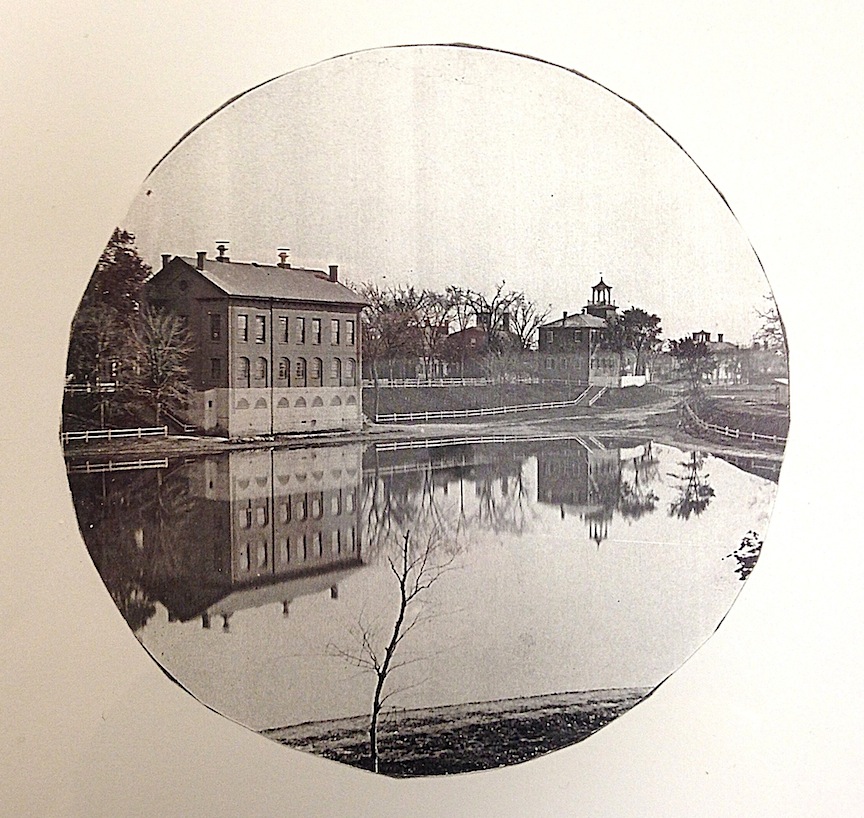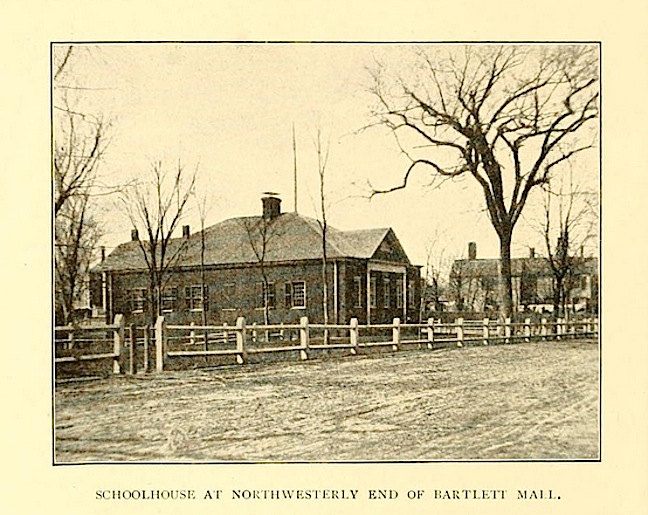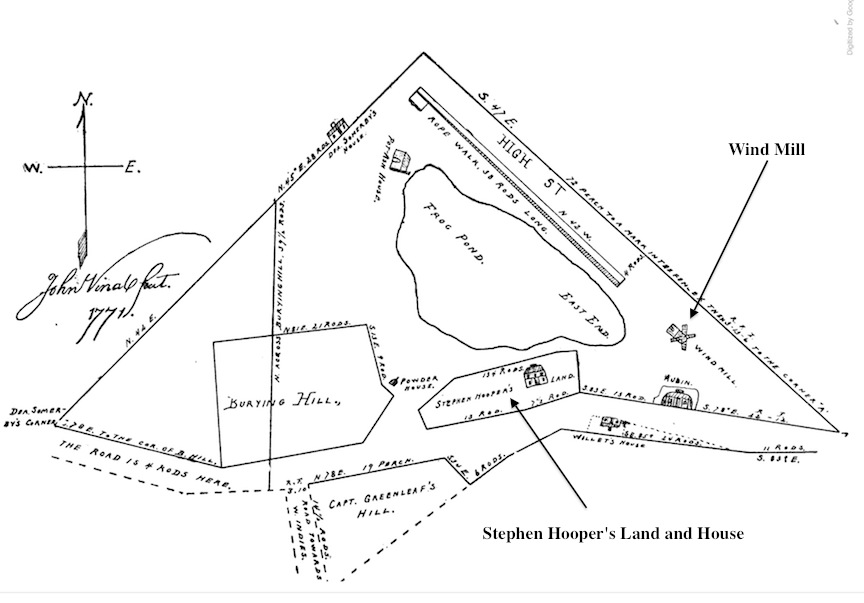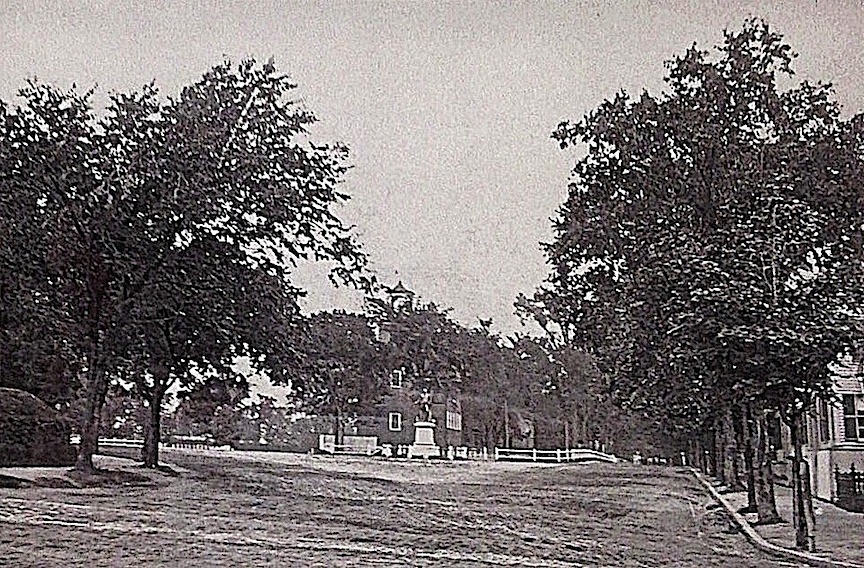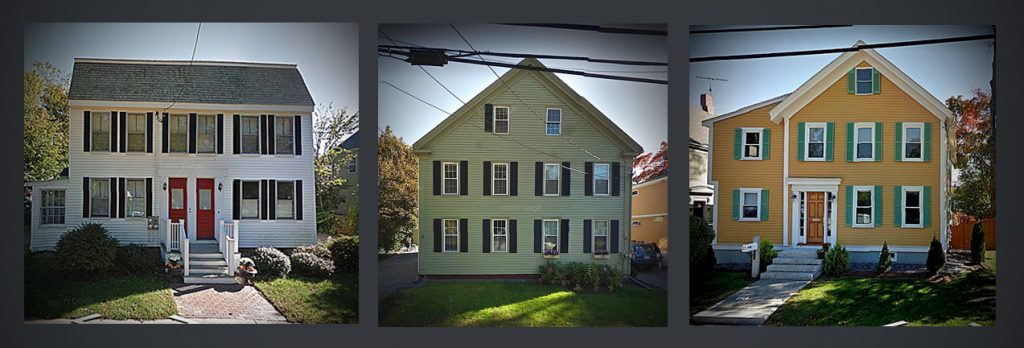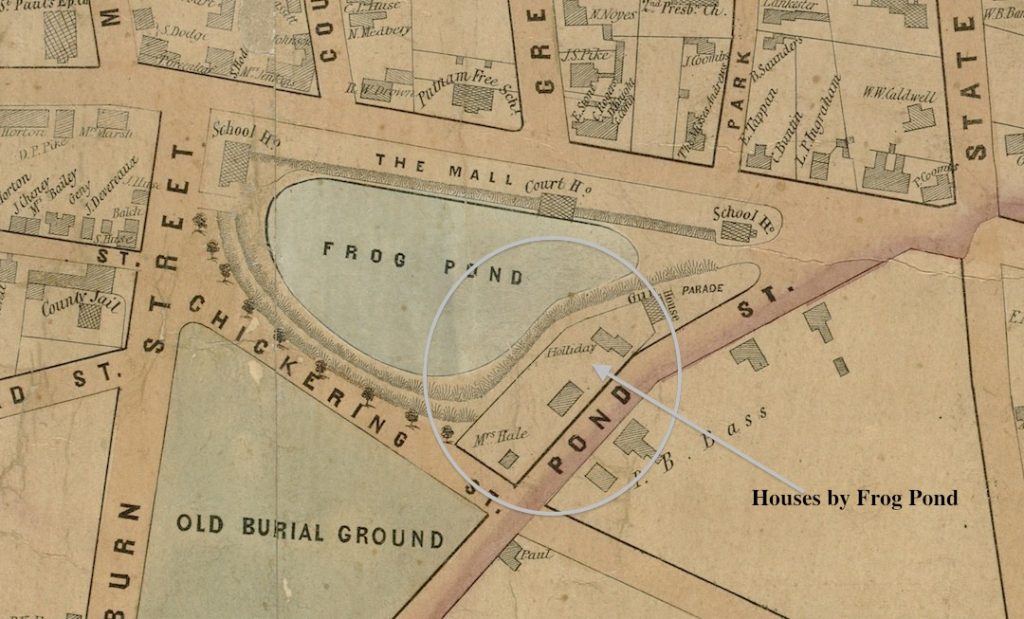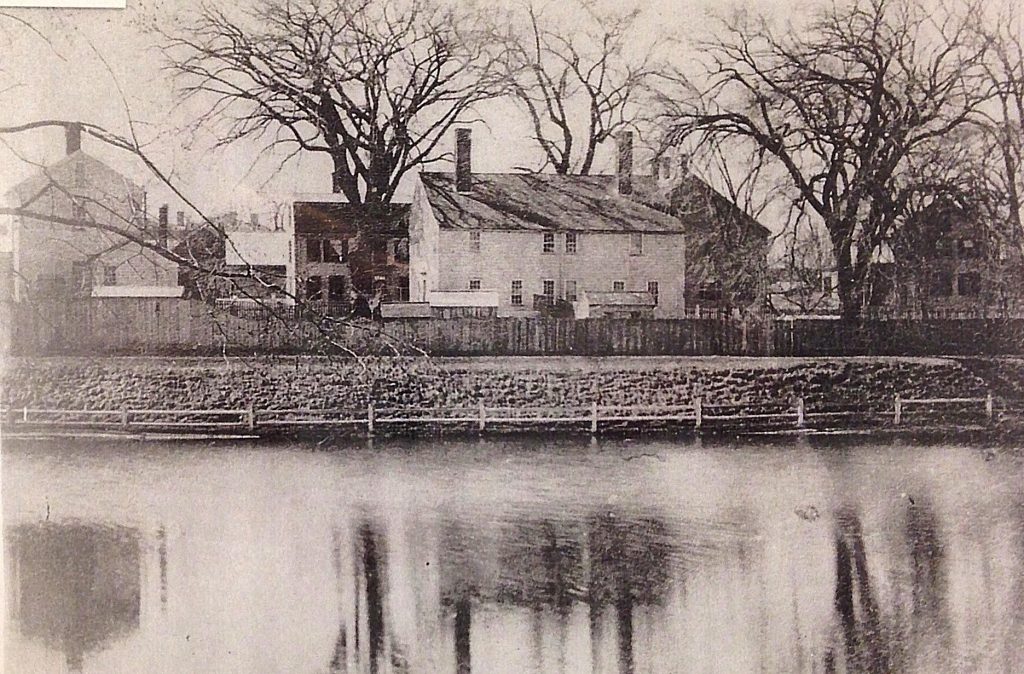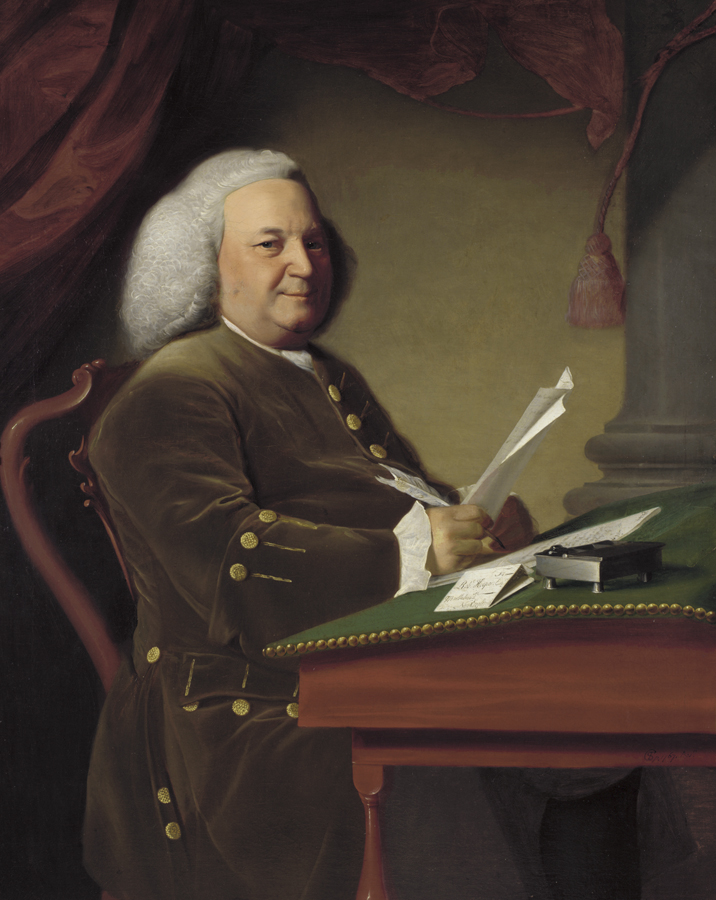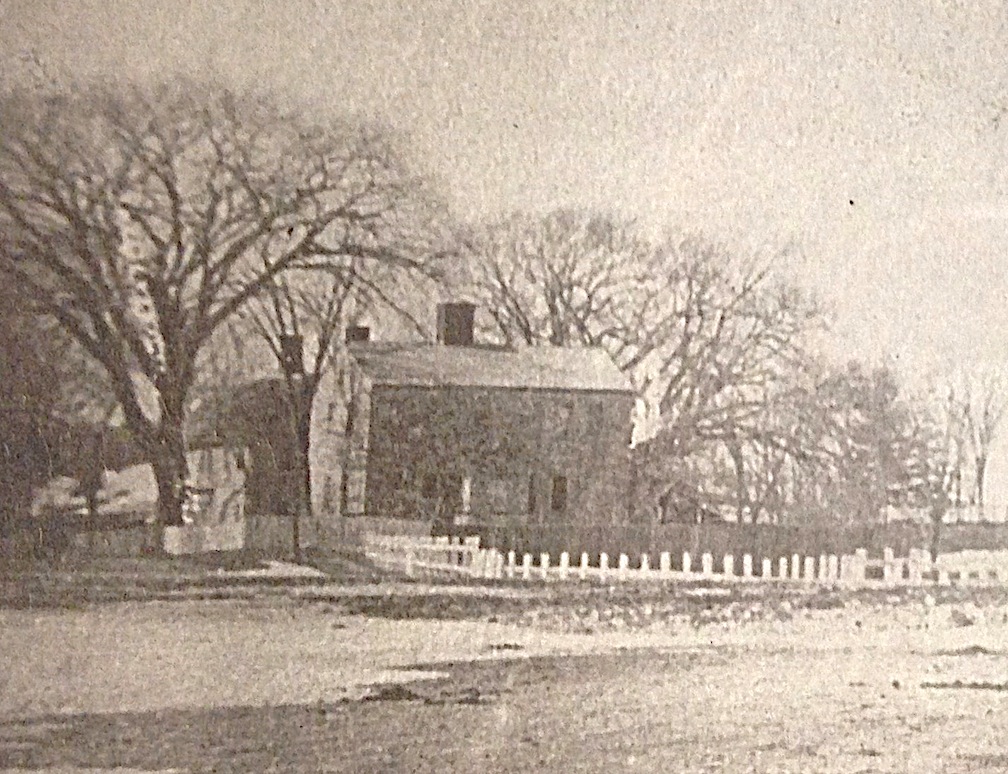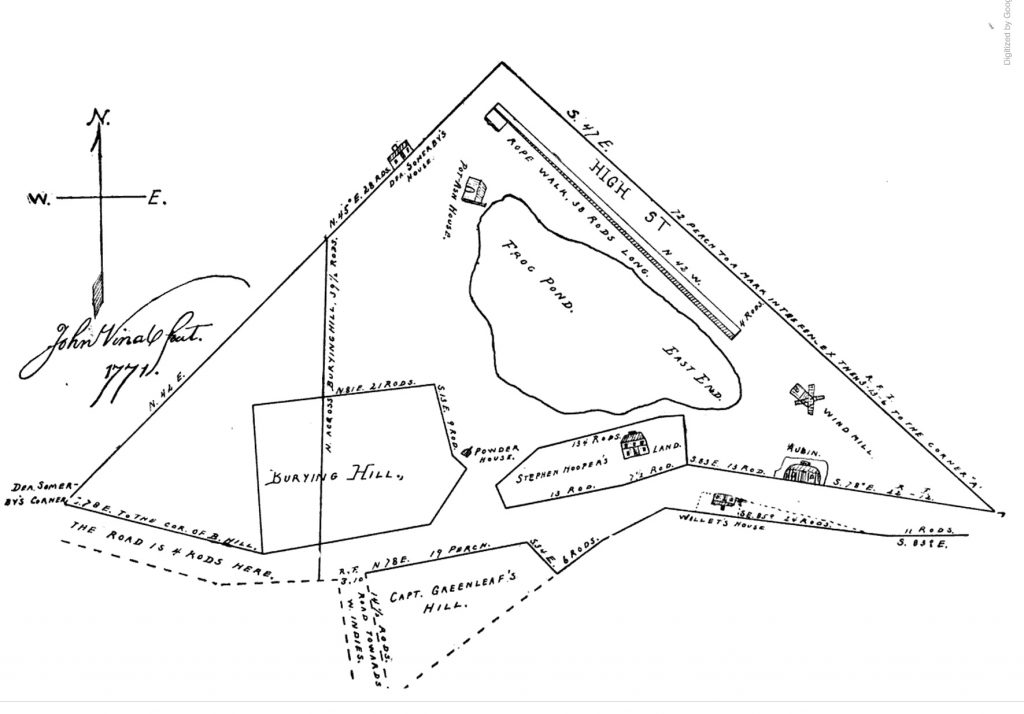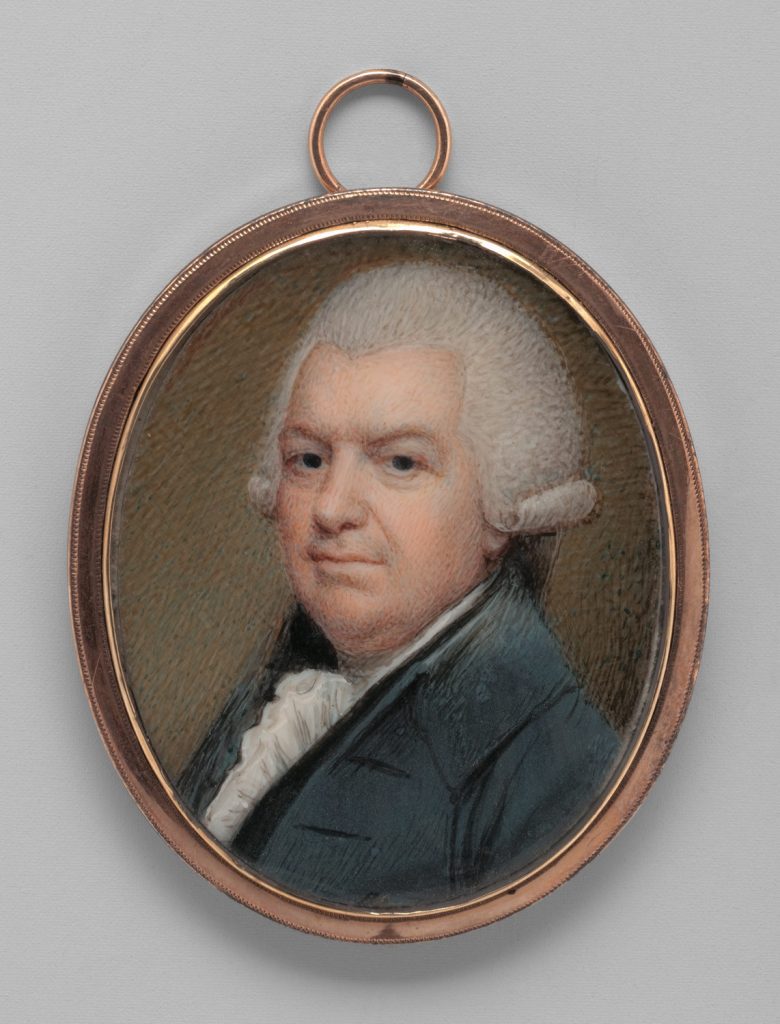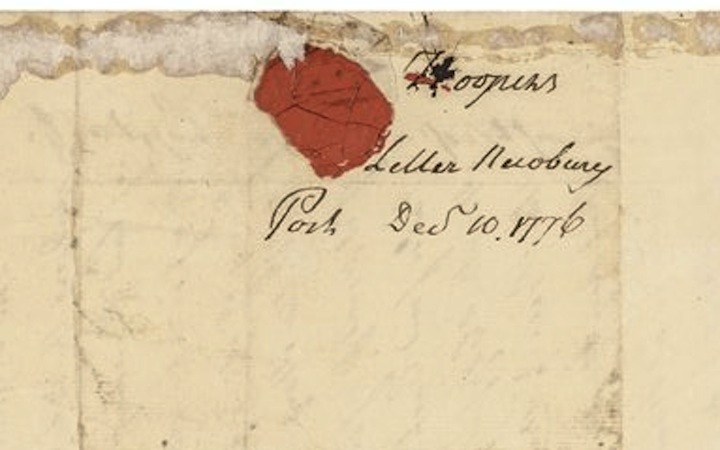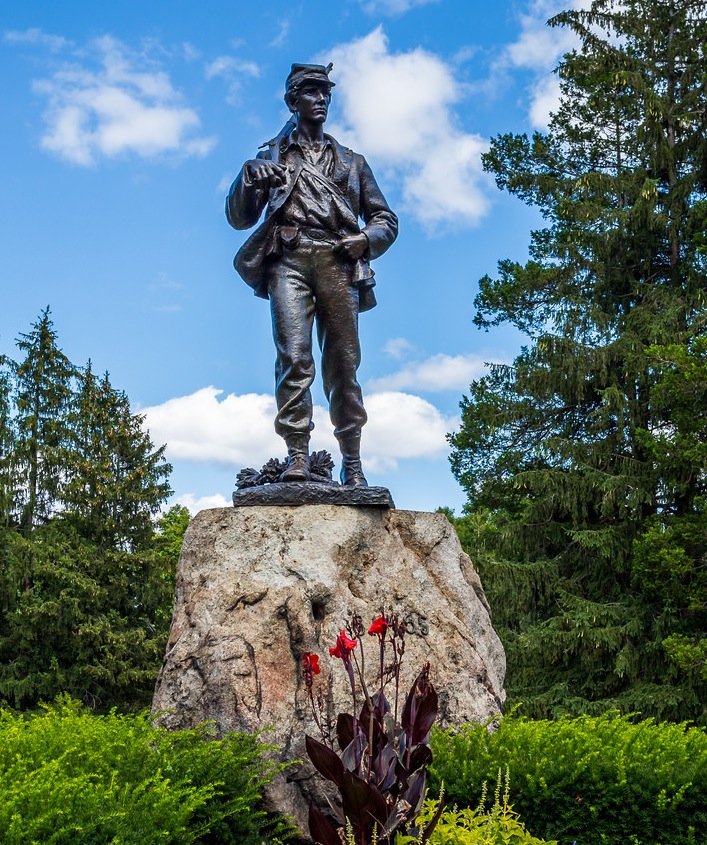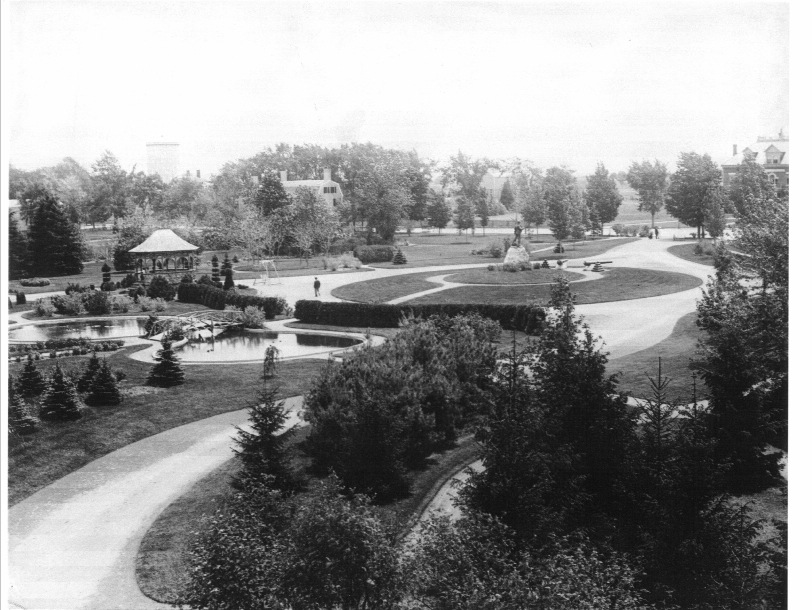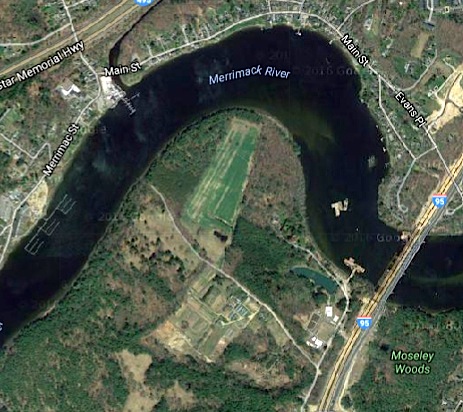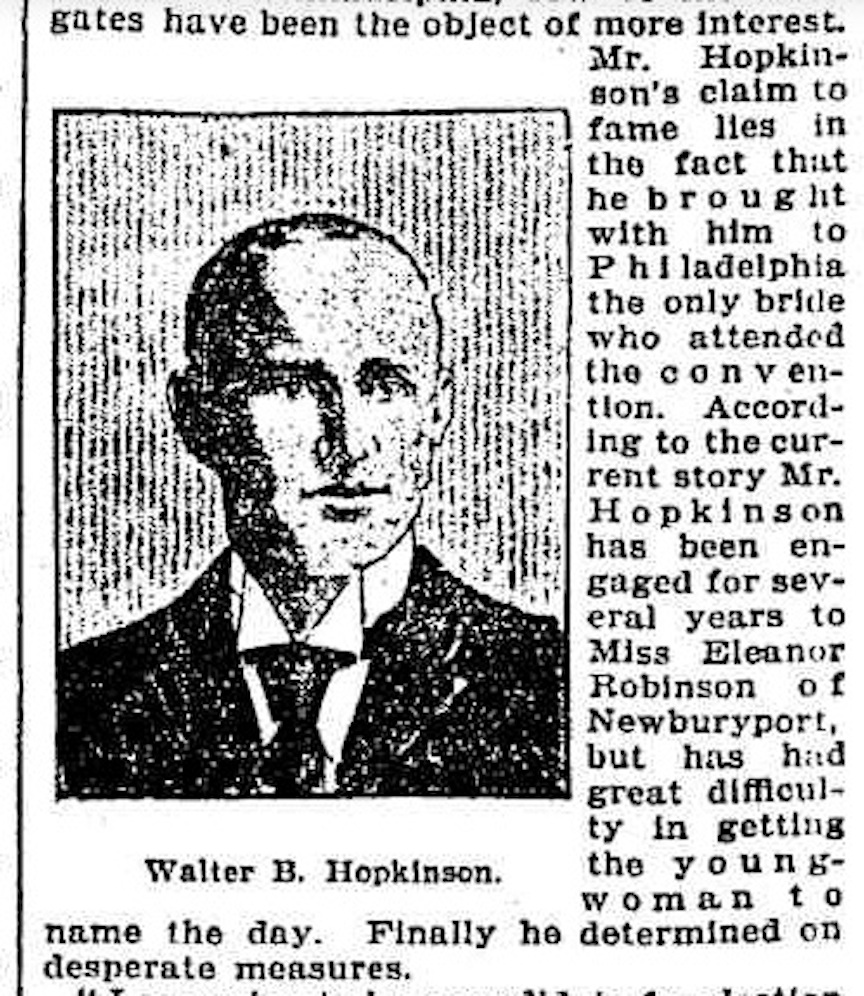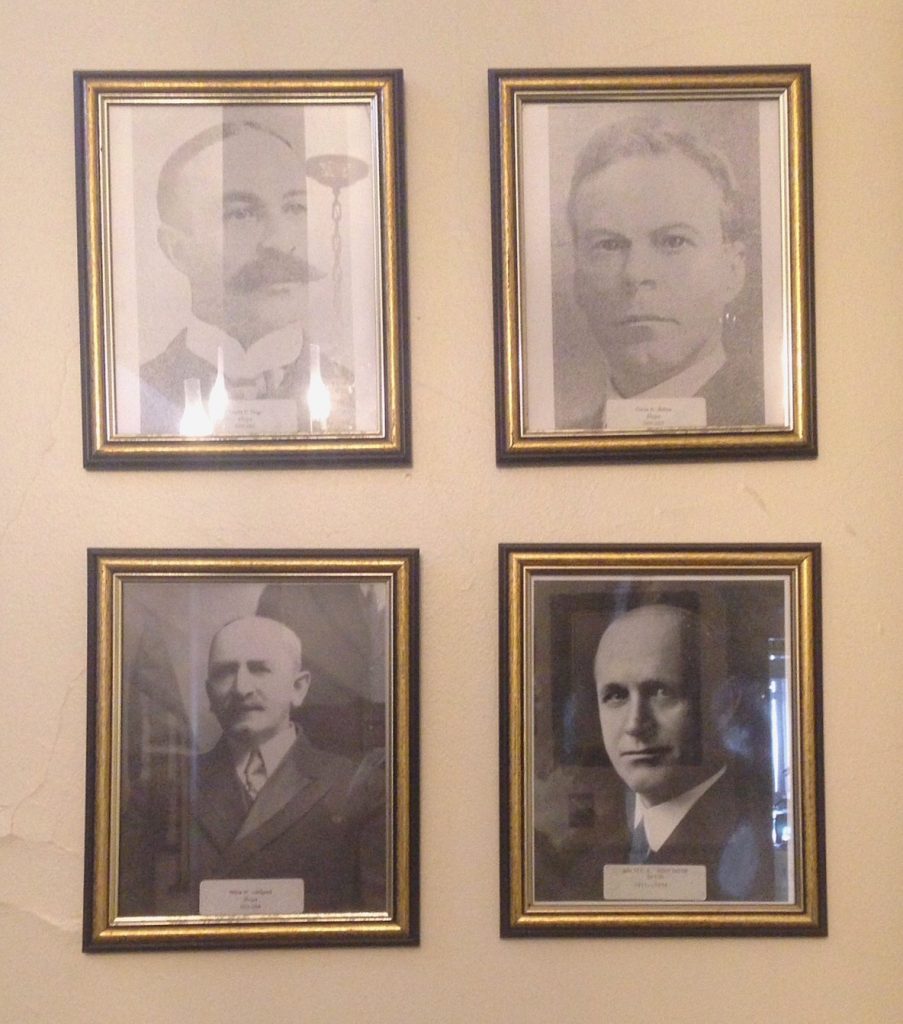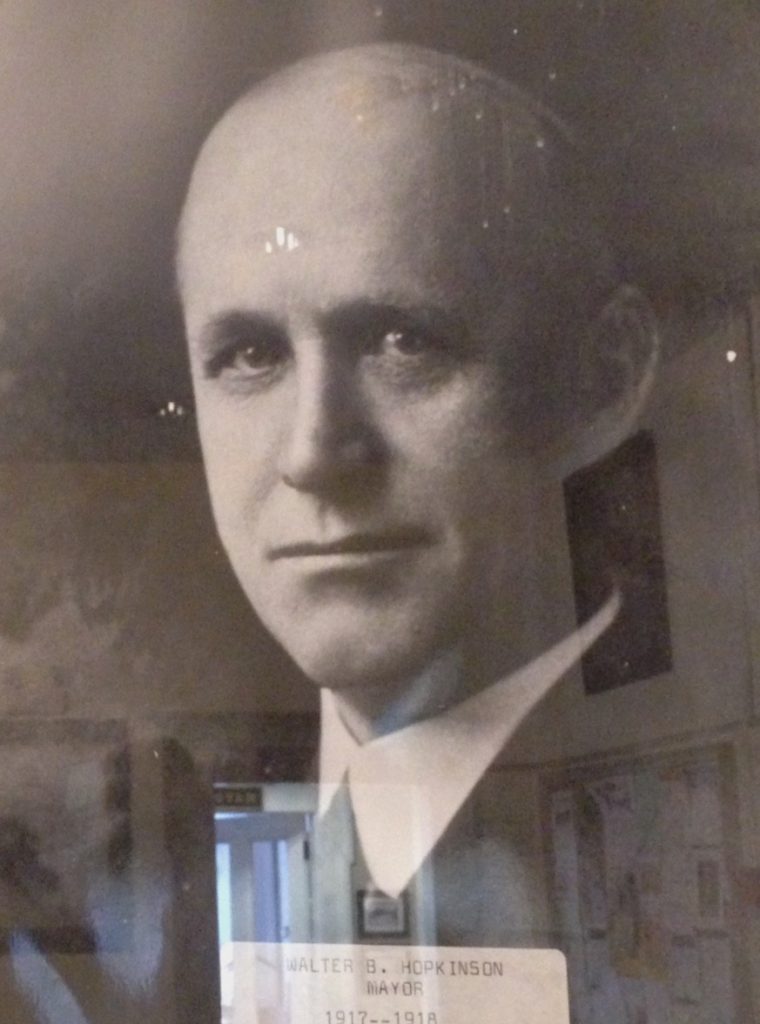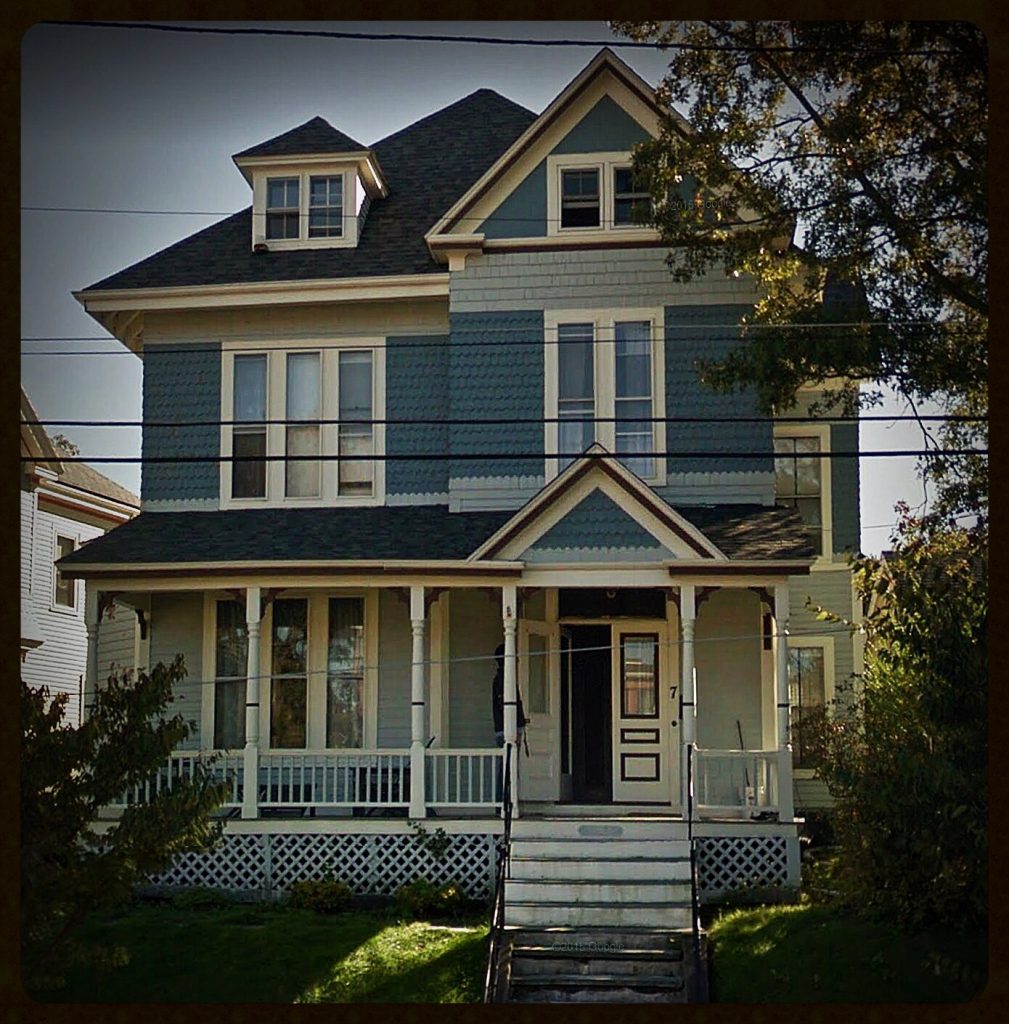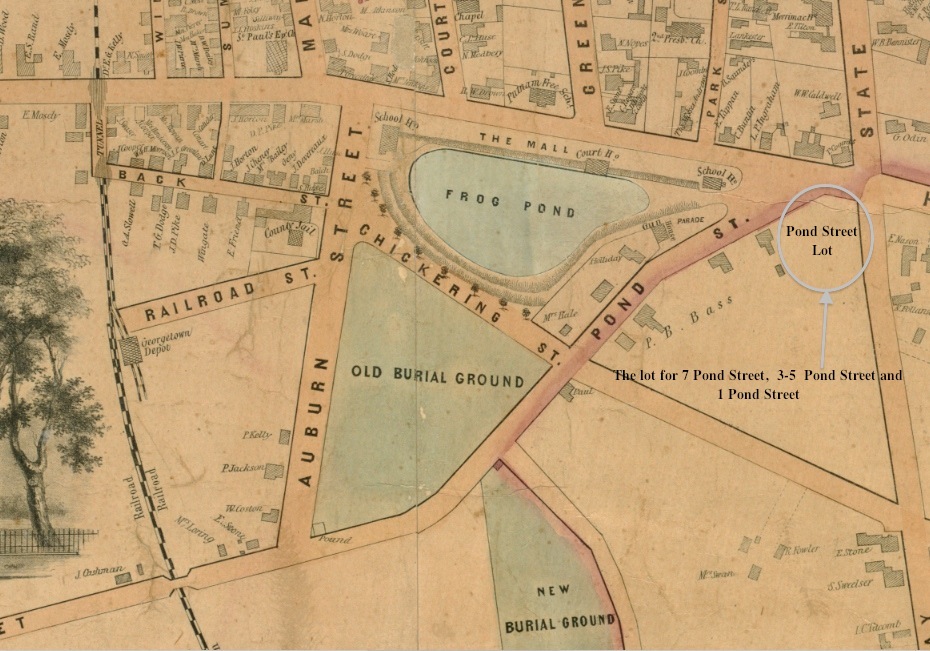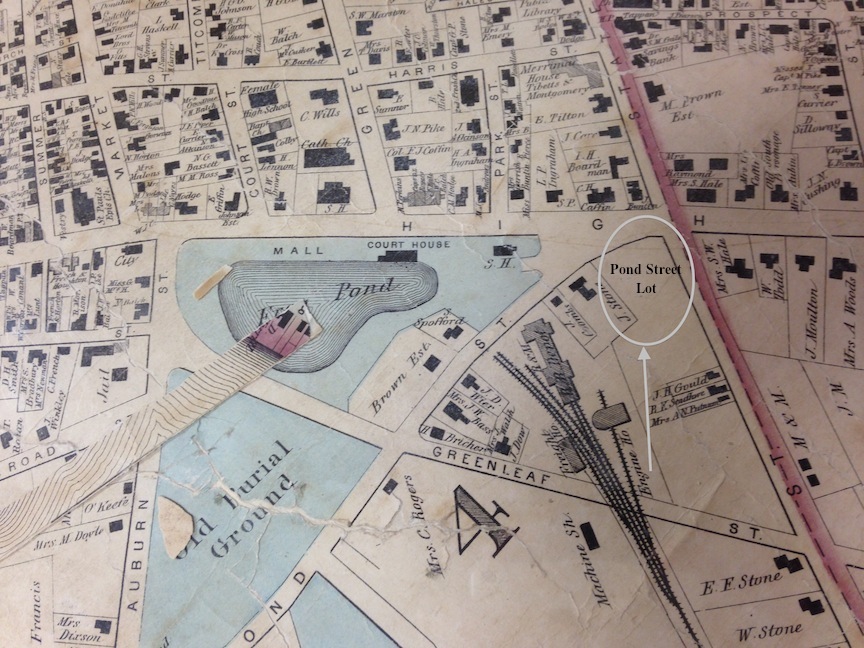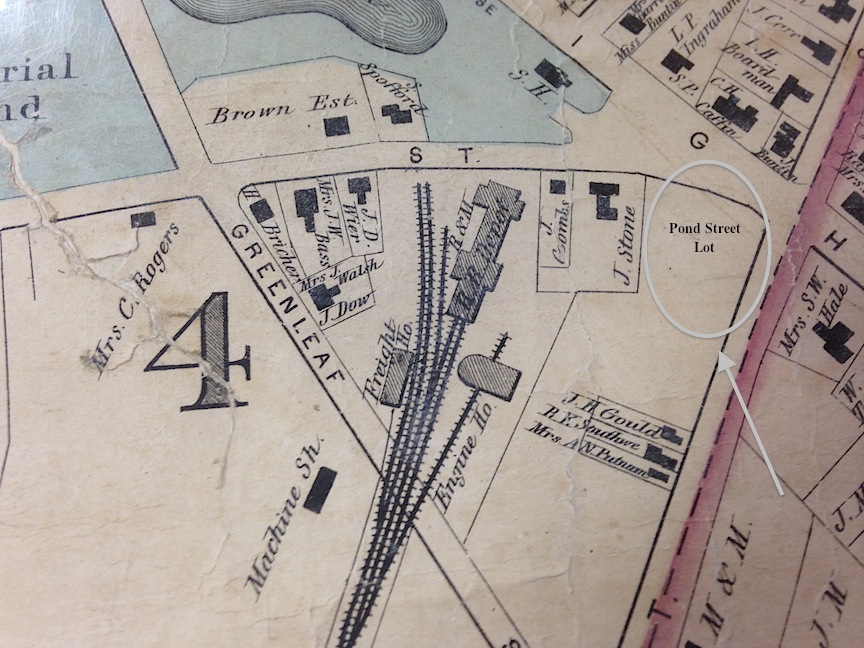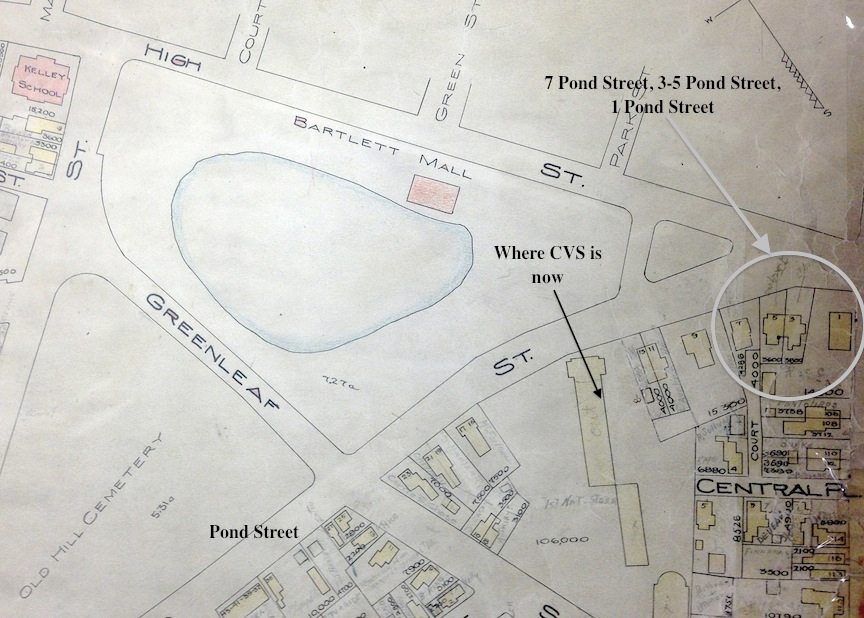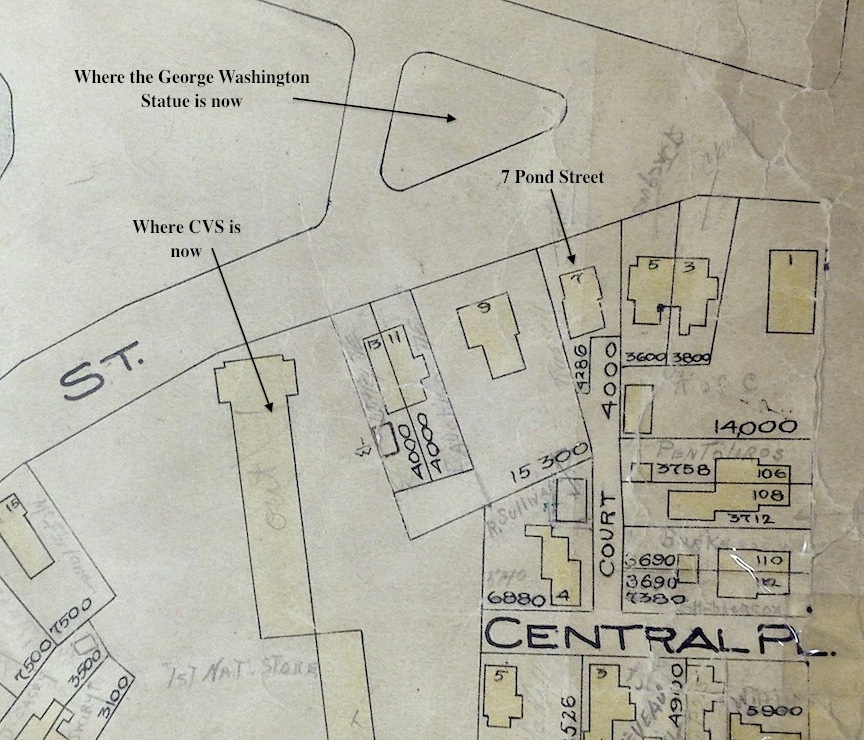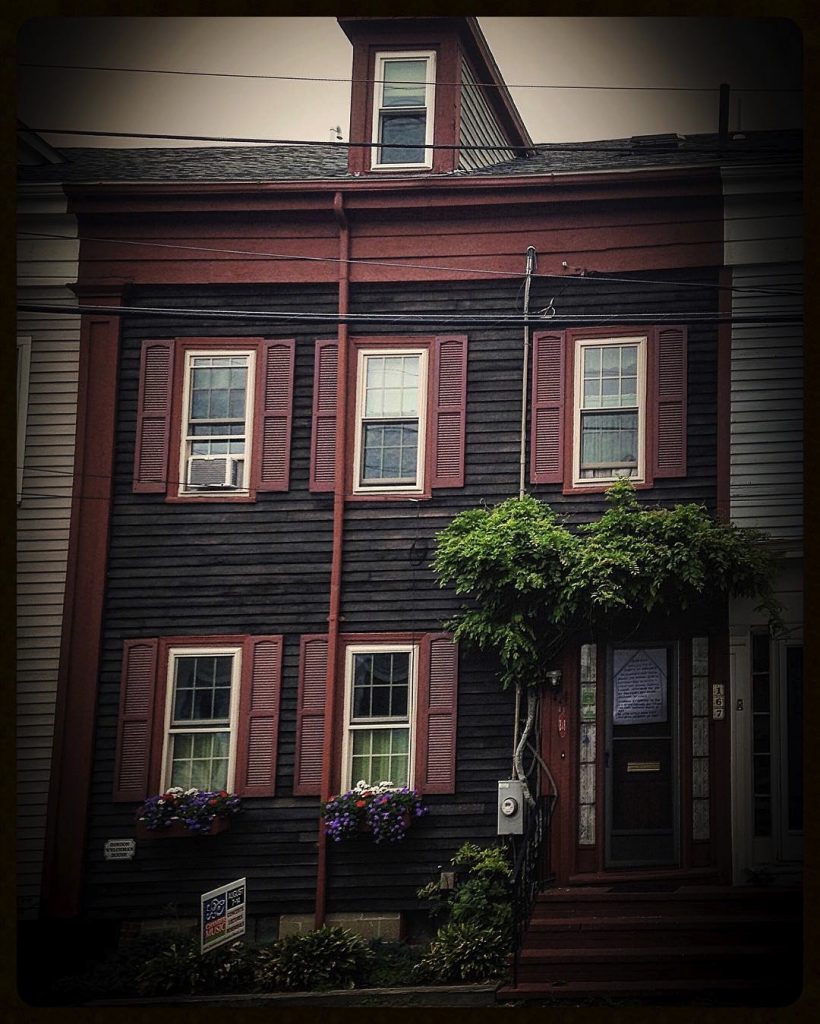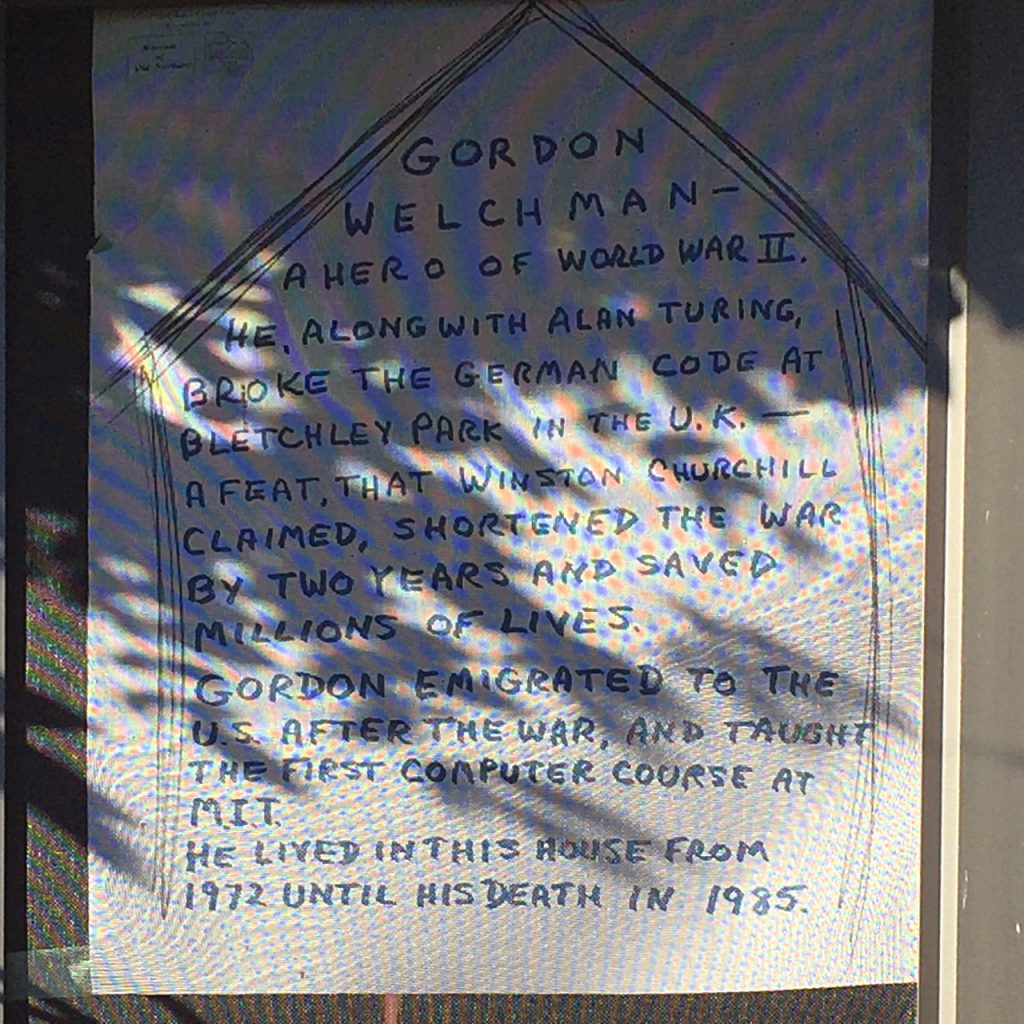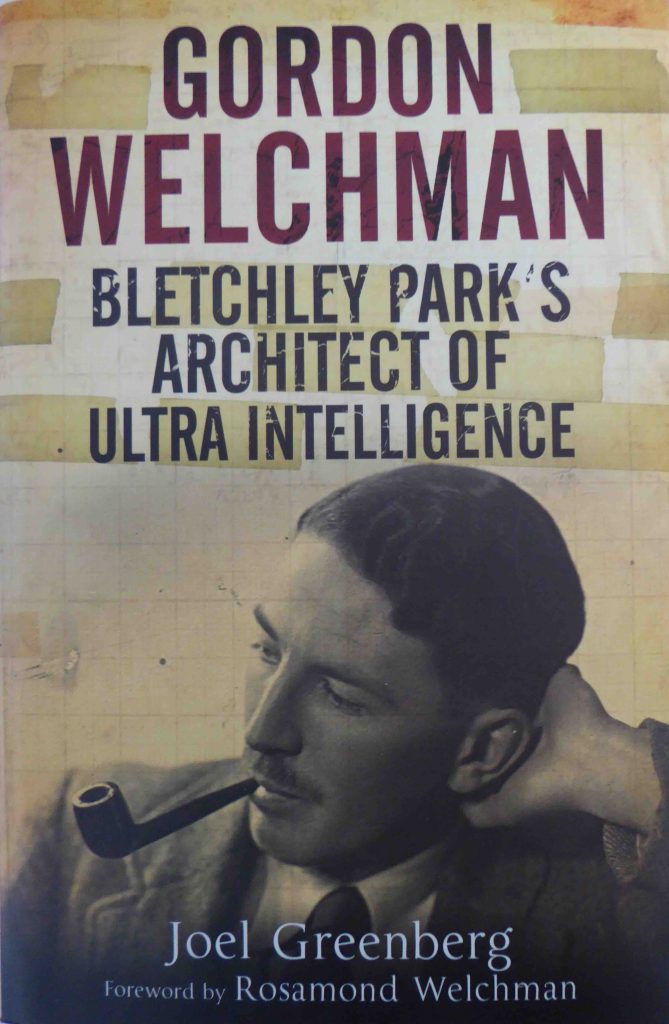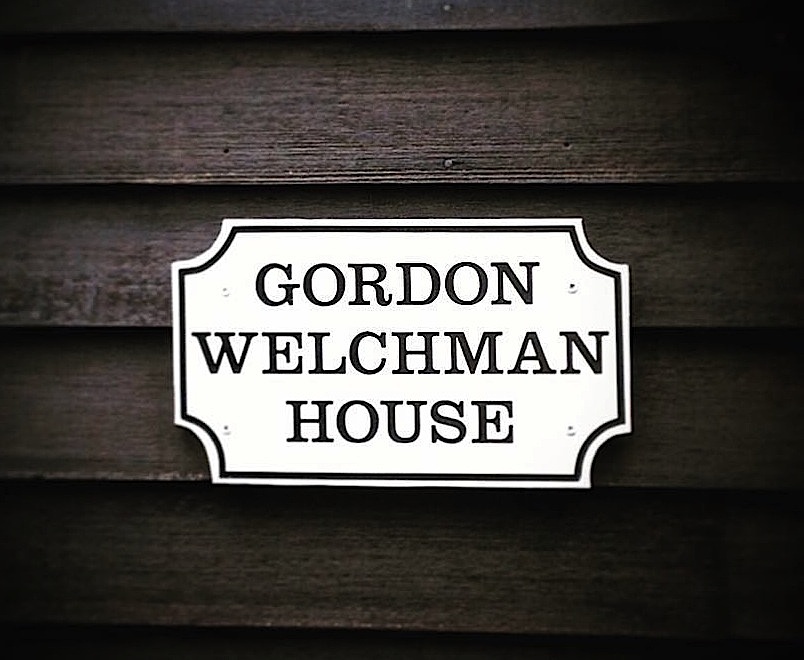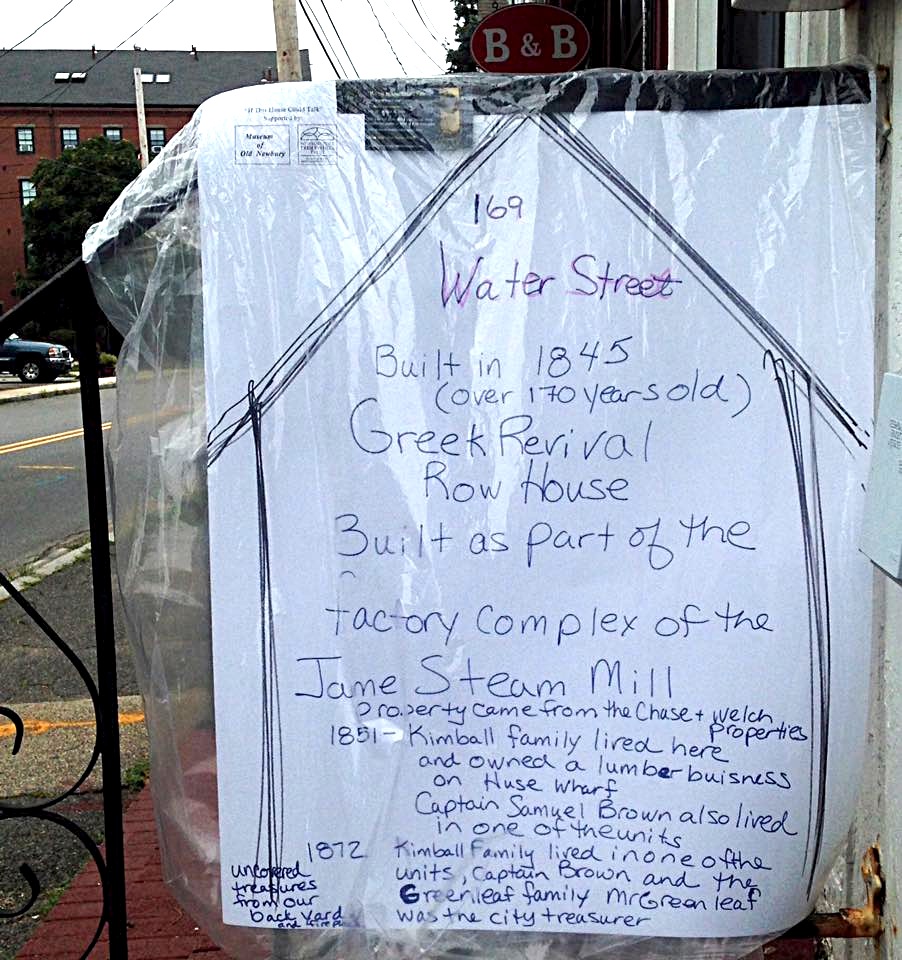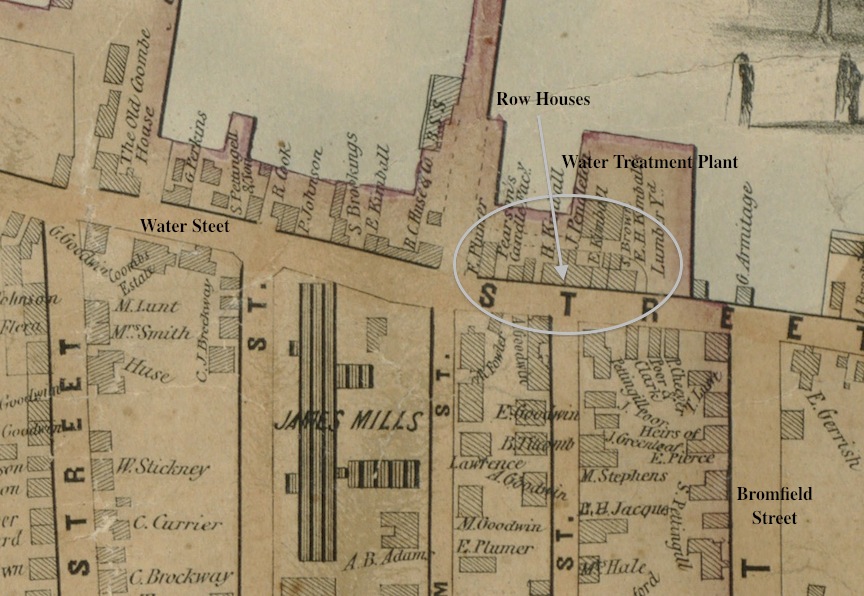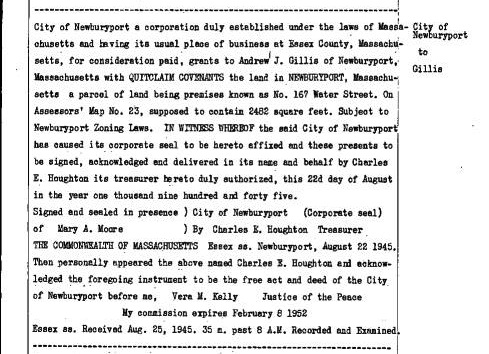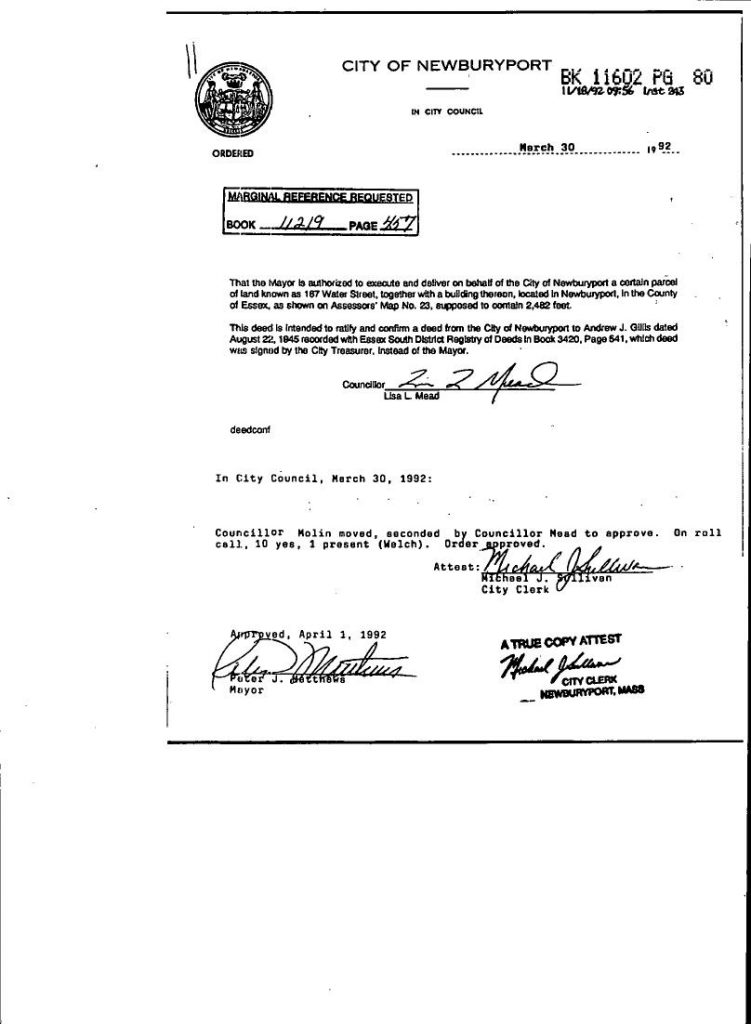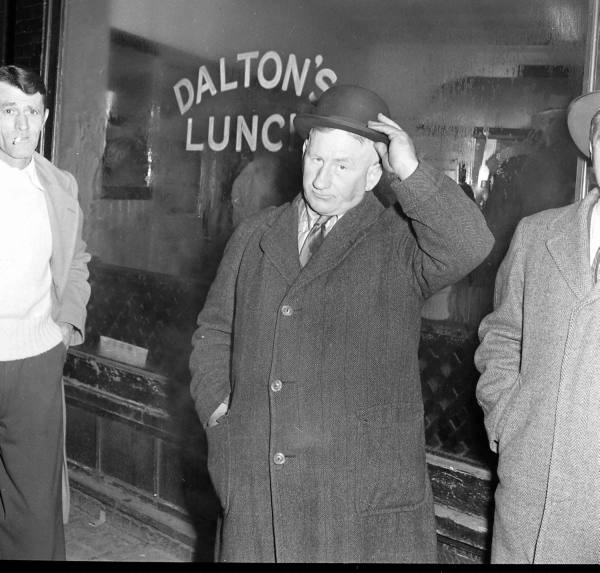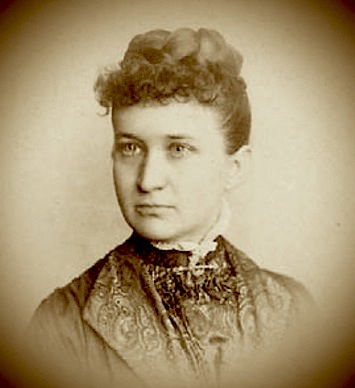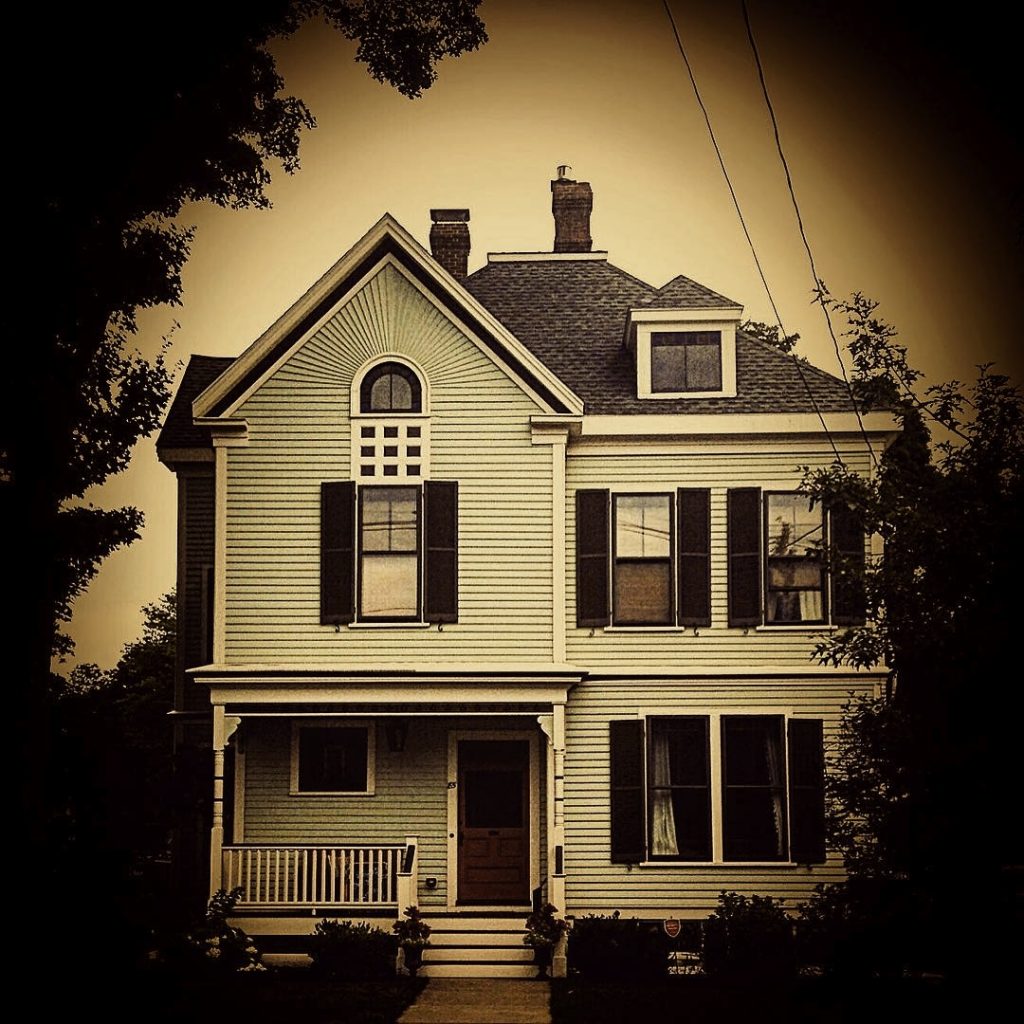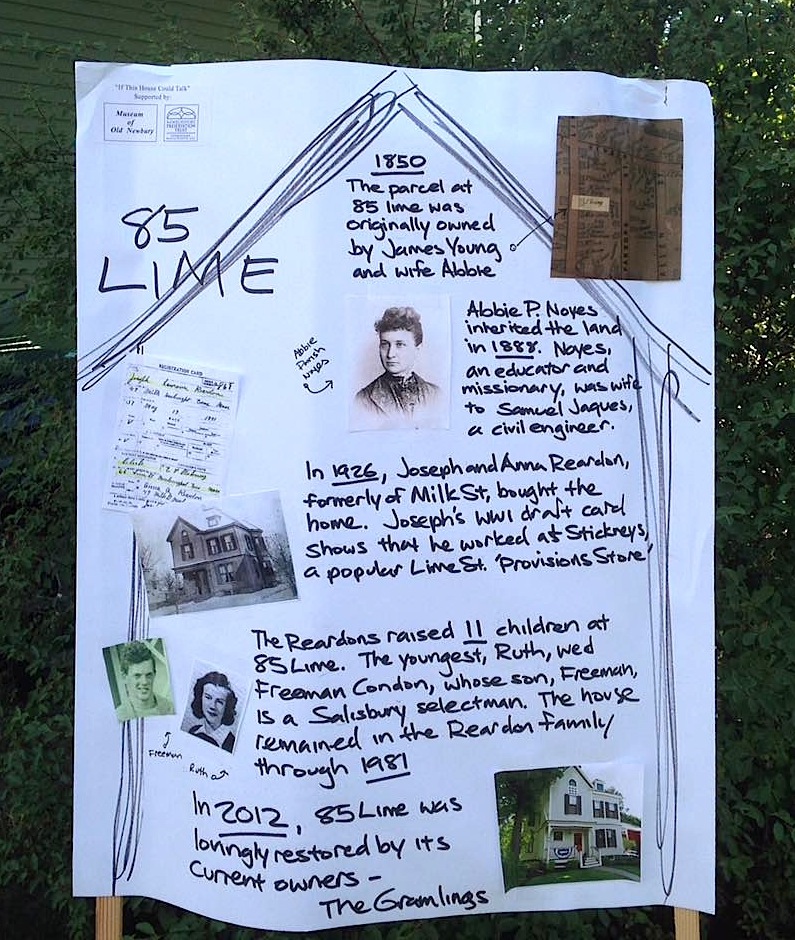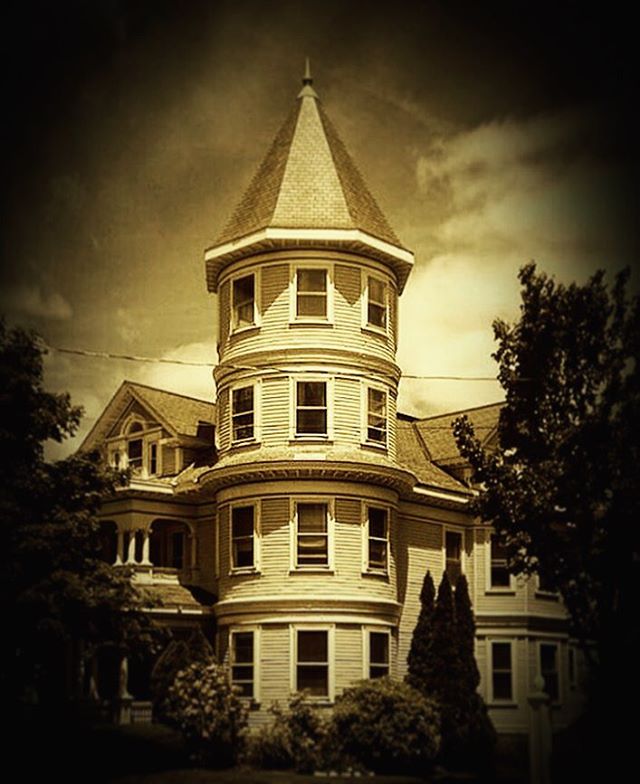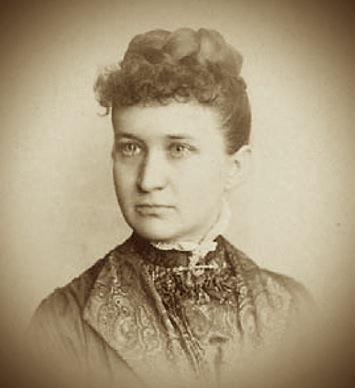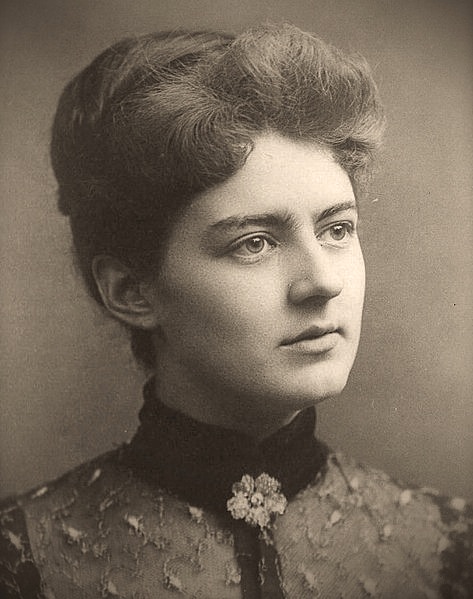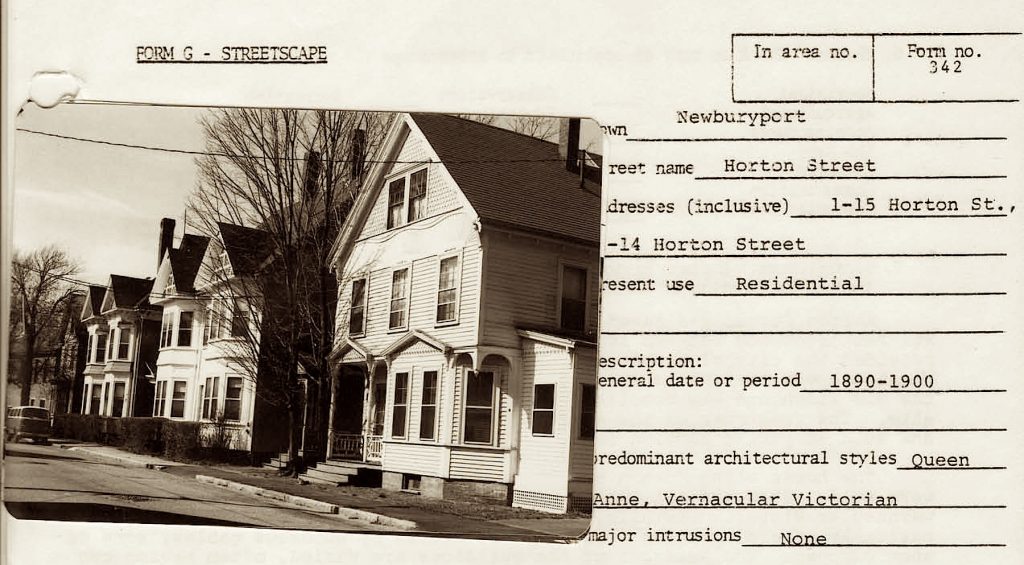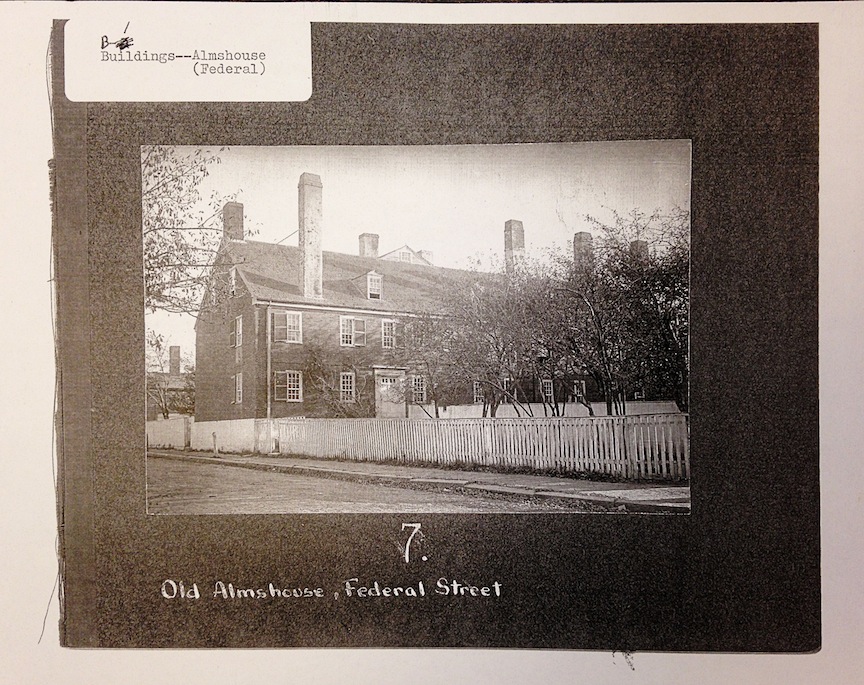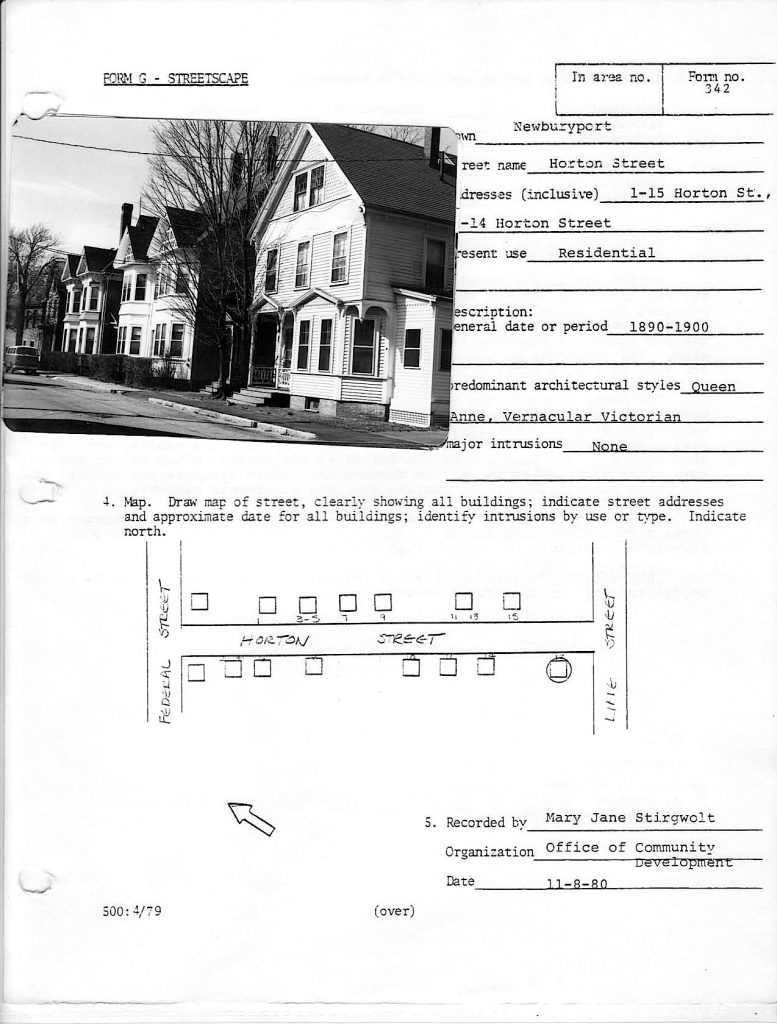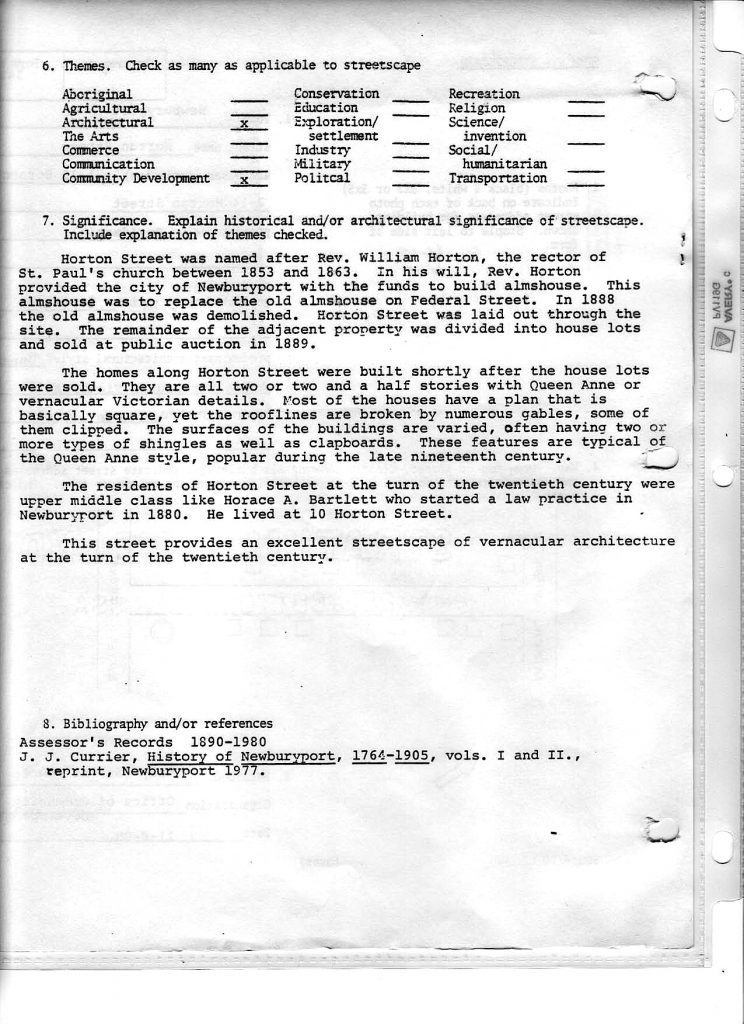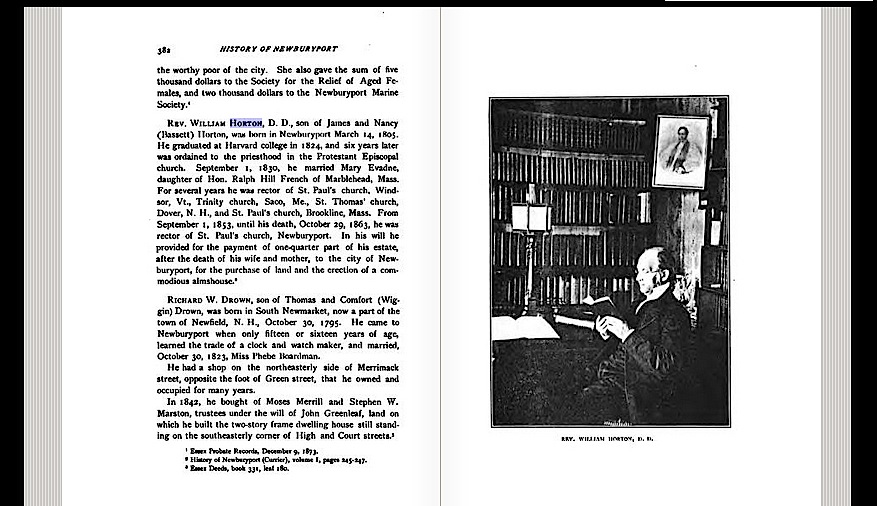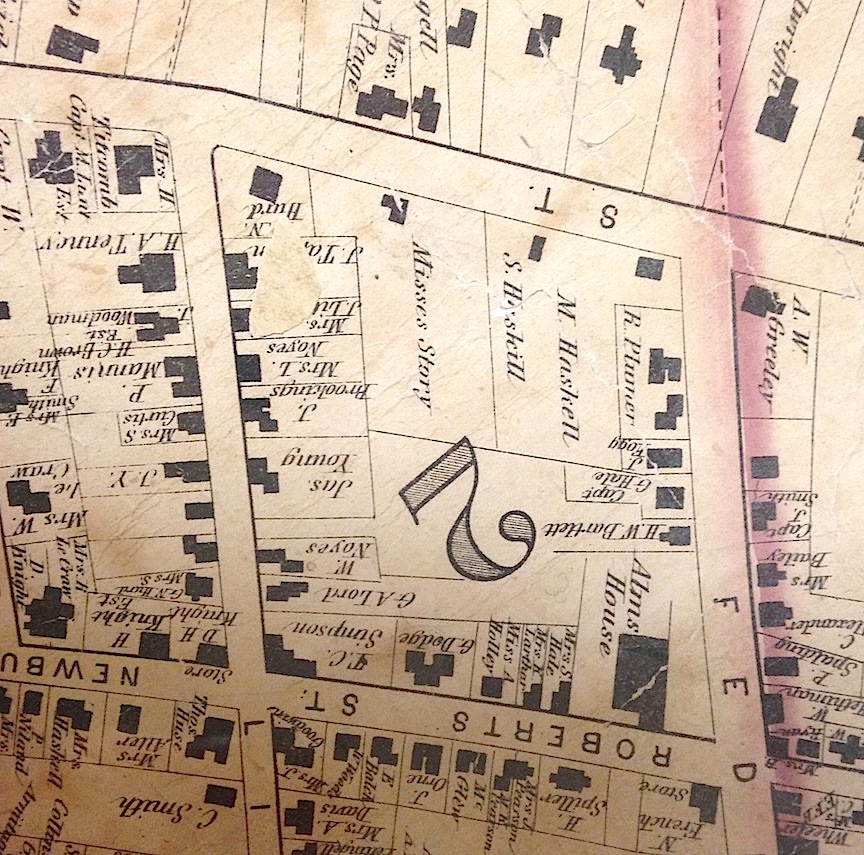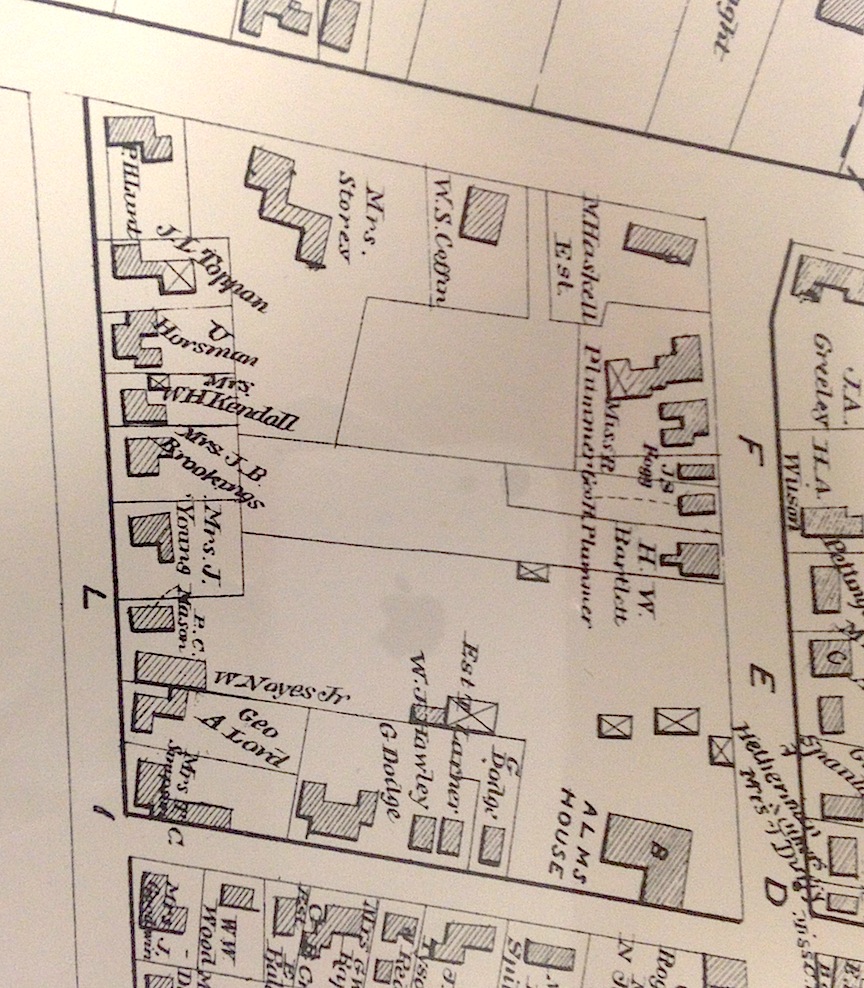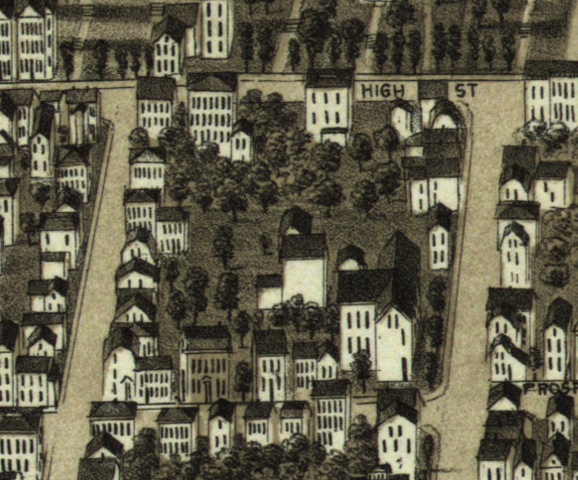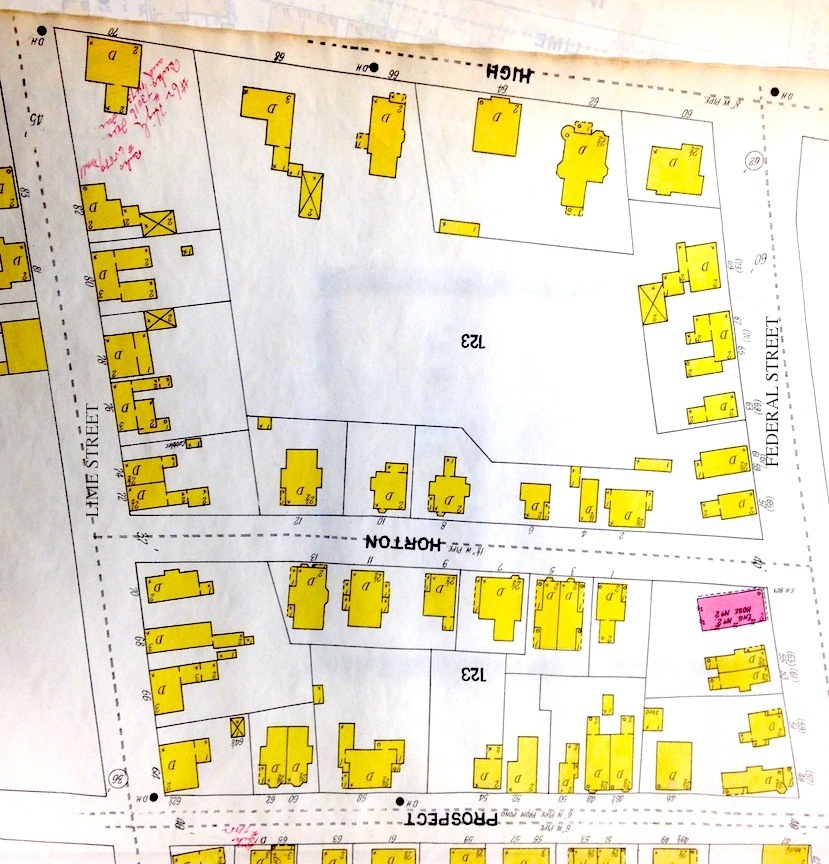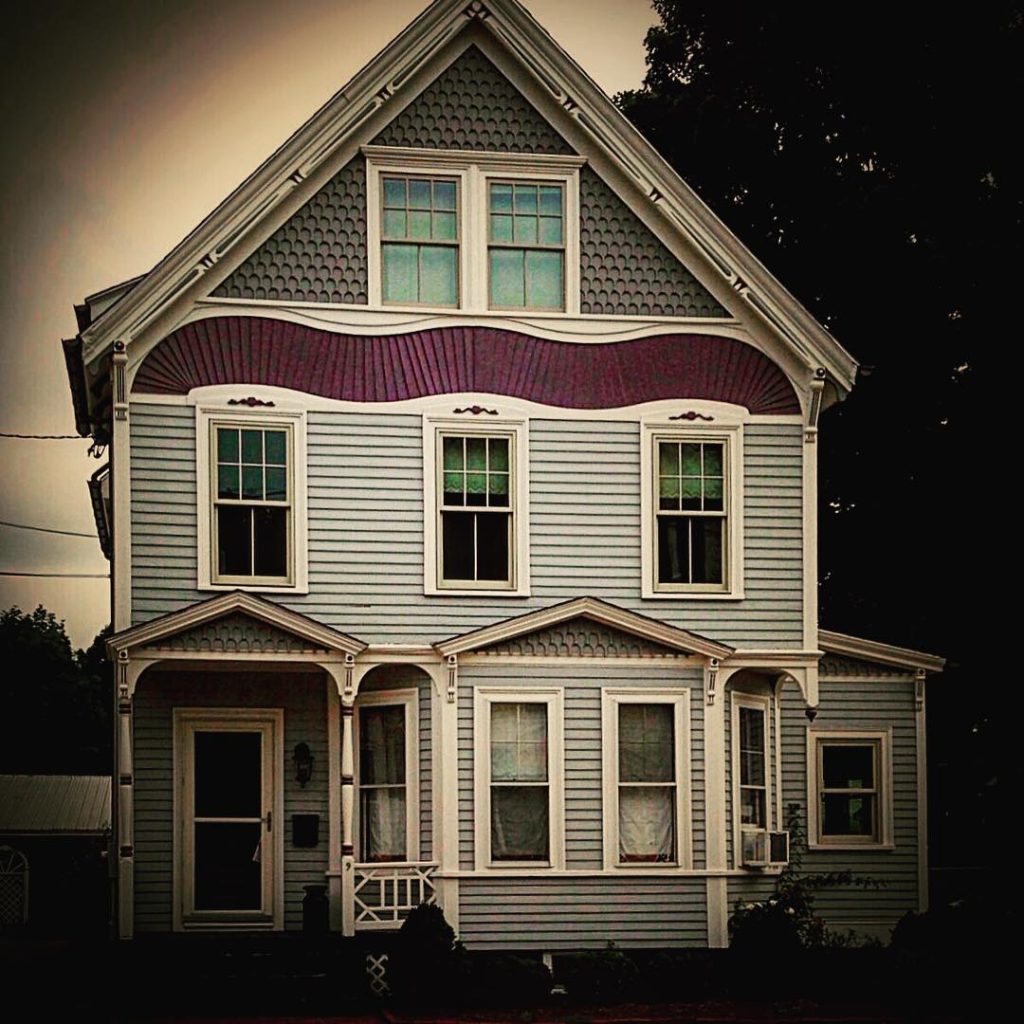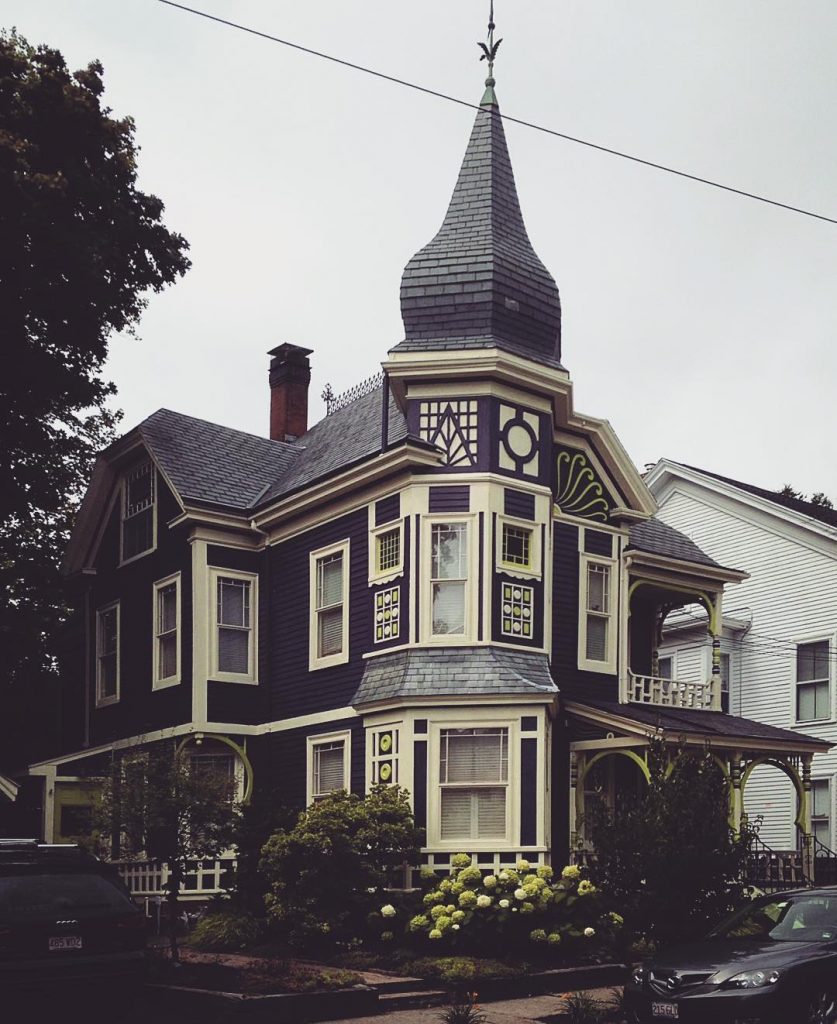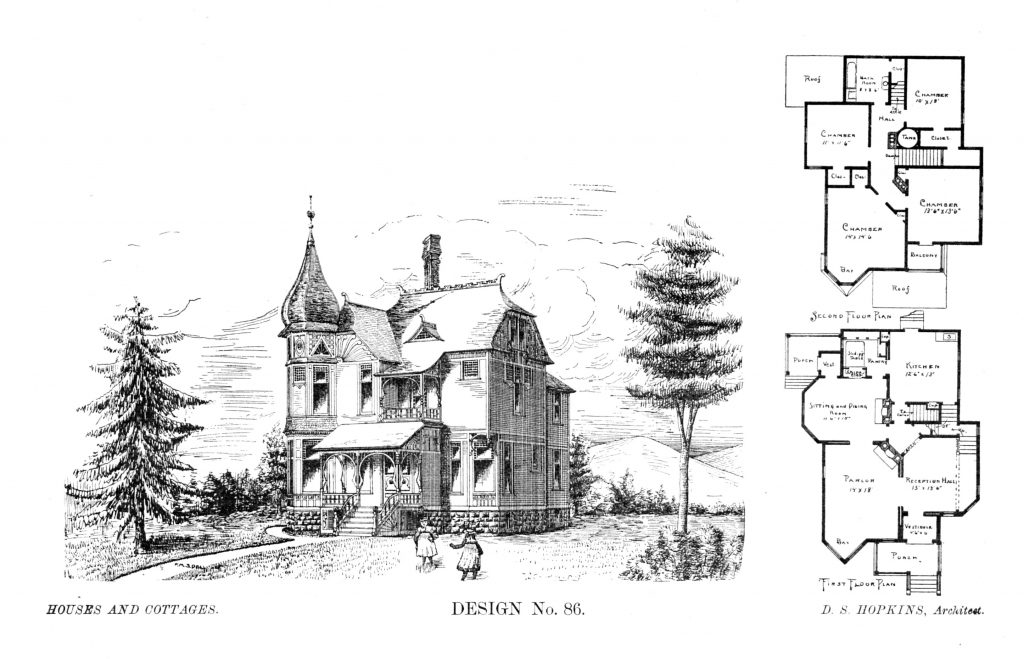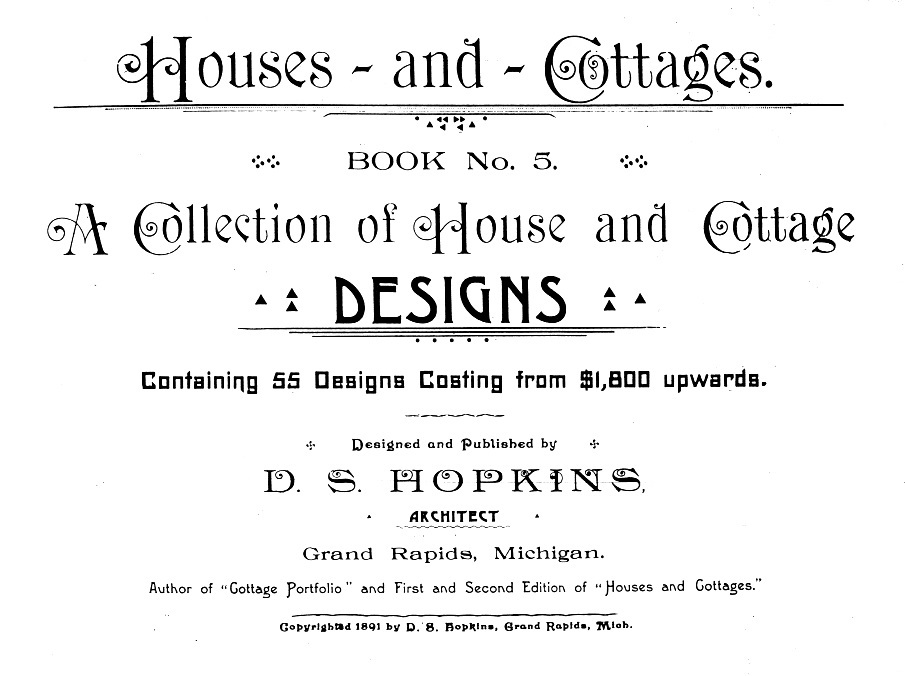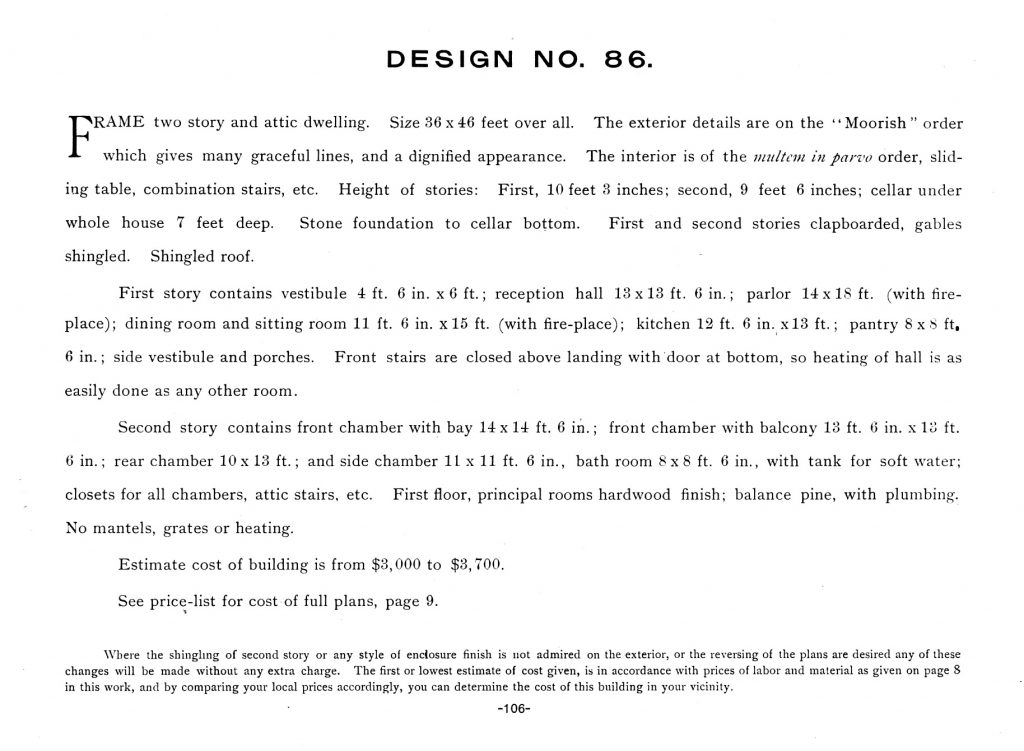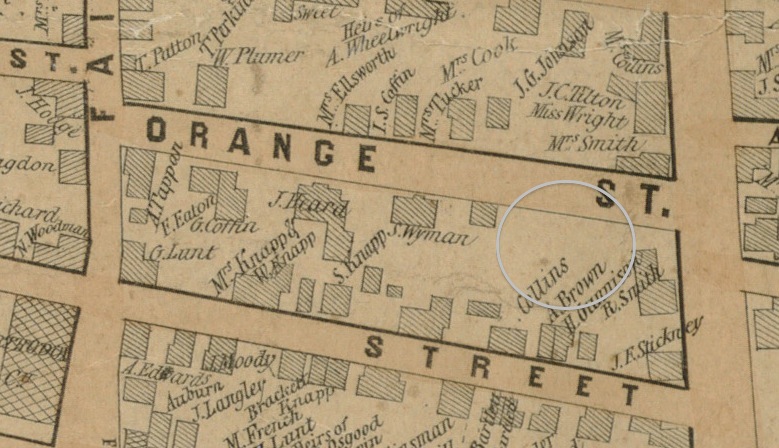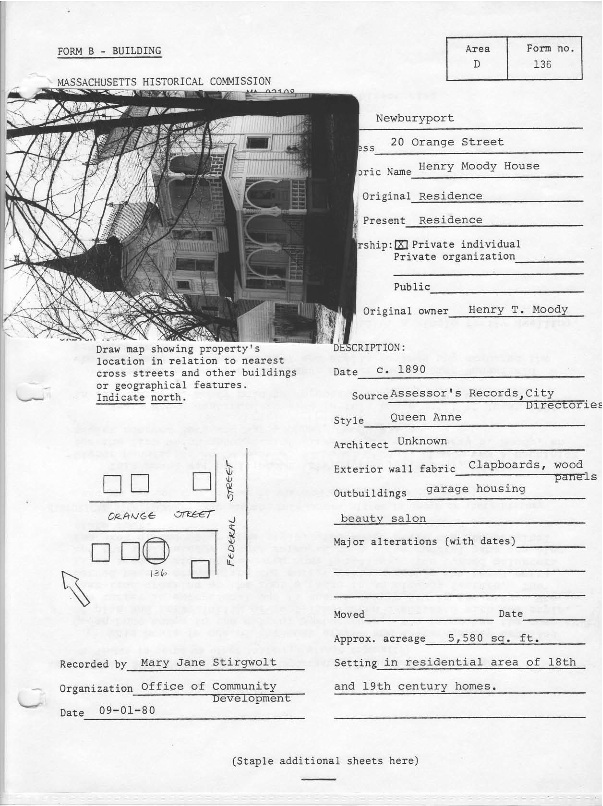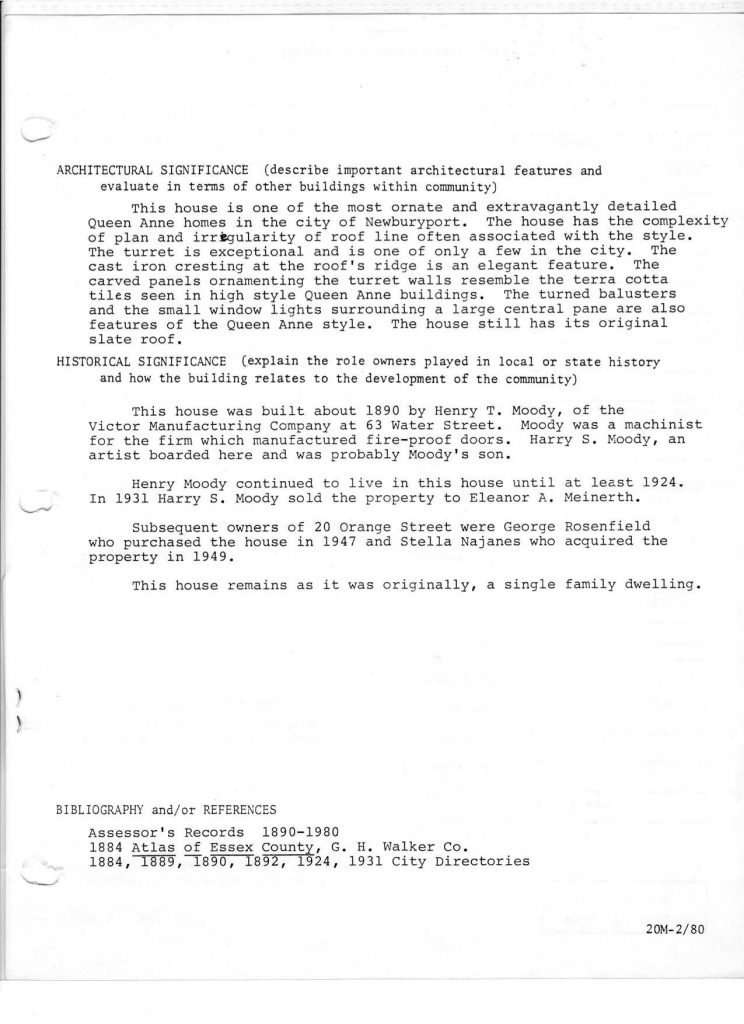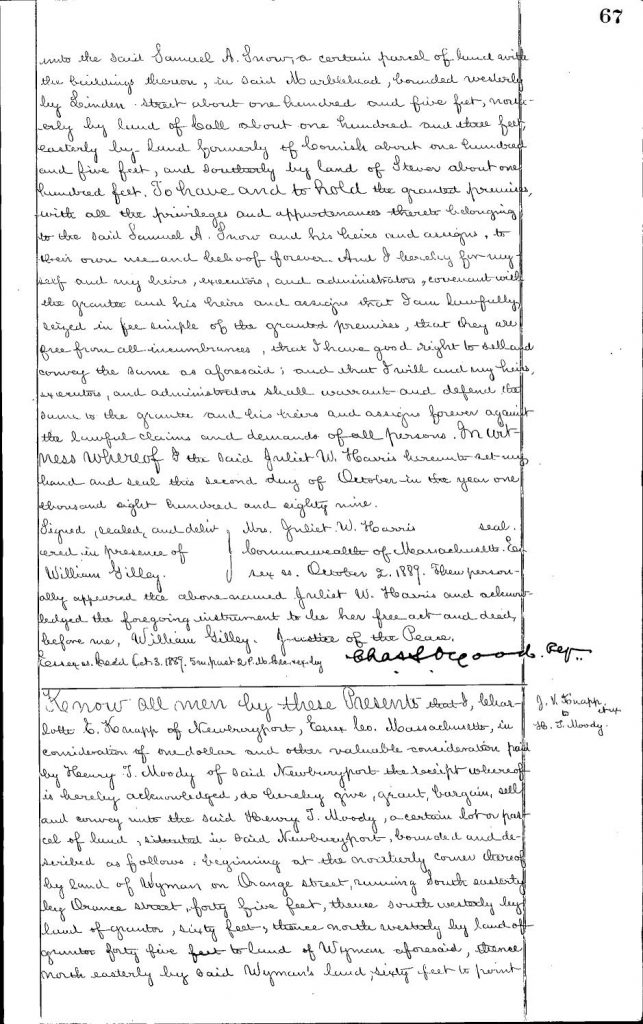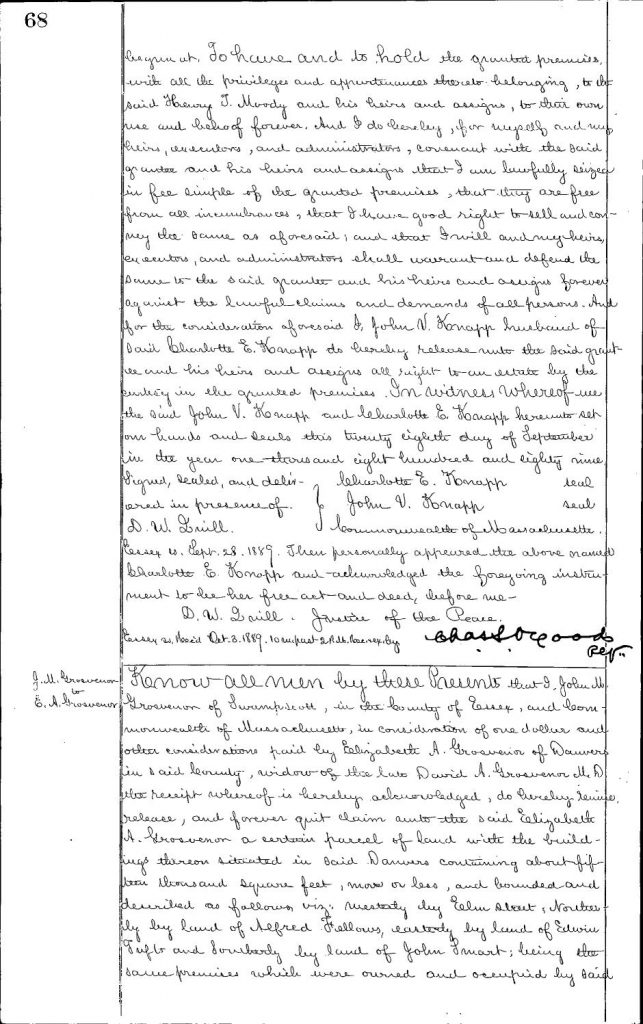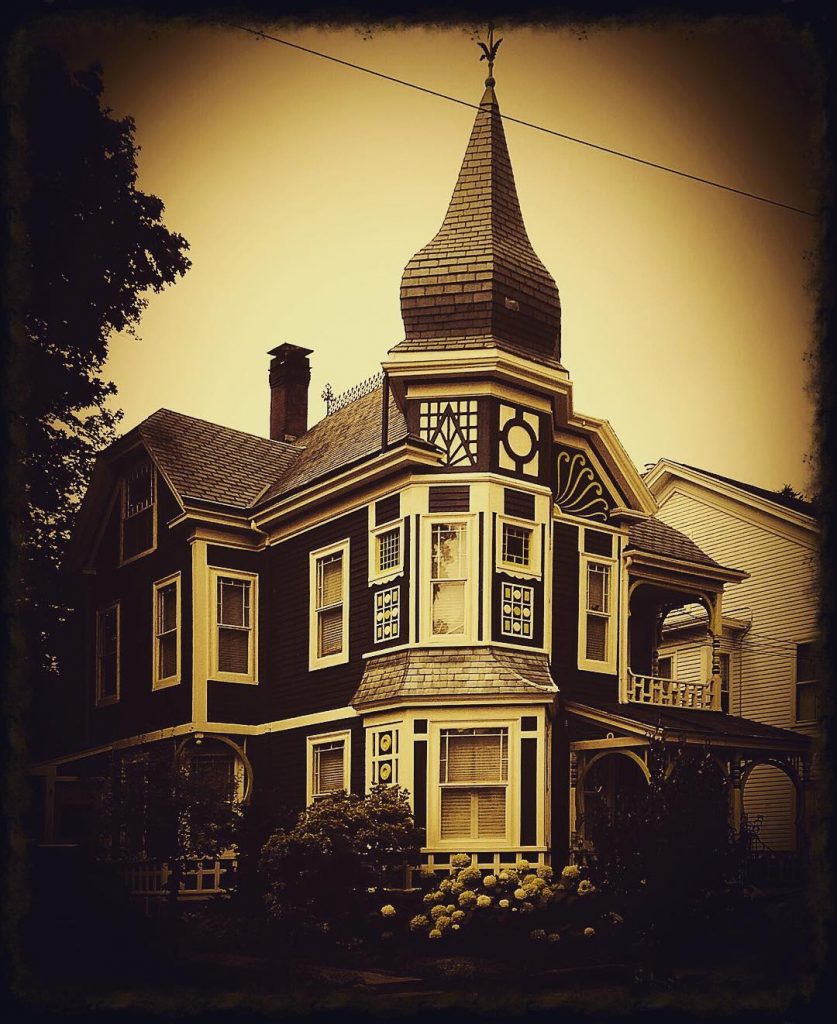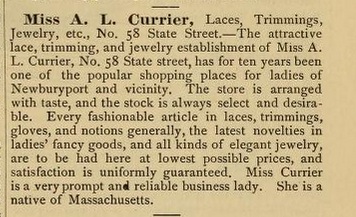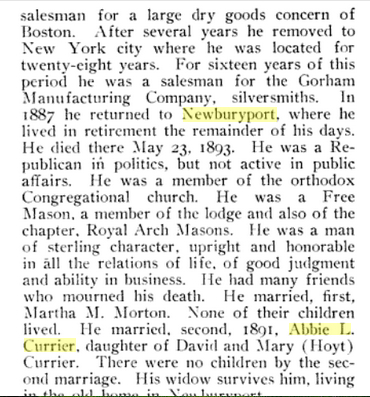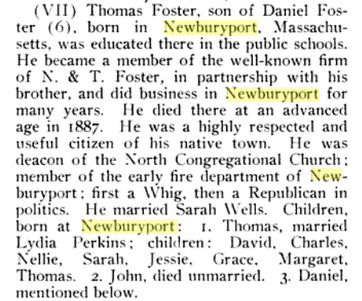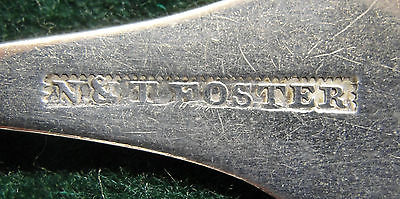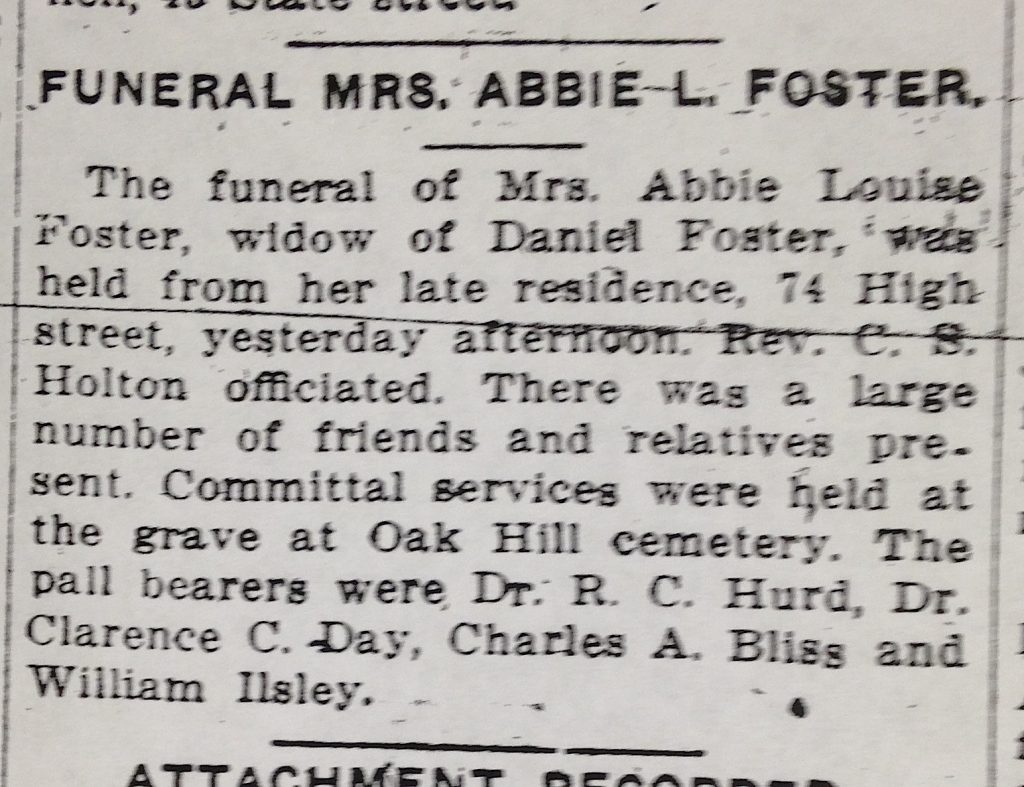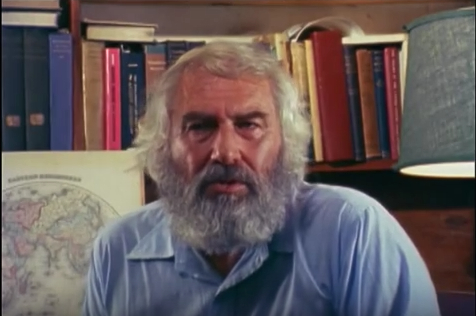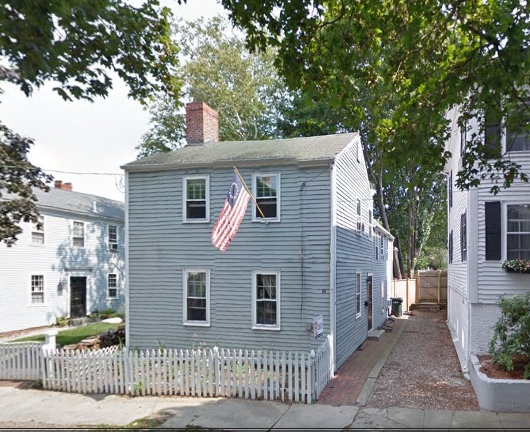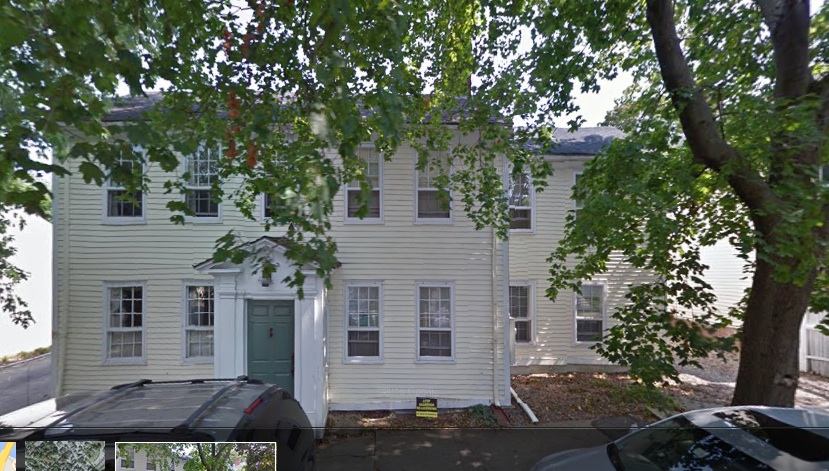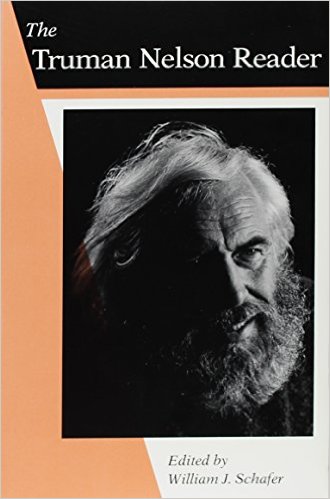Back in September when I did a story on 7 Pond Street I discovered all sorts of things about Pond Street and the Bartlet Mall that I never knew before. And one of those things is that there was once a railroad station where CVS is now located.
The 1851 Map of Frog Pond
In the 1851 Map of Frog Pond there are a bunch of houses between Frog Pond and Pond Street.
The 1872 map showing the Railroad depot.
In the 1872 map most of those houses still exist, but low and behold there is a train depot across the street where CVS is now located.
Detail of the 1872 map
The 1924 map of Pond Street
And in the 1924 map the houses between Frog Pond and Pond Street are now gone, but the building where CVS is now is still there.
A map of the rail road routes into and out of Newburyport, from Scott’s Railroad Archaeology Page
Fortunately Joe Callahan wrote an article in the Newburyport Daily News in 2009 with lots of information about the railroad station. Joe wrote that around 1853 the Boston and Maine Railroad took over the operation of the Newburyport Railroad Company and both passenger and freight service existed. The passenger depot building faced Pond Street and the Bartlet Mall. Around 1884 passenger service stopped on Pond Street and the depot was used only for freight.
This is a photograph of the Pond Street Depot from the New York Public Library.
Pond Street from the New York Public Library, The Miriam and Ira D. Wallach Division of Art, Prints and Photographs: Photography Collection, The New York Public Library. “Pond St.” The New York Public Library Digital Collections.
Detail of the passenger station depot with houses across the street courtesy of the New York Public Library
Second detail with the houses across the street (that are on the map) from the New York Public Library
The New York Public Library also has this photograph of the Pond Street houses.
Pond Street houses, courtesy of the New York Public Library
And yes indeed they match exactly the photograph that we have in the Newburyport Public Library of the houses that once belonged to Stephen Hooper (see earlier post).
Pond Street houses courtesy of the Newburyport Archival Center
All of which is pretty cool.
And the Newburyport Public Library also has a photograph of the B&M Passenger Station in the Archival Center.
Passenger station courtesy of the Newburyport Archival Center
A second photograph of the train station across from Frog Pond courtesy of the Newburyport Archival Center.
By 1921 the train station looks like it had fallen on harder times. This photograph is from a book published in 1921, “The Boston and Maine Railroad; a history of the main road, with its tributary lines,” by Francis Boardman Crowninshield Bradlee.
The Newburyport train station in 1921
Joe Callahan writes that, “The original passenger depot building that faced on Pond Street was purchased in 1928 by “Bossy” Gillis and moved to Dalton Street. It was demolished several years later.”
On February 21, 1935, according to Joe, “The new B&M “Flying Yankee” streamliner arrived at the Pond Street yard and opened for public inspection. The Daily News reported 6,000 people boarded and viewed its lavish interior.”
The Flying Yankee was a very big deal.
Photograph of the Flying Yankee
A ticket for the Flying Yankee between Boston and Newburyport
A menu for the Flying Yankee
There was no kitchen or dining car for food preparation on the train, passengers ate at their seats with trays similar to airline service. The food for the train was provided by the Armstrong Company.
The Boston and Maine Timetable 1943
According to Joe, “There was an old wooden roundhouse at the Pond Street yard, and upon the elimination of the passenger service, it was moved to face Greenleaf Street. In March 1908, Glen Mills Cereal Company of Rowley leased the structure and operated for many years making flour. The mill, under different owners, ceased operations in the early 1940s. Both Hytron and C. Leary Bottling Company leased the building for storage for many years following the mill operations.”
Joe writes that, “Back in the 1940s, there were always 10 or 12 freight cars at the depot. New cars arrived almost daily and were immediately unloaded.” And “With the decline of the railroads in the 1950s, the Pond Street site was closed and sold to the First National Supermarket chain. The last freight train out of Pond Street was in late 1954.
The freight house and the mill were demolished in the summer of 1955 and the tracks removed then as well. The First National opened in October 1956, expanded with an addition in April 1968 and closed in July 1980. A couple other food stores operated for short periods of time, but were unsuccessful before giving way to the busy CVS.”
